37,000 miles to New Places, New Peoples, New Worlds and New Understandings
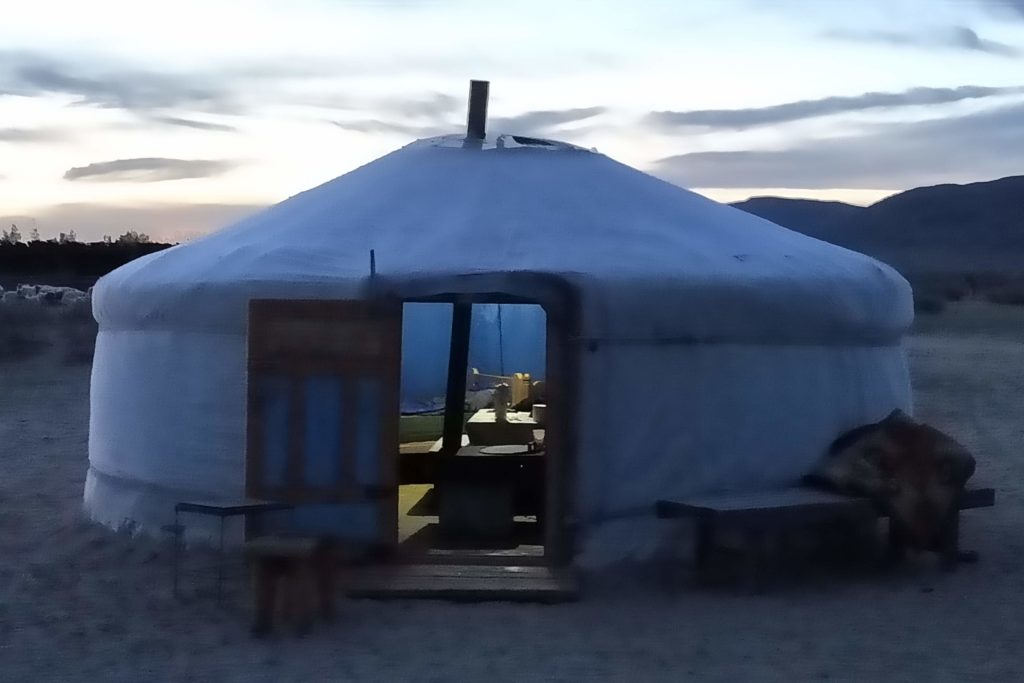
Mongolian Ger on the edge of the Gobi desert was the best “hotel” we stayed in.
We’ve been on lots of trips, but this has been like no other. We flew the equivalent of 1 ½ times around the world, from the warmth of the Coral Sea to the howling winds of Mongolia. From the sweet sophistication and beauty of Sydney, to the stark grandeur of Kazakhstan’s new capital city, Nur-Sultan. We’ve walked the streets of the almost tiny Ulaan Baatar’s 1 ½ million people to Beijings’s 20+ million people and everything in between. We dived on the Great Barrier Reef, 75kms off the Australian Coast, and ridden camels in the Gobi desert eight plus hours from “civilization.” We’ve conducted an “intimate” workshop among 50 people and spoke at global events with thousands of attendees in Central Asia and China. We’ve talked Big Data, big vision, the impact of the One Road, One Belt initiative on Central Asia and the nuts and bolts of how to build companies.
We’ve had to buy extra shorts because it was too hot and parkas because it was too cold. We’ve sipped lattes watching the sun rise over Australia and gulped hot coffee shivering on a stool outside a ger on the Mongolian Steppes. We’ve slept in cozy boutique hotels, in gigantic conference palaces, on a cot in a ger and in a flea-bag hotel down an alley next to Beijing’s airport. Along the way Karen fell in love with all-things-Koala (as in the little furry animals); I saw my first giraffe up close and personal; we were just feet away from the most feared animal in the Daintree Rain Forest – the guerilla-sized Cassowary bird; and in China Karen was warned not to make eye contact with the monkeys because they can become vicious.
If you have a bit of time, grab a glass of wine, settle in, and come along on this trip. It’s five in the morning, I have plenty of time, we’re in Row 59 of 60 conveniently located next door to the head, and just about to cross over the most eastern tip of Russia to Alaska.
Where to begin?
We didn’t know where we were going when we started. It just kind of unfolded as we went along. I know this sounds crazy for a 13 flight, 35-day, two business conference trip, but it’s the truth. When we got on our first flight to Sydney, we didn’t realize we would have twelve more flights to catch, none of which were booked yet. Things changed and morphed so often that we almost never knew where we would be staying more than two days out. I took care of the flights and business stuff, Karen took care of lodgings, eateries and entertainment.
Our “Itinerary” eventually unfolded to this:
- Fly to San Francisco, then catch a flight To Sydney
- Spend a couple of days in Sydney, then
- Fly to Brisbane for a week of business workshops
- Fly north to Cairns, gateway to the coast along the Great Barrier Reef
- Rent a car, drive further north to Port Arthur for a couple of days. Swim on the reef, trek through a rain forest
- Drive to Palm Cove and just hang in one of the most beautiful beach towns we’ve ever come by
- Drive back to Cairns, fly back to Brisbane, catch a flight to Abu Dahbi, and another to Nur-Sultan, Kazakhstan (all in one day)
- Speak at the Astana Economic Forum and see a bit of Nur-Sultan.
- Jump a plane to Beijing, miss our flight, spend a night in Beijing, then fly to Ulaan Baatar, Mongolia the next day
- Hop in a Russian knock-off of a VW van and drive 8 hours west into the Mongolian steppes.
- Spend two nights staying with two different families in Mongolian yurts (called gers)
- Drive back another 8 hours, spend the night in Mongolia’s capital, Ulaan Baatar.
- Next day, catch a flight back to Beijing, then meet up with the “Silicon Valley Talks to Big Data Valley” business delegation I’m joining, and all of us fly to Guiyang, China. After 2/12 hours on one of the worst flights we’ve been on, we get to our Guiyang hotel at 2AM.
- Next morning we’re off to the Big Data Expo and do a panel discussion, some interviews and various other events.
- Have one free night to explore Guiyang and to my utter disbelief, I actually loved this Tier 4 City of 5M people.
- At 4:30 this morning we begin the 24+hour sojourn home
- 35 days, 37,000 miles, 13 flights, 10 airports, four countries, and nine cities.
- Modes of transportation: plane, subway, catamaran, bus, car, camper van, ferry, camel and a horse
No matter what type of government or place, the rich and powerful live differently than you and me. There can be a pretty stark difference when traveling. One gets a flavor of what it’s like when you’re treated like a VIP in Kazakhstan or China. In China, we went to an entire “VIP Wing” of the airport where we lounged in a comfortable room (there were about a dozen of these rooms) while visas, boarding passes, luggage, etc. were handled. In Kazakhstan, we had similar treatment, never having to worry about transportation or travel arrangements of any kind.
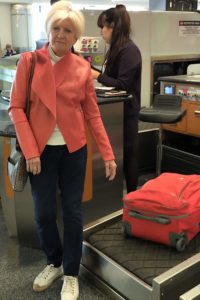
KR at the first of ten airports. Red is a good color as its easier to spot her in the stampede to get off the airplane or rushing to immigration.
This pampering contrasted sharply with the more normal brutal experience of long distance travel. In Beijing’s airport it took us THREE HOURS just to check in and get through all the various immigration, security check(s), customs, etc. We were lucky to have five hours between connecting flights as we needed most of it. In a previous flight to Beijing, we missed our connection out of Beijing to Ulaan Baatar. We had to stay in a dirty, stained-carpet, brown-water-out-of the-tap kind of hotel down a back alley close to the airport. I think we had three 24hr+ travel days that were so long we couldn’t remember where we had started that morning. We also broke a record of more than a dozen “fasten your seat belt” notifications on a single flight that was constantly rocking and rolling from Beijing to Los Angeles.
But, as they say, if you can’t stand the heat, get out of the kitchen. Good, bad, ugly and horrible coincide with the great, breathtakingly beautiful, and the wondrous that is long distance travel. We had no major mishaps, we lost nothing important, we made all of our meetings, and walked away from every flight.
We’ll be ready to go again, soon.
Australia
The Cliff Notes Version: Go. Beautiful, clean, friendly, the most “like us” place we went, high standard of living and quality of life. It’s all about the outdoors, whether “the bush,” the beaches or the Great Barrier Reef. Sydney is one of the most beautiful cities I’ve been to (physically reminds me of SF). Write this down: Palm Cove, north of Cairns. It’s just a great little beach town.
What We Did: Sydney Zoo, traipse around Sydney, toured the Sydney Opera House, watched a Memorial Day parade, went to the Great Barrier Reef, took a tour in the Daintree Rainforest, went to a immaculately preserved mining town from the 1800s, various animal sanctuaries, swam in the ocean, a rain forest river and a pool. Goes without saying we hit lots of bars and restaurants
The Great Barrier Reef (GBR). The GBR is north of Brisbane along hundreds of miles of coast and is THE place to go. We took a catamaran from Port Douglas 75 kilometers to a part of the reef where this company had a giant pontoon boat anchored. Think beautiful ocean, snorkeling, bars and food. Spent an entire day along with 300 of our closest friends snorkeling and “ocean walking.” No question though, the GBR is in trouble. Rather than a cascade of underwater colors we all see in pictures, it is gradually turning brown, then bleached white as it slowly dies. Yes, its all about the water temperature and climate change. Yet, snorkeling over the GBR for a couple of hours is my most vivid memory of the trip. It was an out of body experience that I will never forget.
Animals: Seeing lots of animals has never been on my list of great things to do; seeing lots of animals is one of Karen’s favorite things to do. Guess what happened? Within 24 hours of landing in Sydney, we had hit its world-renowned zoo. Karen fell head over heals for the fuzzy little Koala bears. It was my first time seeing a giraffe up close and personal. The tigers just kind of looked at you wondering which one of us was for dinner. Kangaroos. Wallabies. Tasmanian Devils, and on and on and on. A couple of days later we were gliding down a river in the Daintree Rain Forest looking for crocodiles, which we found plenty of (KR even went to a Croc ranch). I’ve never been to so many animal sanctuaries in my life: butterflies, said Koalas, rain forest animals, etc., etc. By the time we left Australia, I was thinking of starting an Animal Picture Book.
Cairns, Port Douglas and Palm Cove. These are all beach towns along the north Queensland coast. All can get you to the GBR. I hated our one day and two nights in Cairns. Couldn’t find a decent bar or restaurant. Tourist Trap. Port Douglas is a wonderful little village that is probably the main jumping off point for the GBR. Very charming. Maybe a dozen or so of restaurants. Served as our headquarters while seeing everything. Palm Cove. Literally, the minute I stepped out of our car I knew I loved this place. Tiny. Right on the beach. Palms blowing in the wind. Swimming. IF we ever get back to Australia, I’m going back to Palm Cove. I wanted to stay two weeks, not two days.
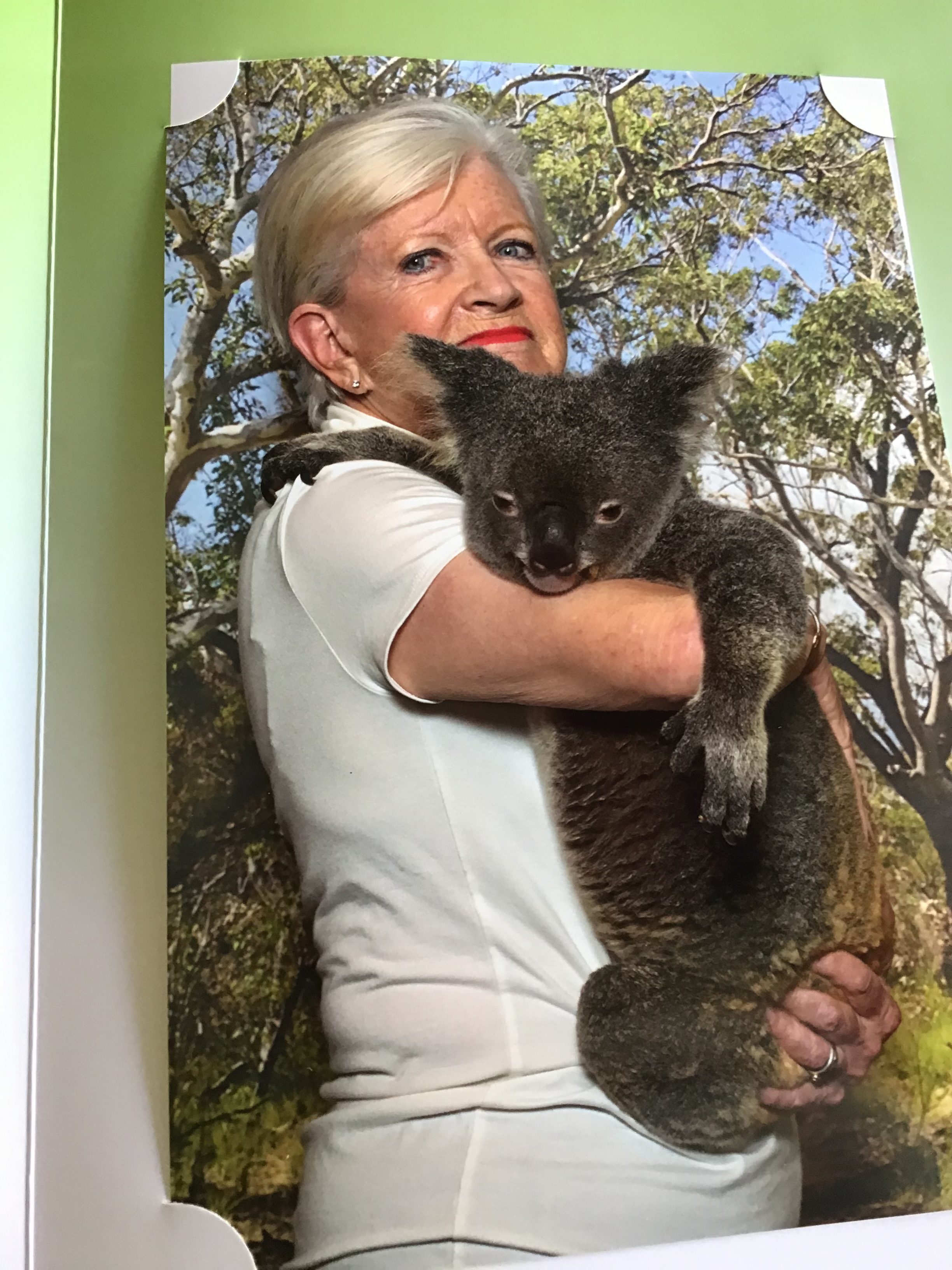
Big love. KR finds her favorite animal. I think she visited 3 or 4 parks/zoos that had Koala bears.
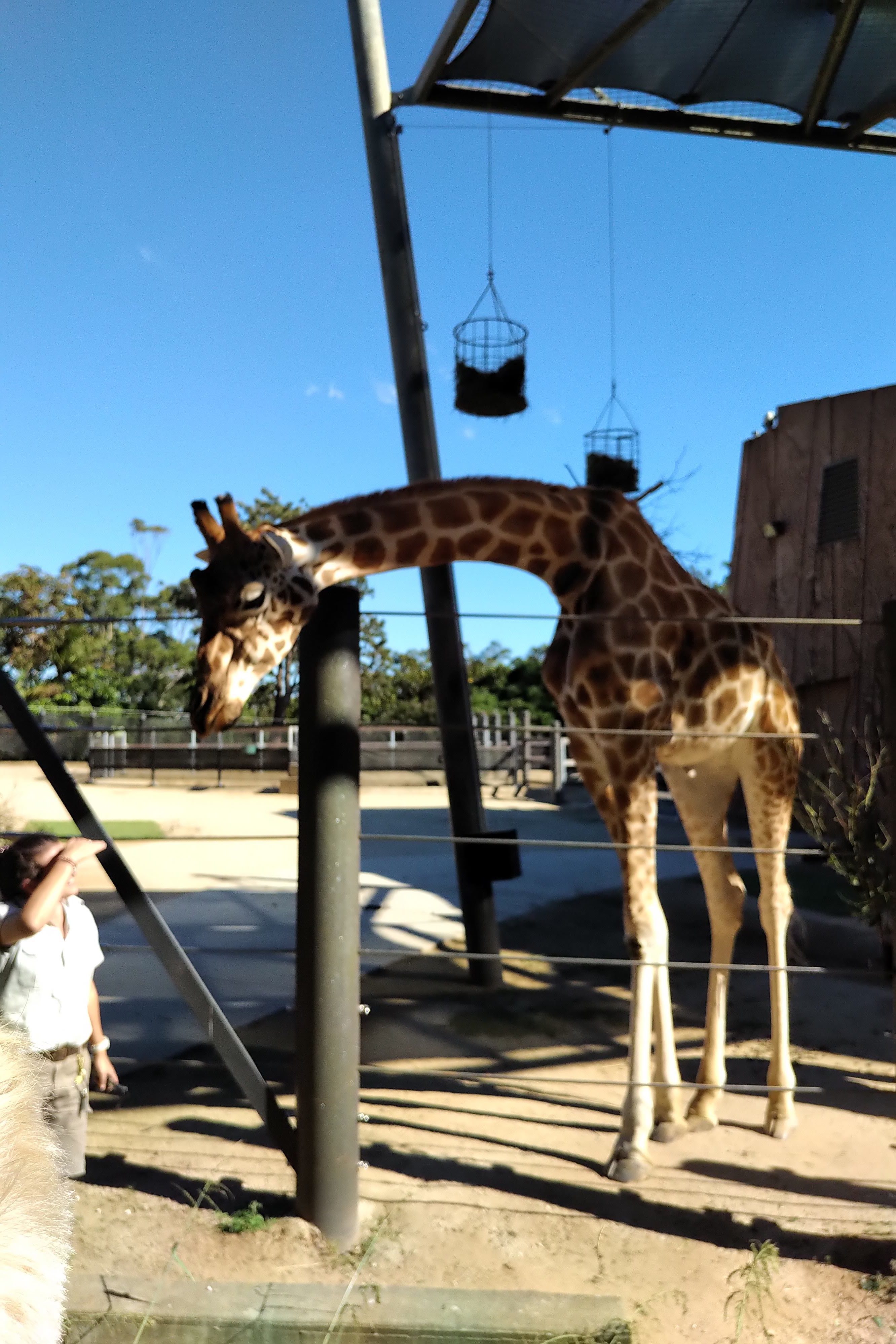
My first giraffe. Bigger in real life and pretty neat to see them start trotting.
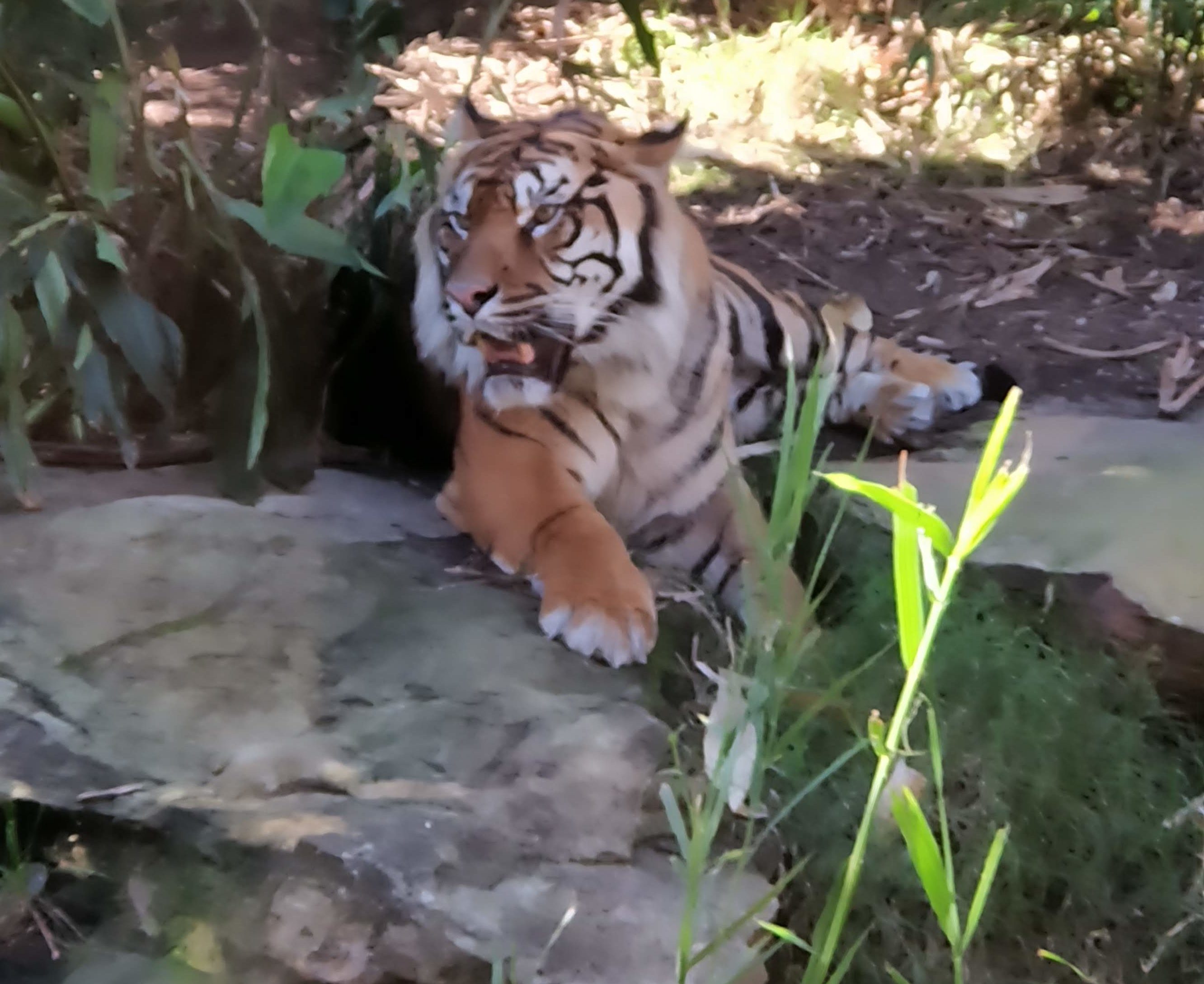
“Hmm, whats for lunch? That guy in the bright shorts looks good. Can you please pass the salt?”
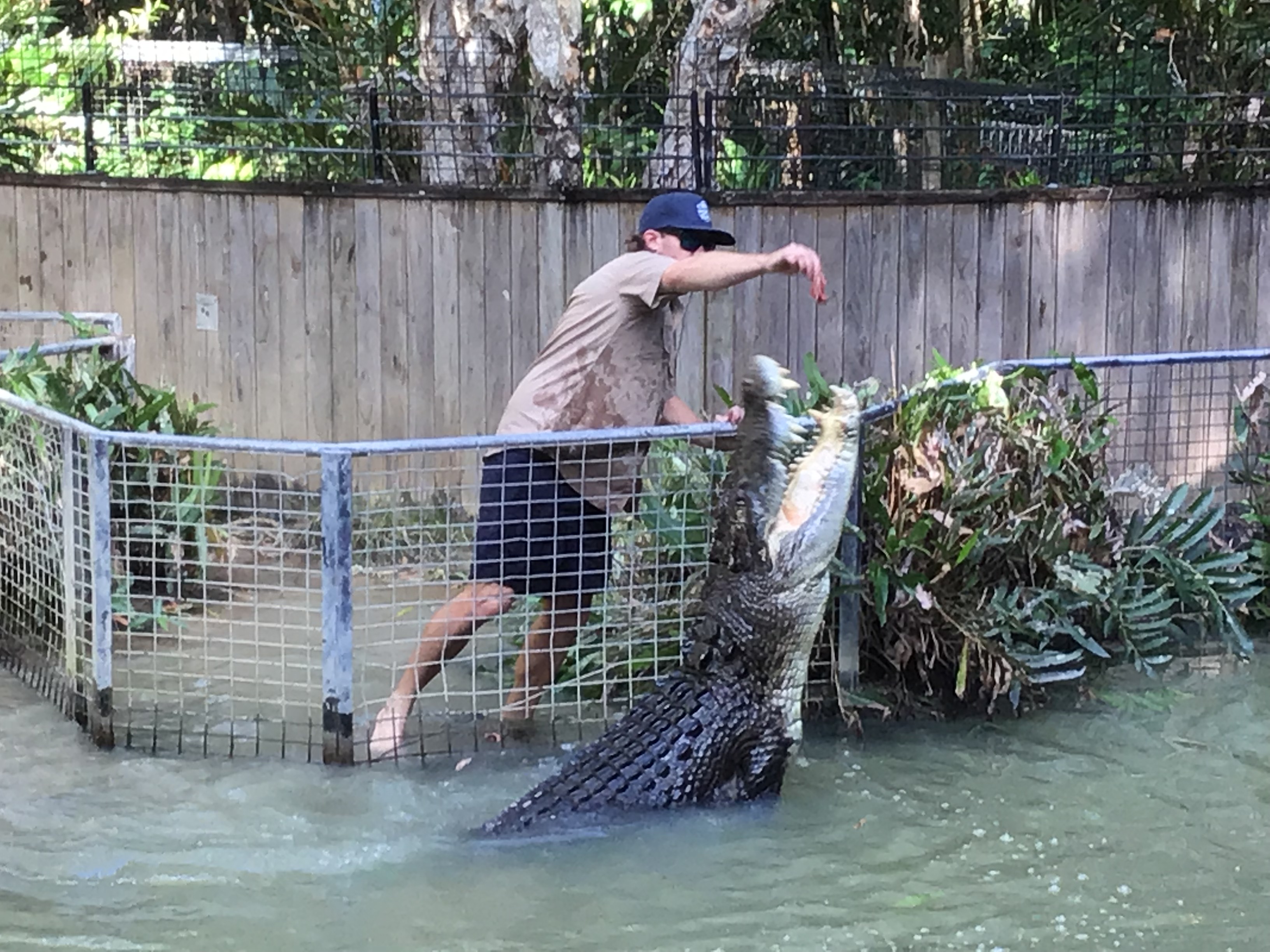
Karen went to a Croc Ranch. I passed on this exciting event. I like my crocs further away
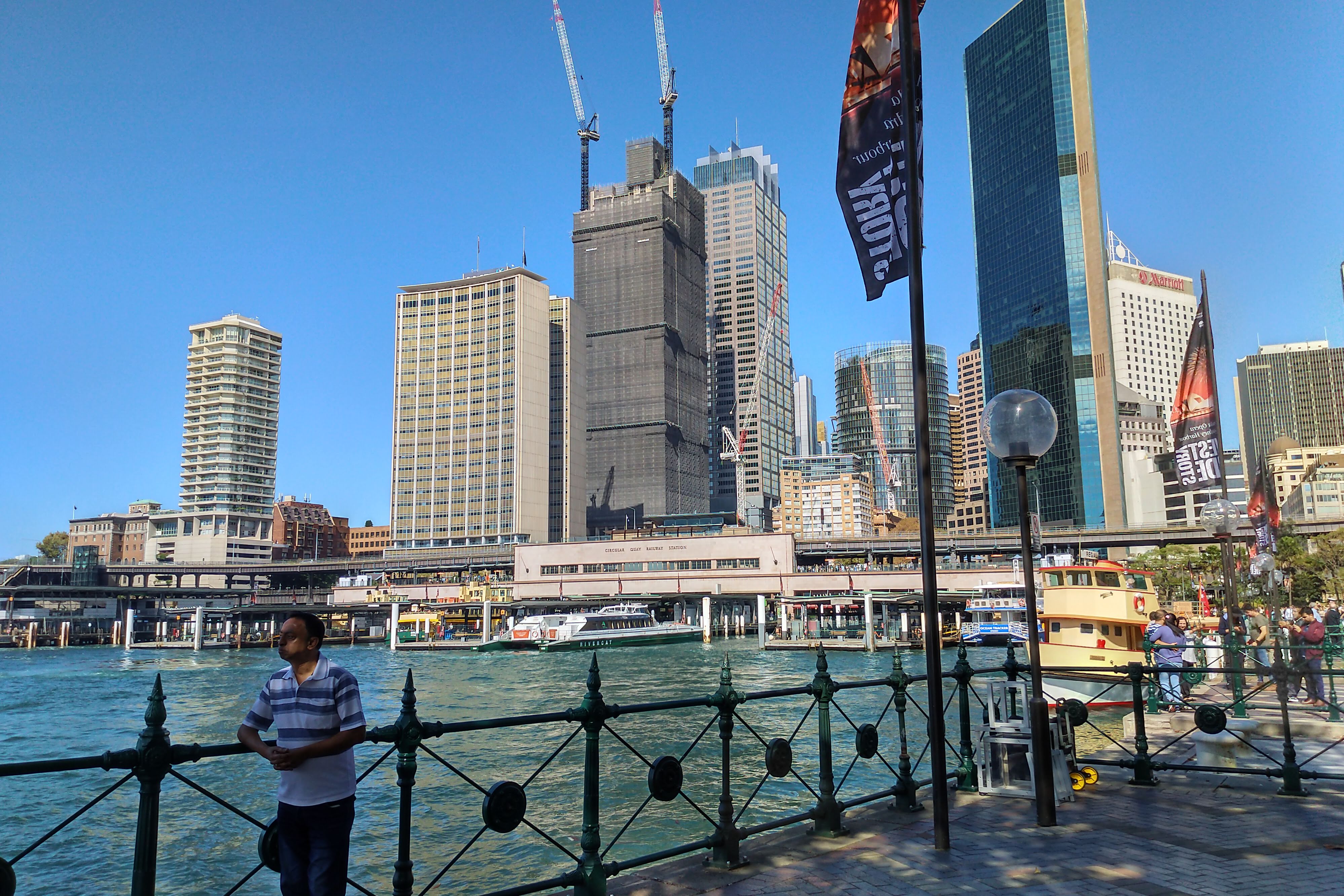
Sydney Darling Harbor. Sydney probably has a dozen or so harbors
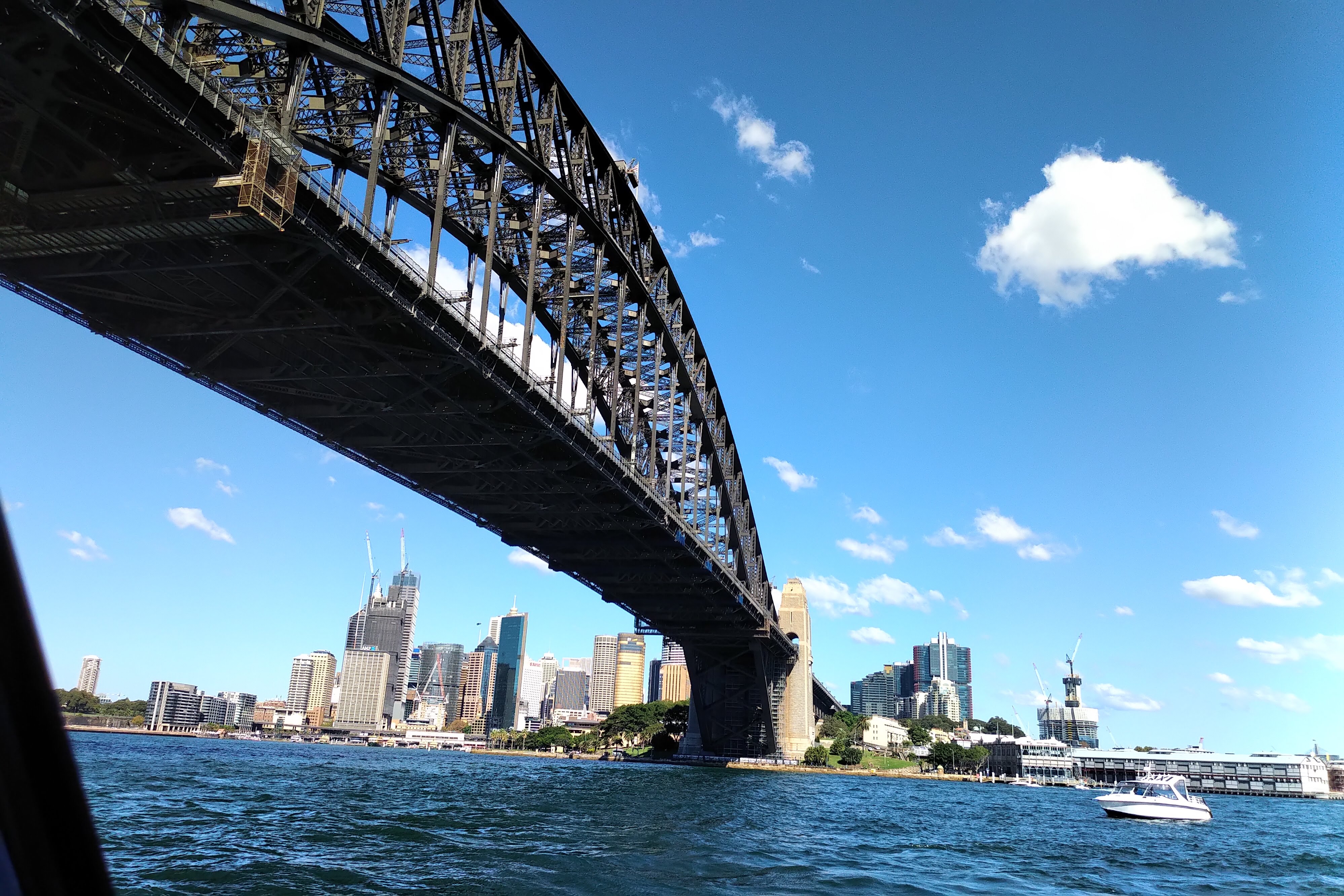
Sydney is a city of ferries. We’re on one underneath Sydney Harbor bridge.
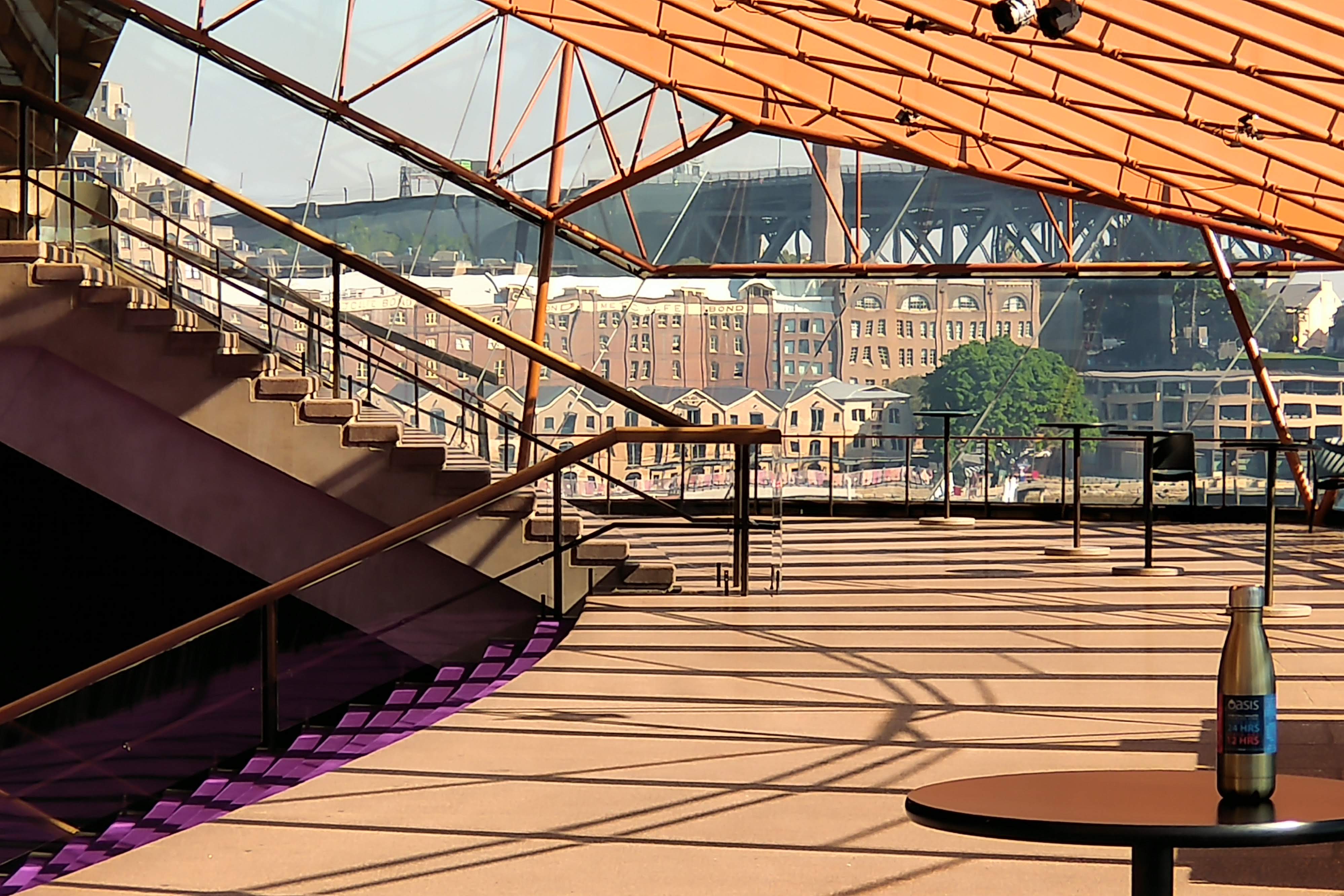
Inside the Sydney Opera House, which was pretty spectacular from any angle.
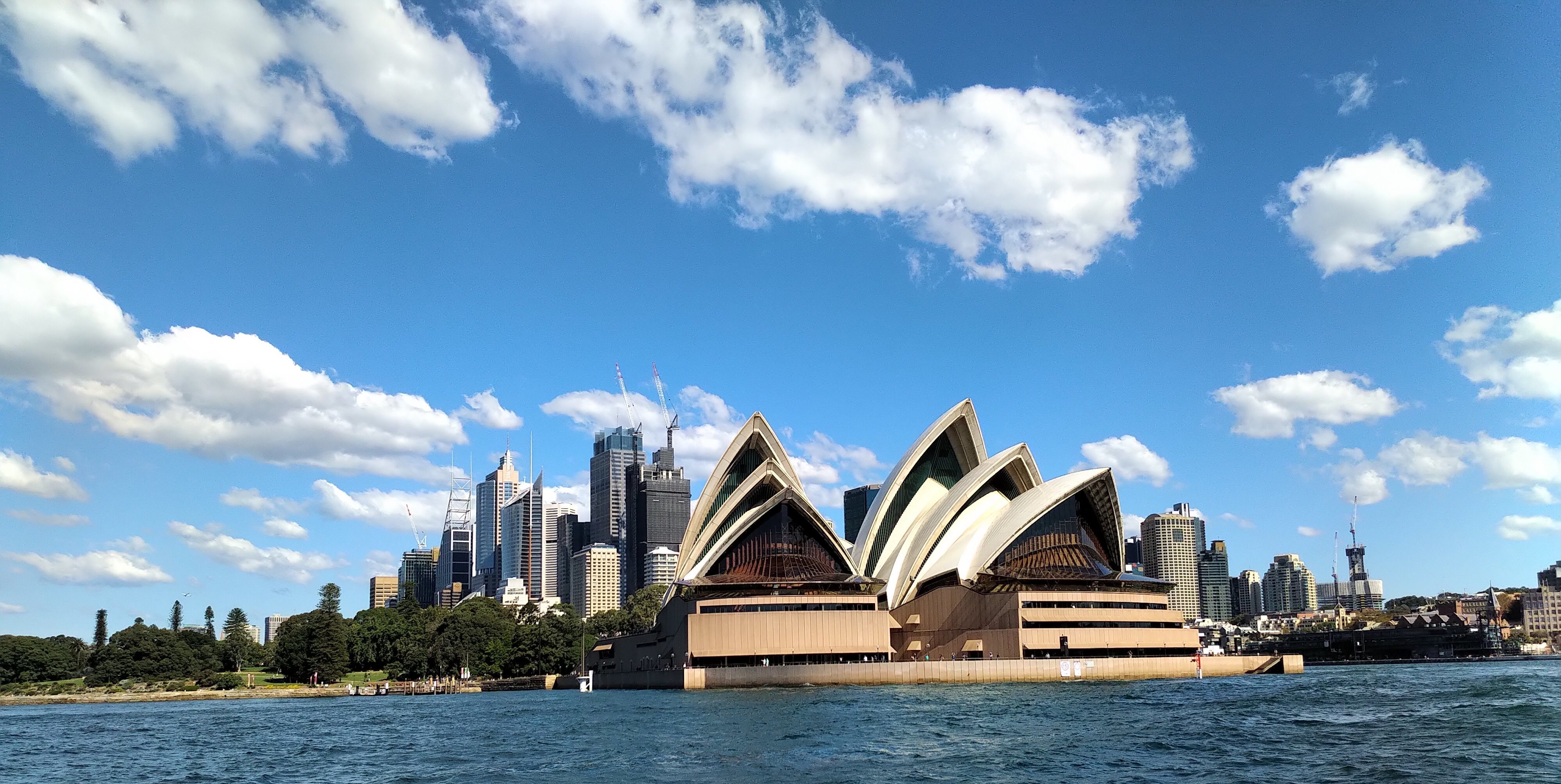
View of same from a ferry
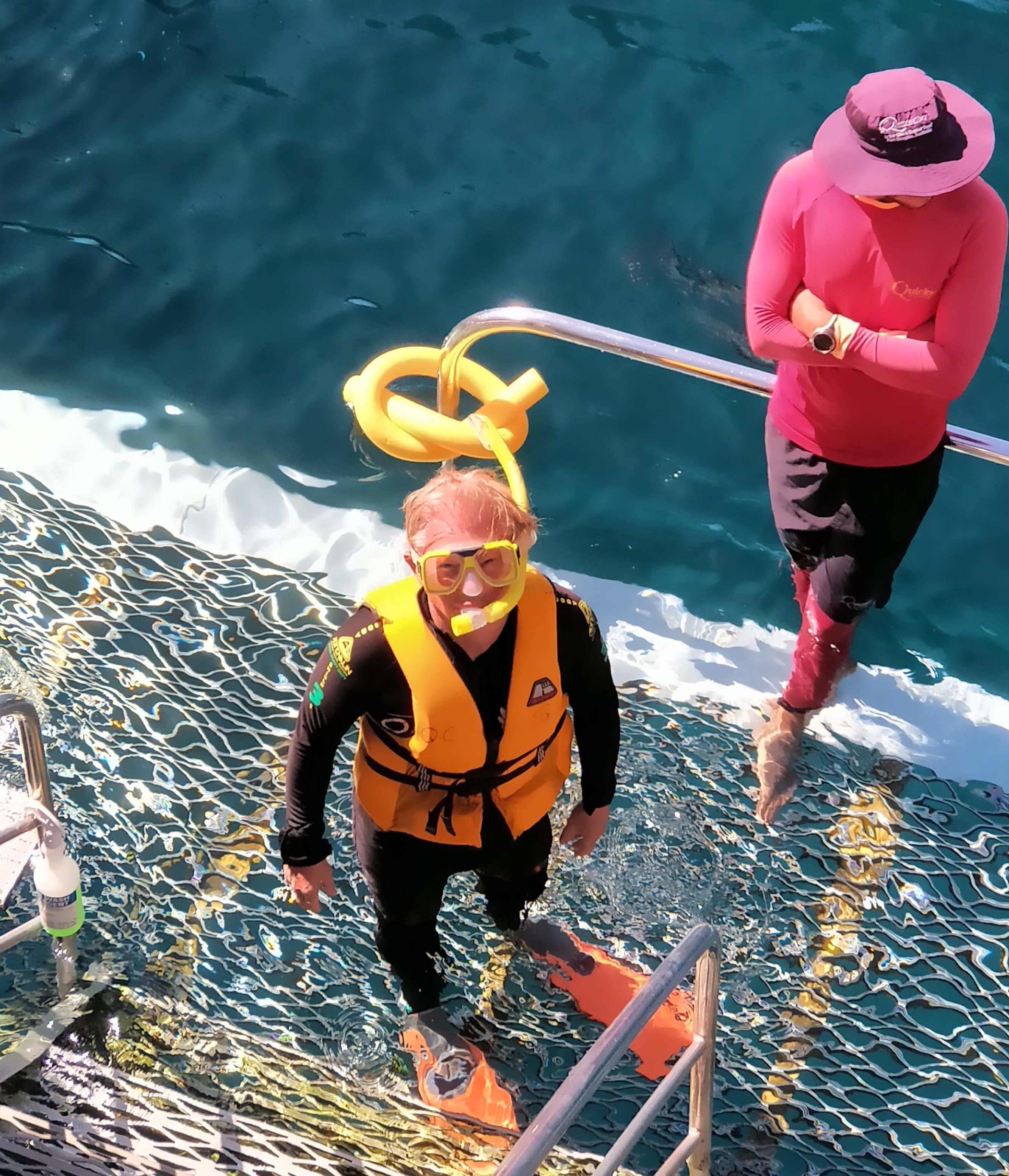
Man ready to challenge the elements. About to jump in and snorkel around the Great Barrier Reef.
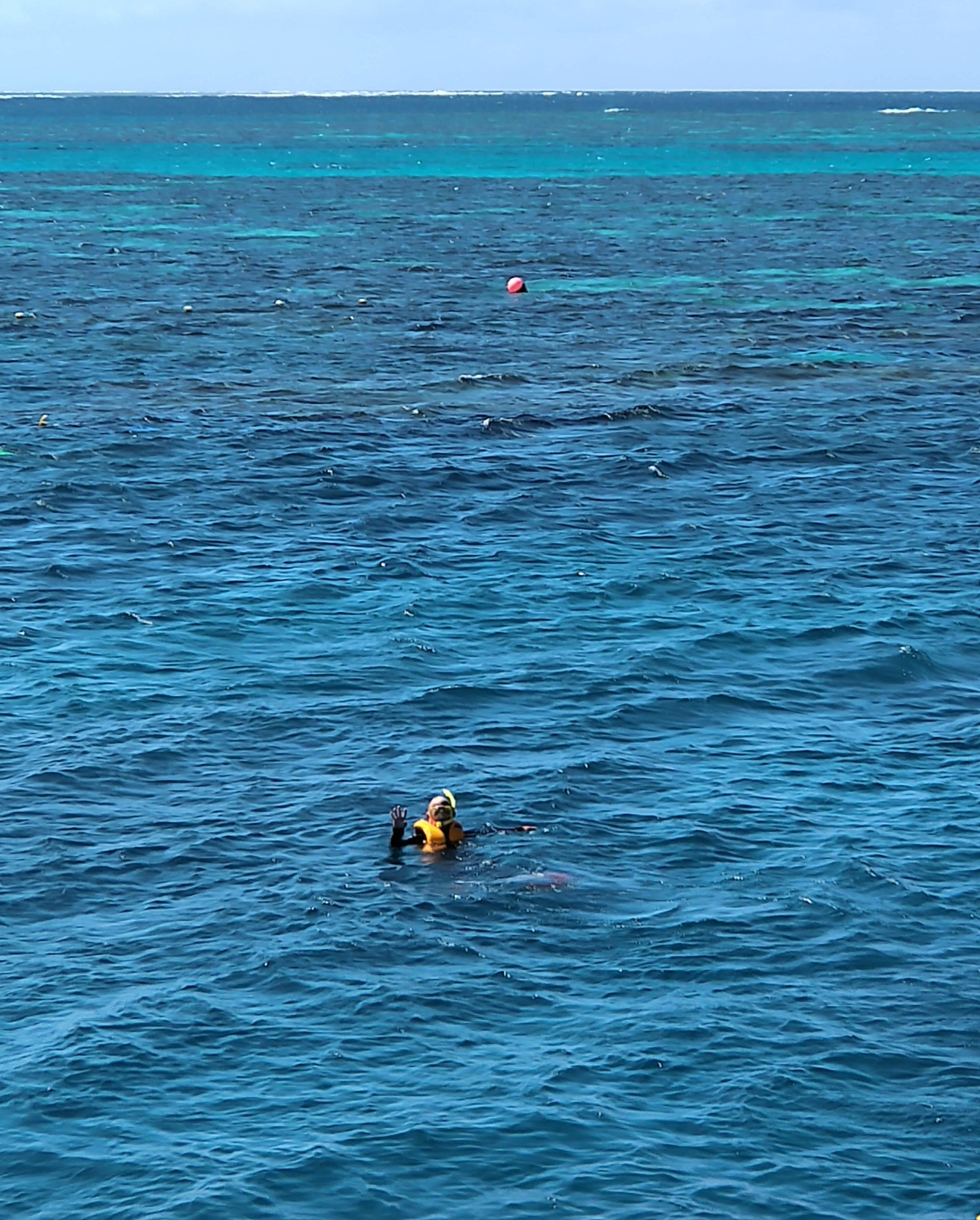
Picture does not do it justice. One of the most iconic images I’ll remember from the trip. We’re about 50 miles off the coast of Australia, just 20 or so feet above the Great Barrier Reef. Cool, very cool.
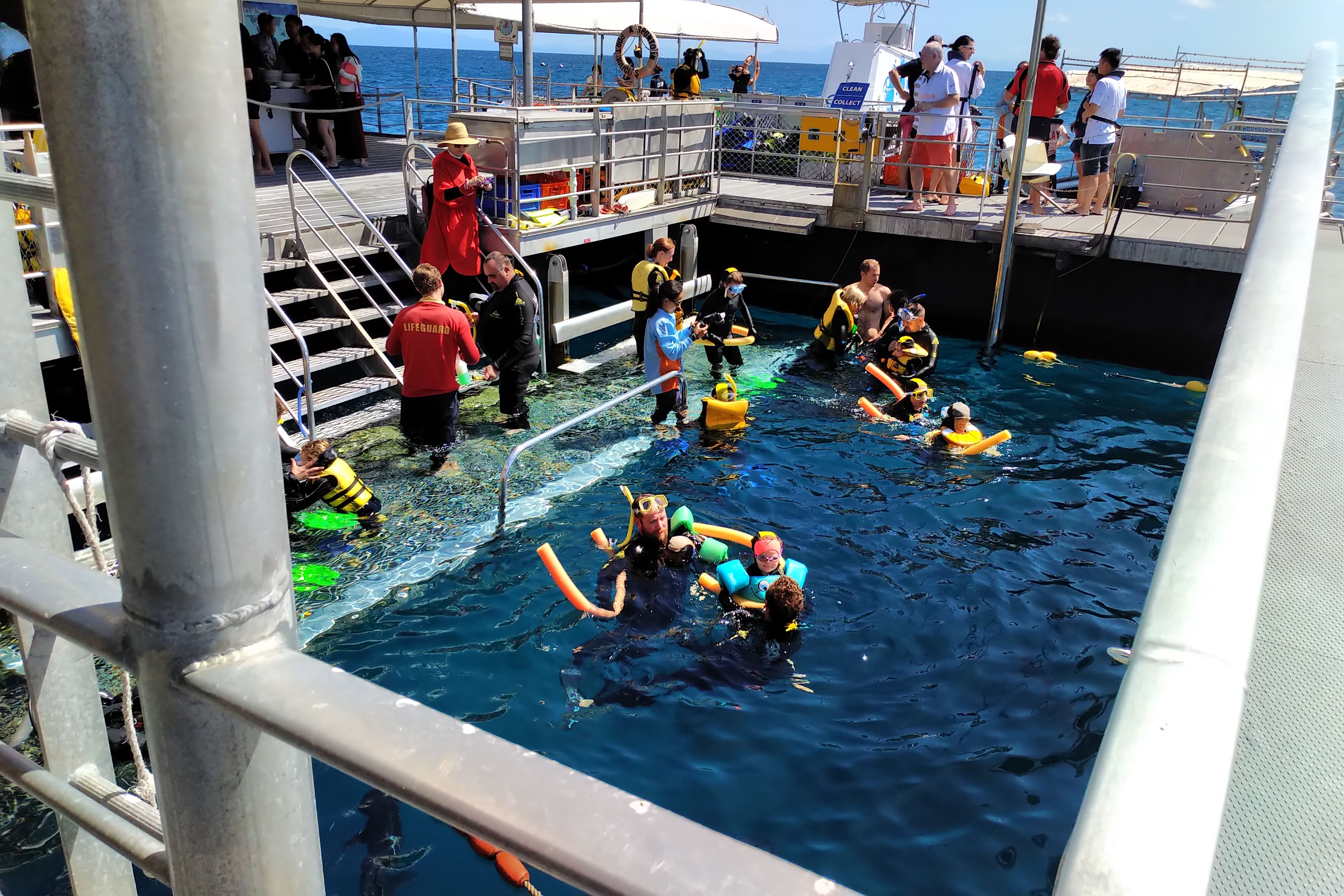
We were all alone on the reef. Not. A couple of hundred people took a two hour ride on a catamaran to get to this pontoon boat. Among other things, this floating barge had a bar, restaurant, “divers lounge,” etc. Despite all the people, this was a great experience.
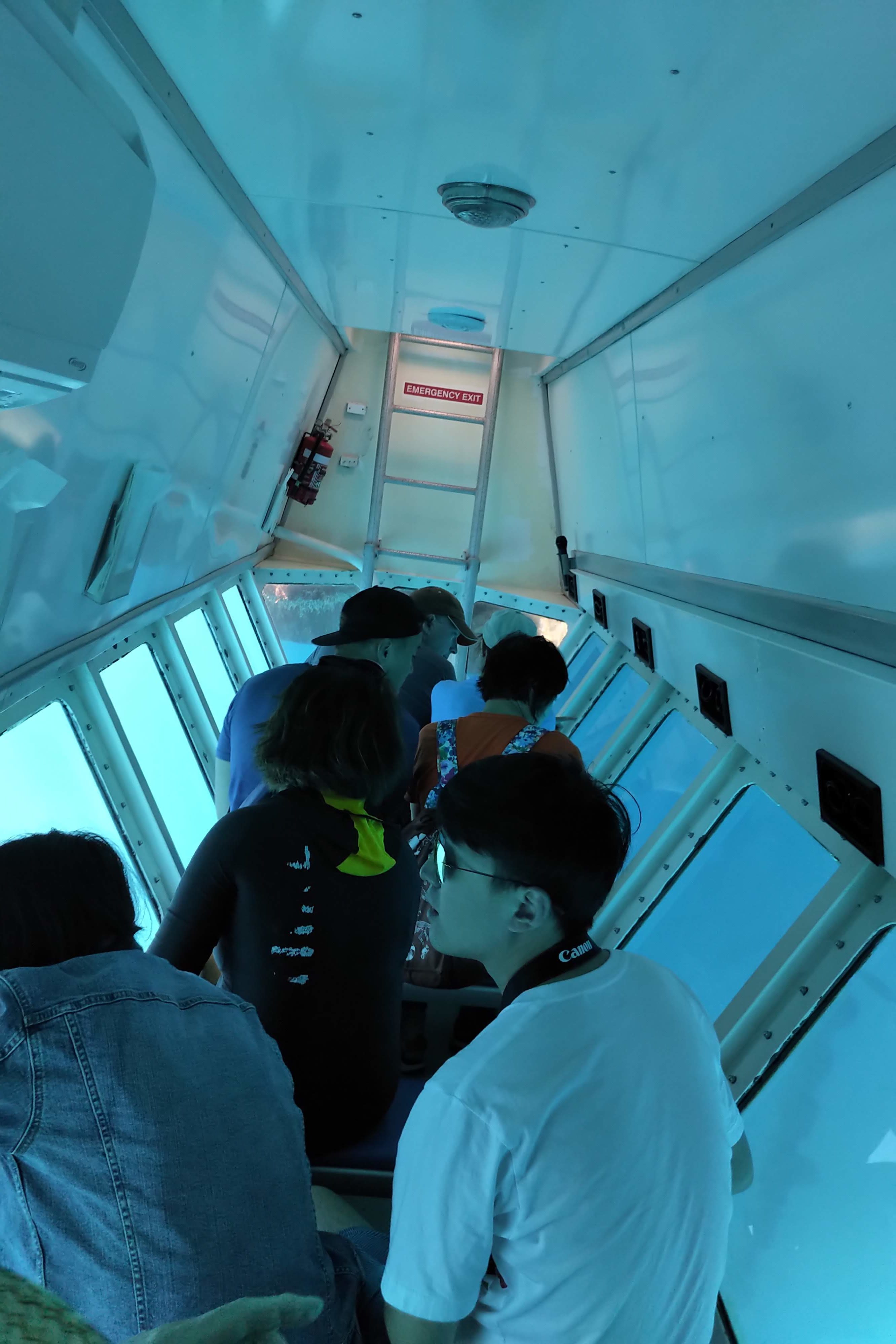
Glass bottom boats are a good way to see what’s underneath the surface while staying dry. Provided you can get over the claustrophobia feeling and the lack of seaworthiness of the boat. KR and I also “walked on the ocean floor” using air-filled helmets.
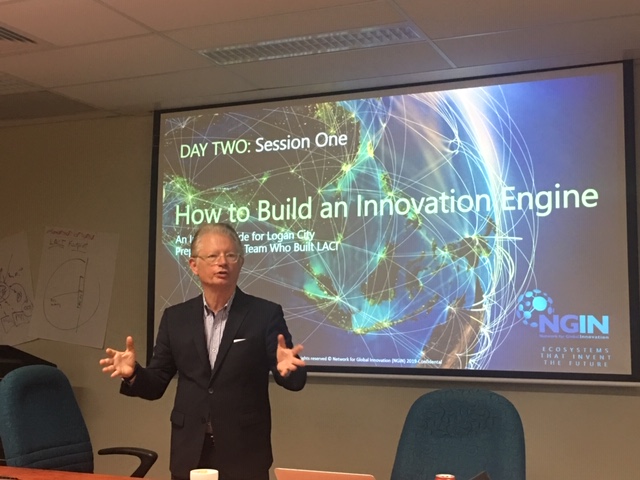
This is what I do. The workshop at Logan City.
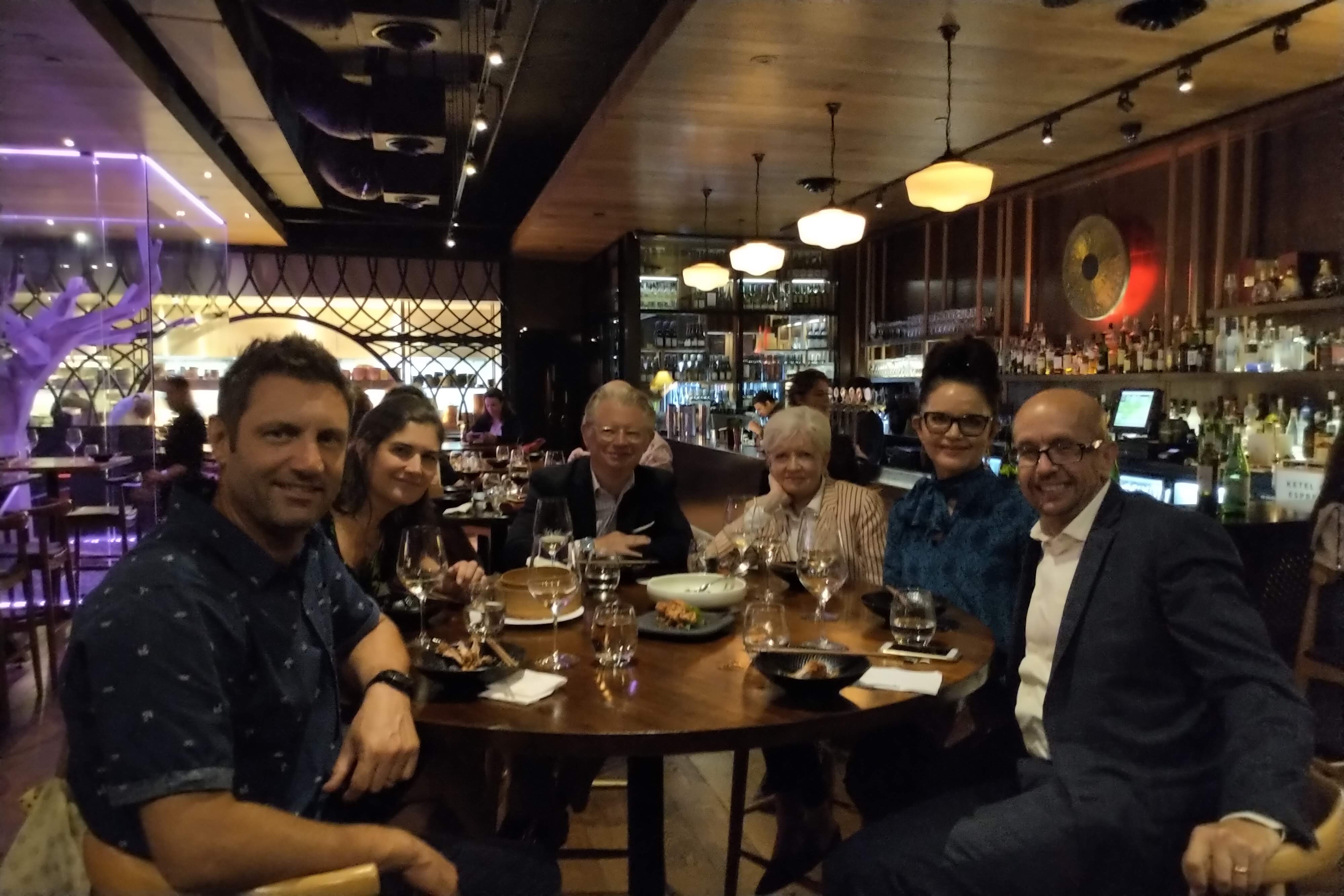
This is work also. Dinner with some of the folks from Logan City’s innovation group at a restaurant in Brisbane.
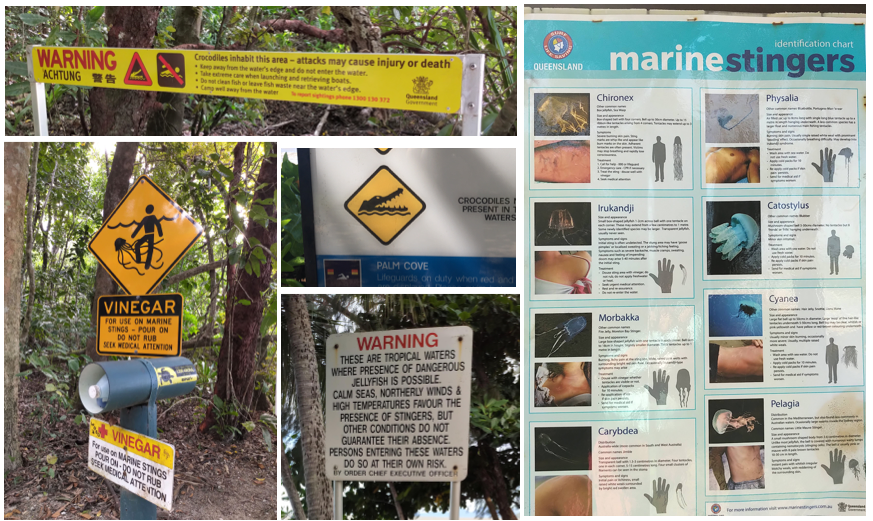
No worries. Various friendly warnings about anything that moves on land or water.
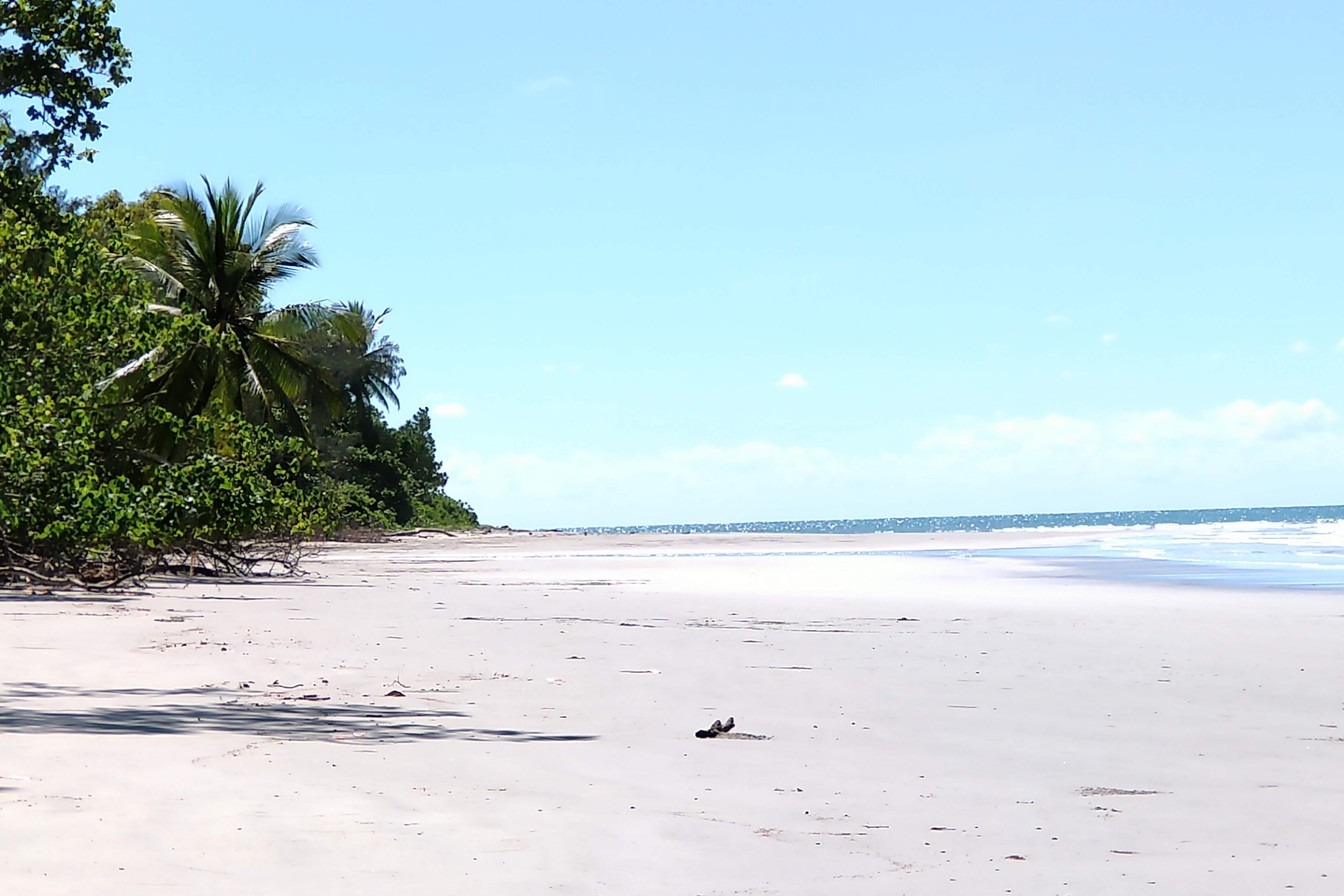
Sure, I’m going to just stroll along this beach, knowing that a croc could jump out from the left or crawl out from the right. Australia is a very relaxing place in May
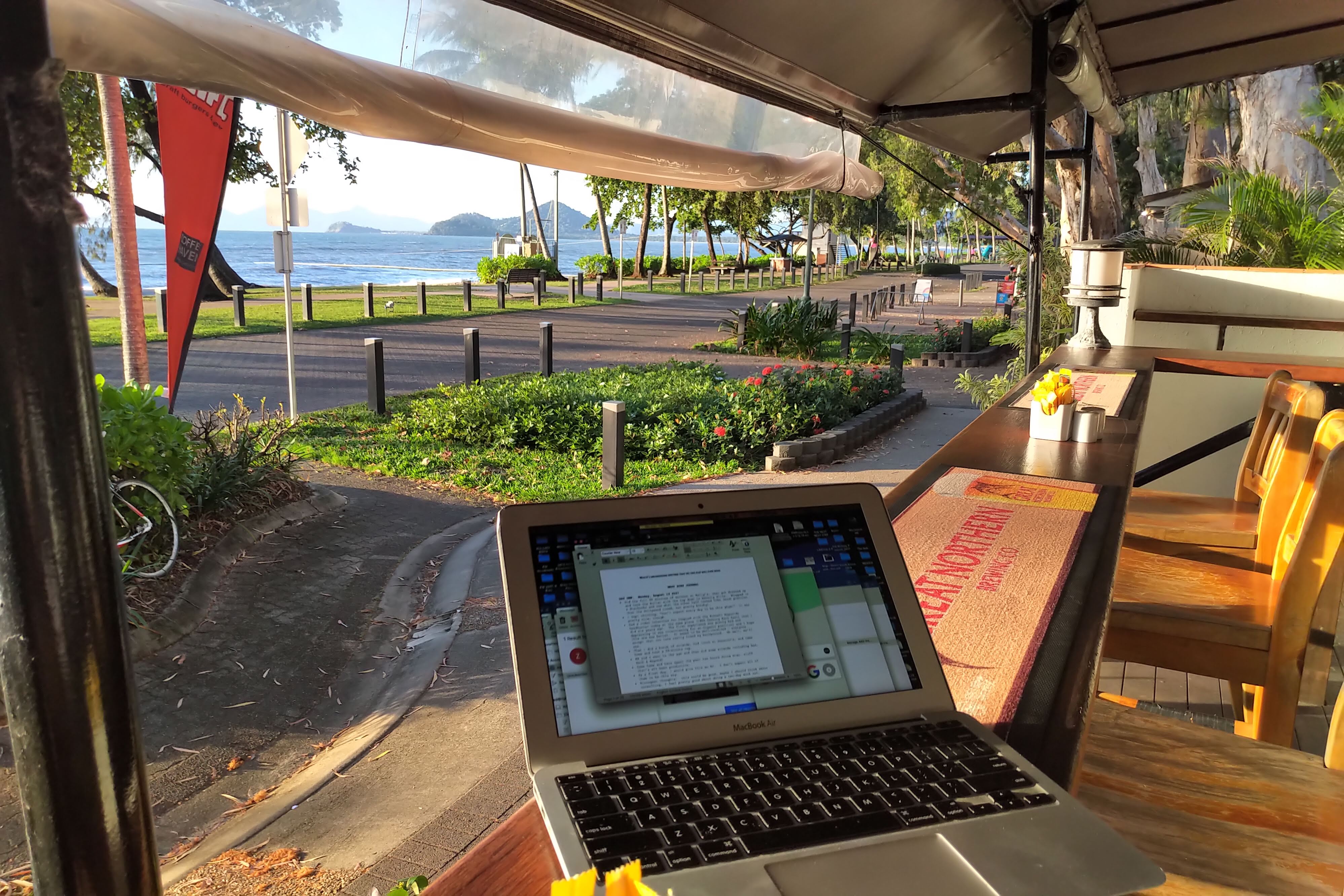
This is my preferred distance to the beach. I can see the crocs as they come on shore. It does not get any better than this when it comes to offices. My office in Palm Cove.
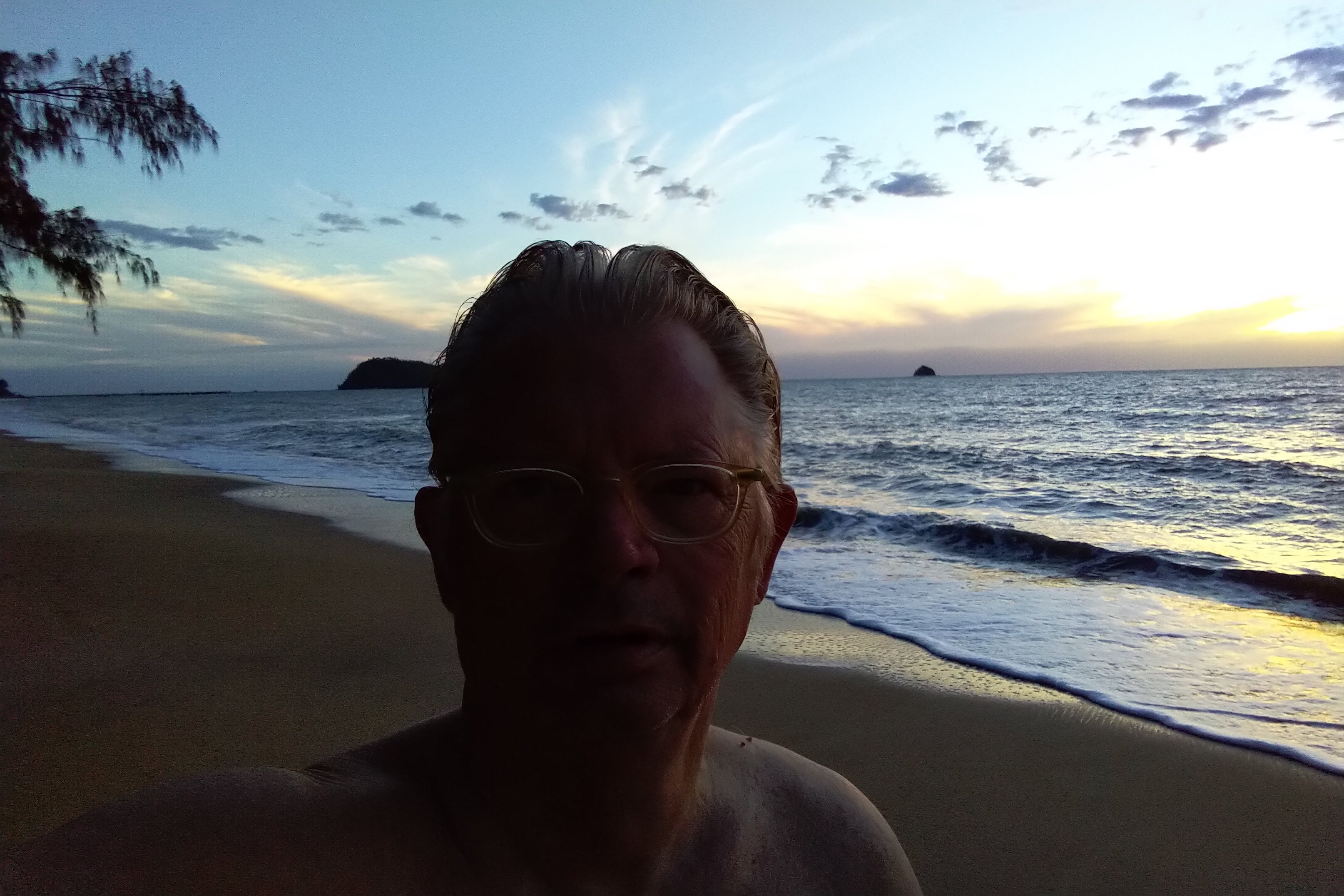
Running on the beach at sunrise in Palm Cove. I figured the crocs couldn’t catch me ’cause I’m too fast
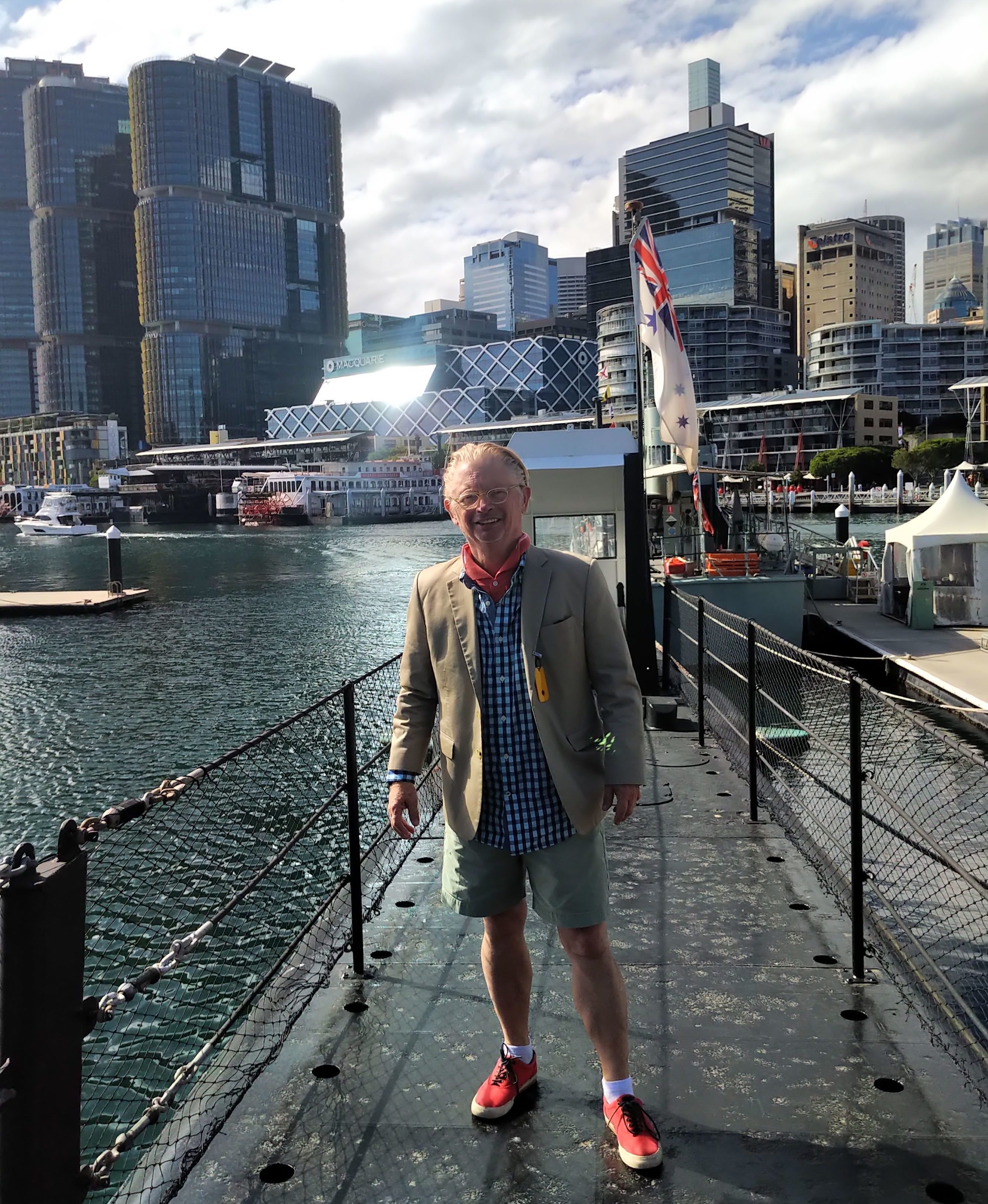
I don’t get it. What’s the problem? KR was embarrassed to be seen with me in this outfit.
Kazakhstan
Why/Where/What is it. It’s in the part of the world called Central Asia. Think all of the countries between Russia and China and you’ll get the general idea. Kazakhstan was a Soviet controlled country until the collapse of the USSR in ’90. Now it’s an independent country with strong cultural and business ties to Russia. Nur-Sultan is the capital created just 20 years ago in the northern part of Kazakhstan. Recently changed its name from Astana to Nur-Sultan, after the “First President” who is still the only President. I was invited to speak on a panel at the Astana Economic Forum about “Building Innovation Ecosystems. The AEF takes place at the 2017 Expo park built in 2017 to house a world expo that attracted more than 100 countries. It’s a truly spectacular place, built on a grand scale with some of the most stunning architecture I’ve ever seen. Unfortunately, it’s on the outskirts of Nur-Sultan with nothing in walking distance but a US-style mall. Nur-Sultan is one of the two coldest capital cities on earth. Temperatures get down to -30F with 50 mph winds in the winter. BTW, the other coldest capital city is Ulaan Baatar, our next stop: )
The People/Culture: Aside from looking different from Karen and I, most everything else was relatable. People in every city (towns are another story) dress pretty much the same, they buy the same (American) branded merchandise, and do the same things. Babies cry. Girls giggle. Boys run around. Boyfriend and girlfriend hold hands. Families take selfies. While many of the restaurants looked the same, the food was something other-worldly as I had my first piece of Horse Meat and sipped some Camel’s milk. It’s reassuring to know that one can get a Corona almost everywhere: )
The Physical Place: We only saw parts of the 20-year new capital in the northern part of Kazakhstan, which is in the middle of the Kazakhstan steppes. Weather changed pretty rapidly from 35ish to 65ish in 24 hours. It’s the wind however that makes the biggest impression. Even in the summer, the plane was rocking and rolling on our approach to Nur-Sultan.
There is a “grand vision” nature to all the architecture we saw. Buildings are built for scale, huge in size and shape. Style is hard to describe, something between over-the-top Vegas and Eurasian. Even in early summer, there isn’t much green yet around. The one exception to all of this is… a shopping mall which looks and feels like a shopping mall anywhere.
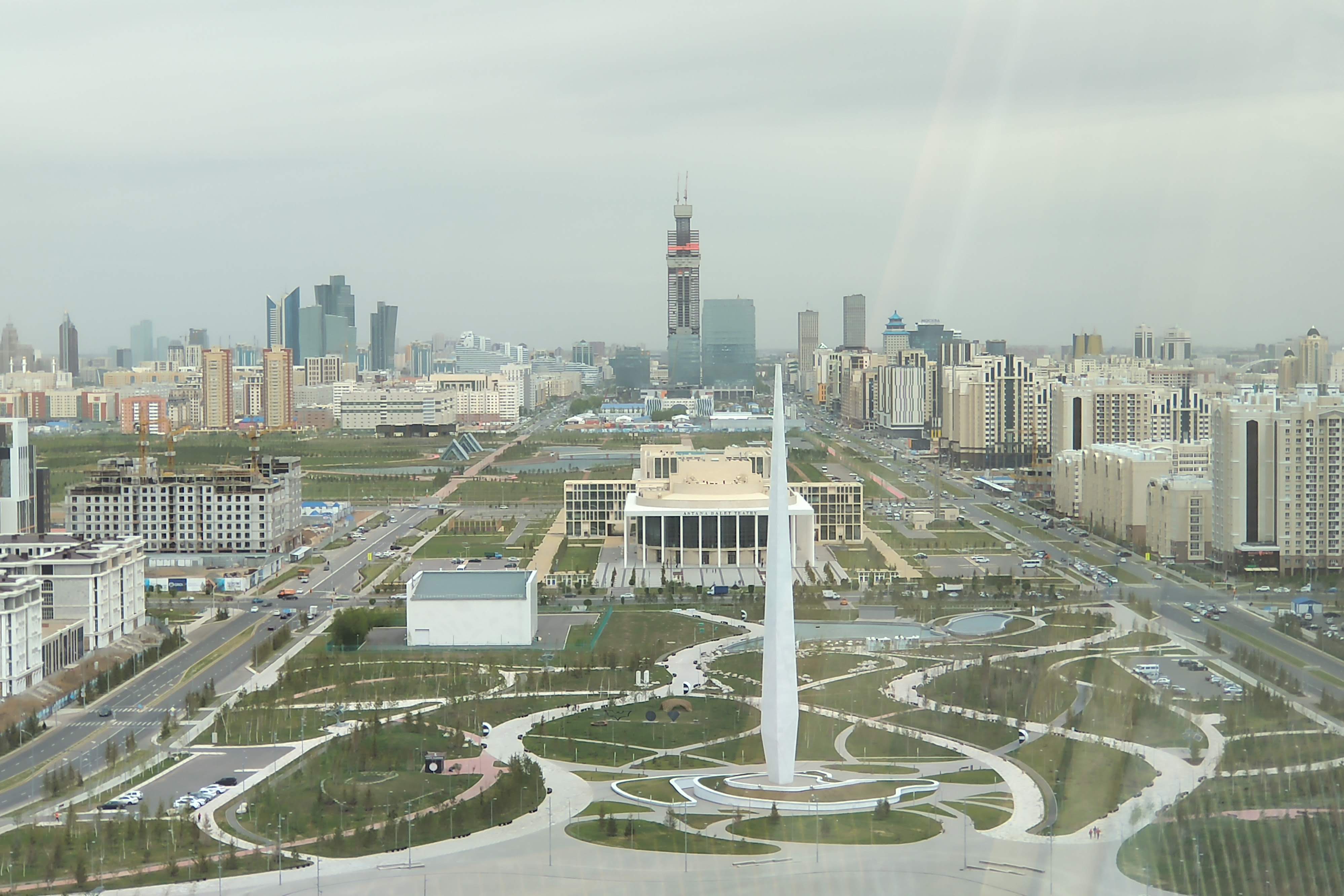
View of Nur-Sultan from the 2017 Expo Sphere
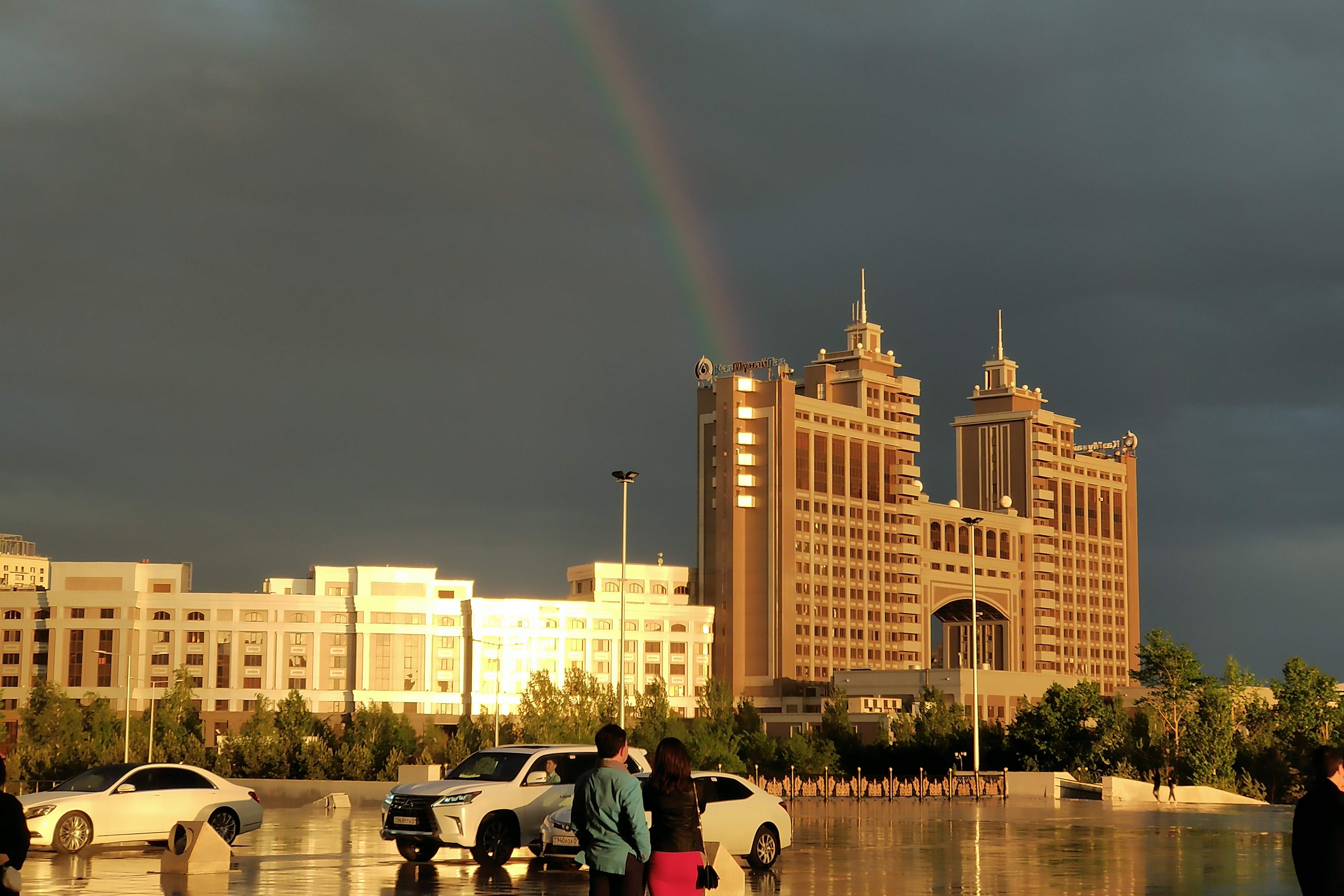
It rained for 30 minutes while we were in Nur-Sultan.
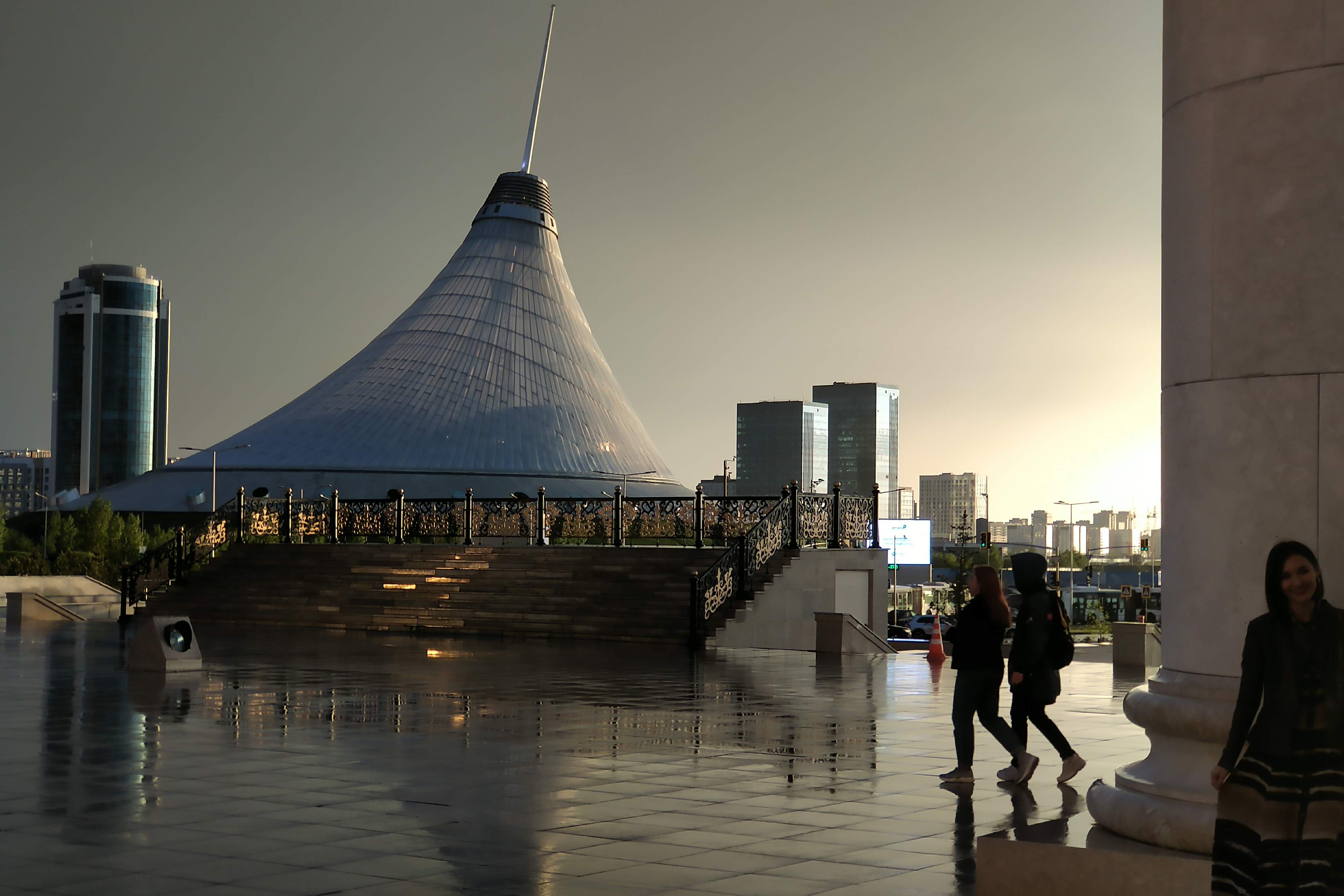
View from the Astana Opera House.
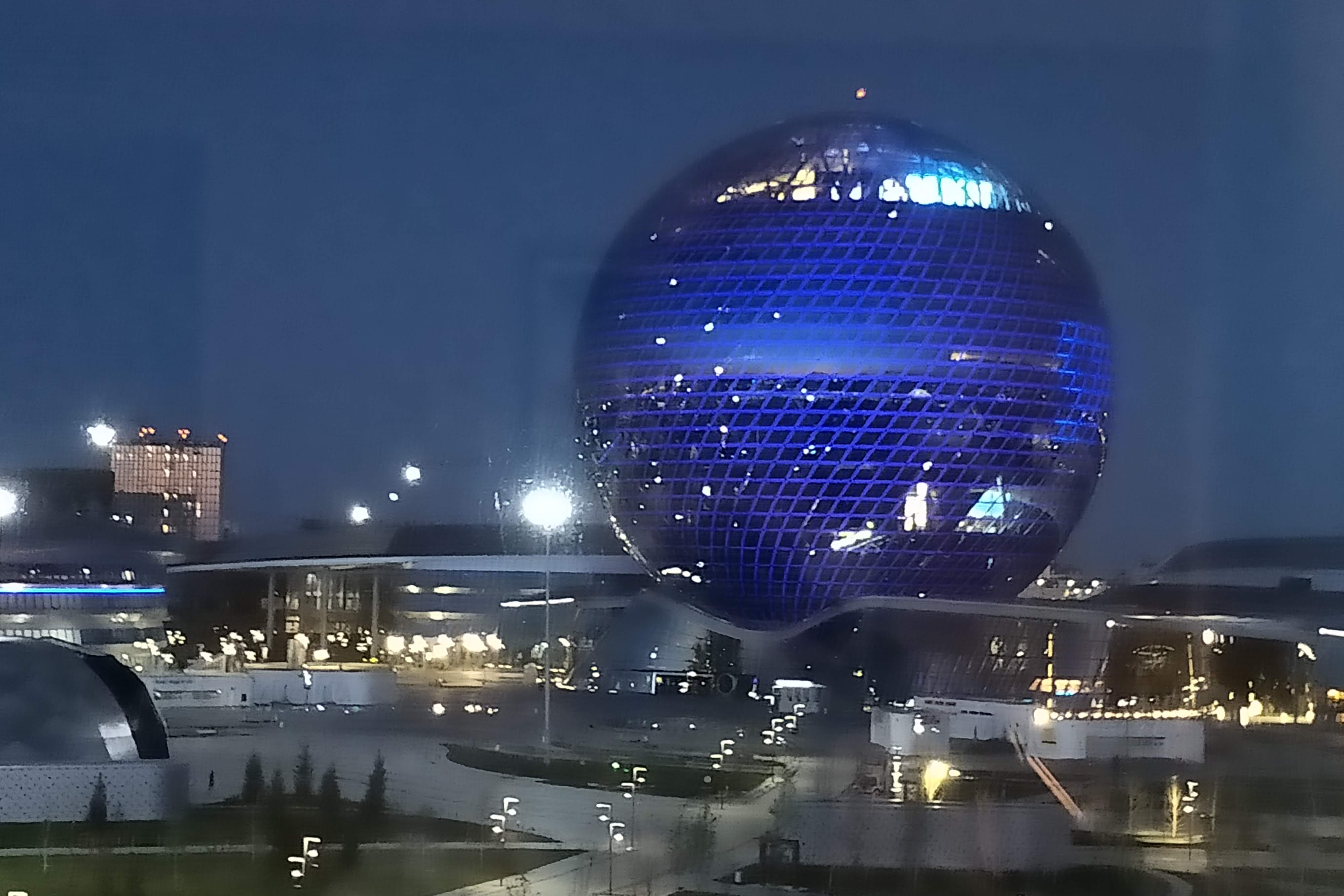
View from our hotel window, the 2017 Expo Sphere. The entire campus is architecturally brilliant. There are eight floors in the sphere, each one an expo of a specific type of renewable energy.
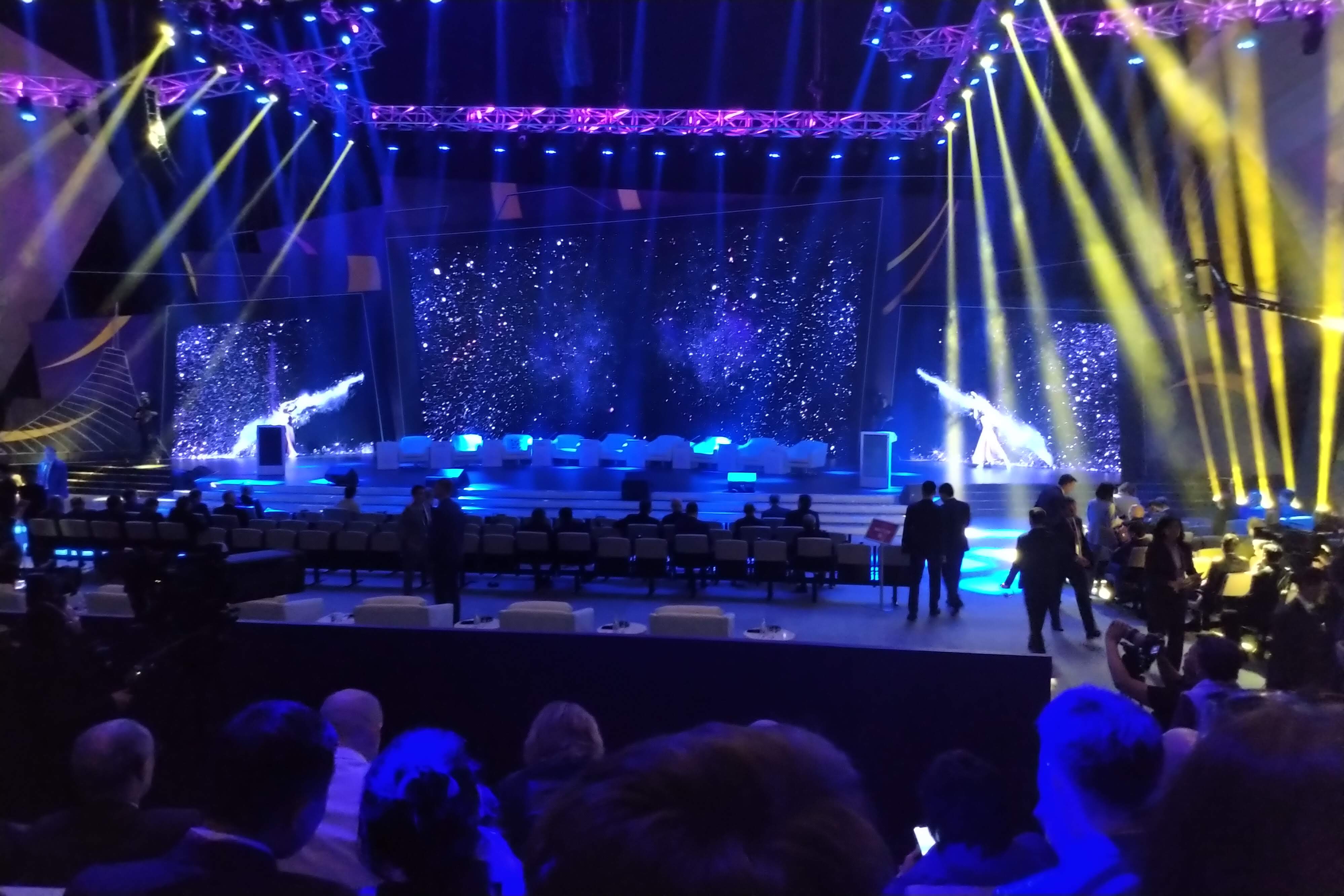
The opening ceremony of the Astana Economic Forum
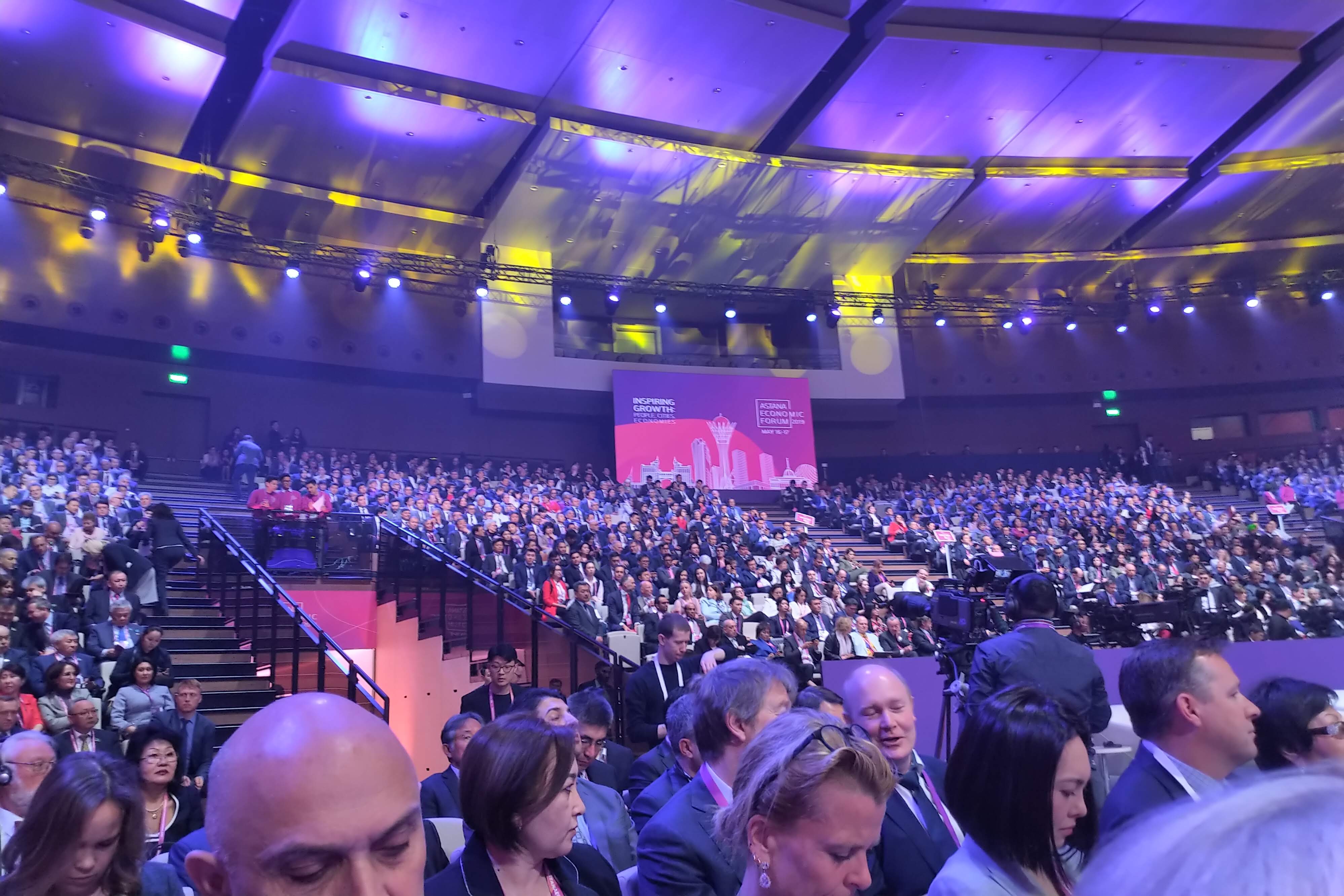
The Astana Economic Forum opening session. The AEF is the largest, most important conference in Central Asia.
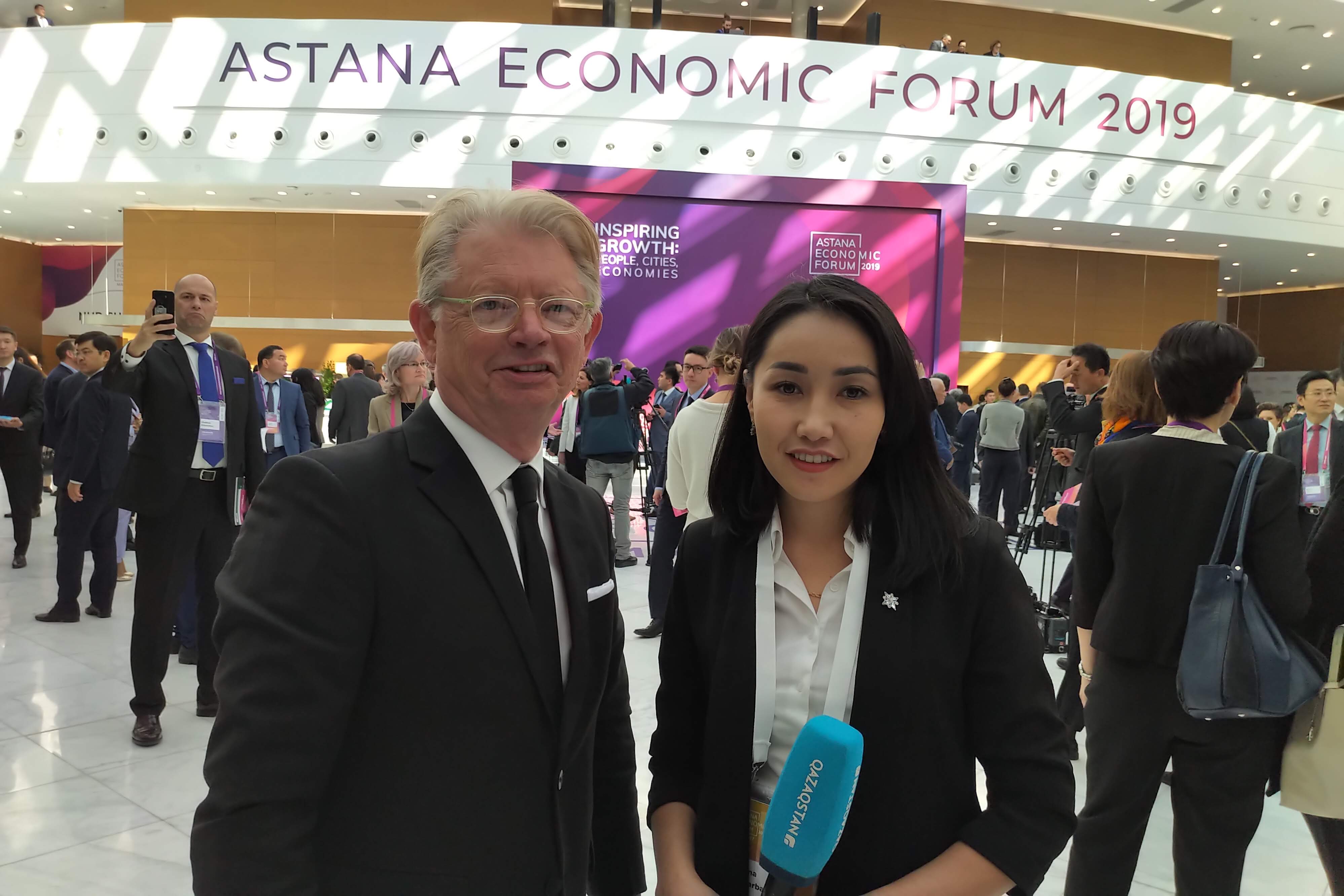
Just another TV interview in another city…: ). I’m told we made it on the major news channel in Nur-Sultan.
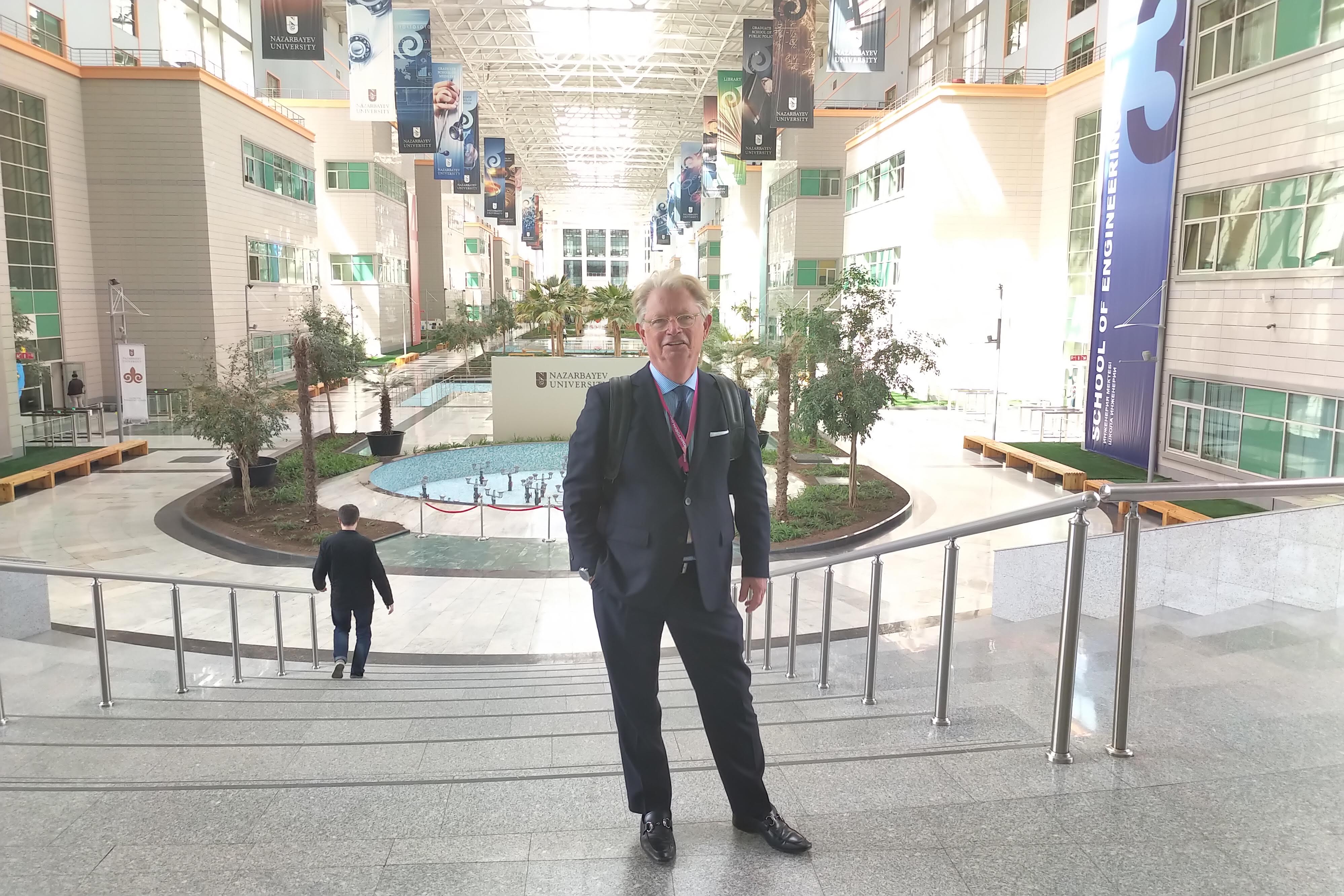
This is the indoor campus of the main university in Nur-Sultan. Everything is connected with inside courtyards, passage ways, etc. It gets cold, real cold.
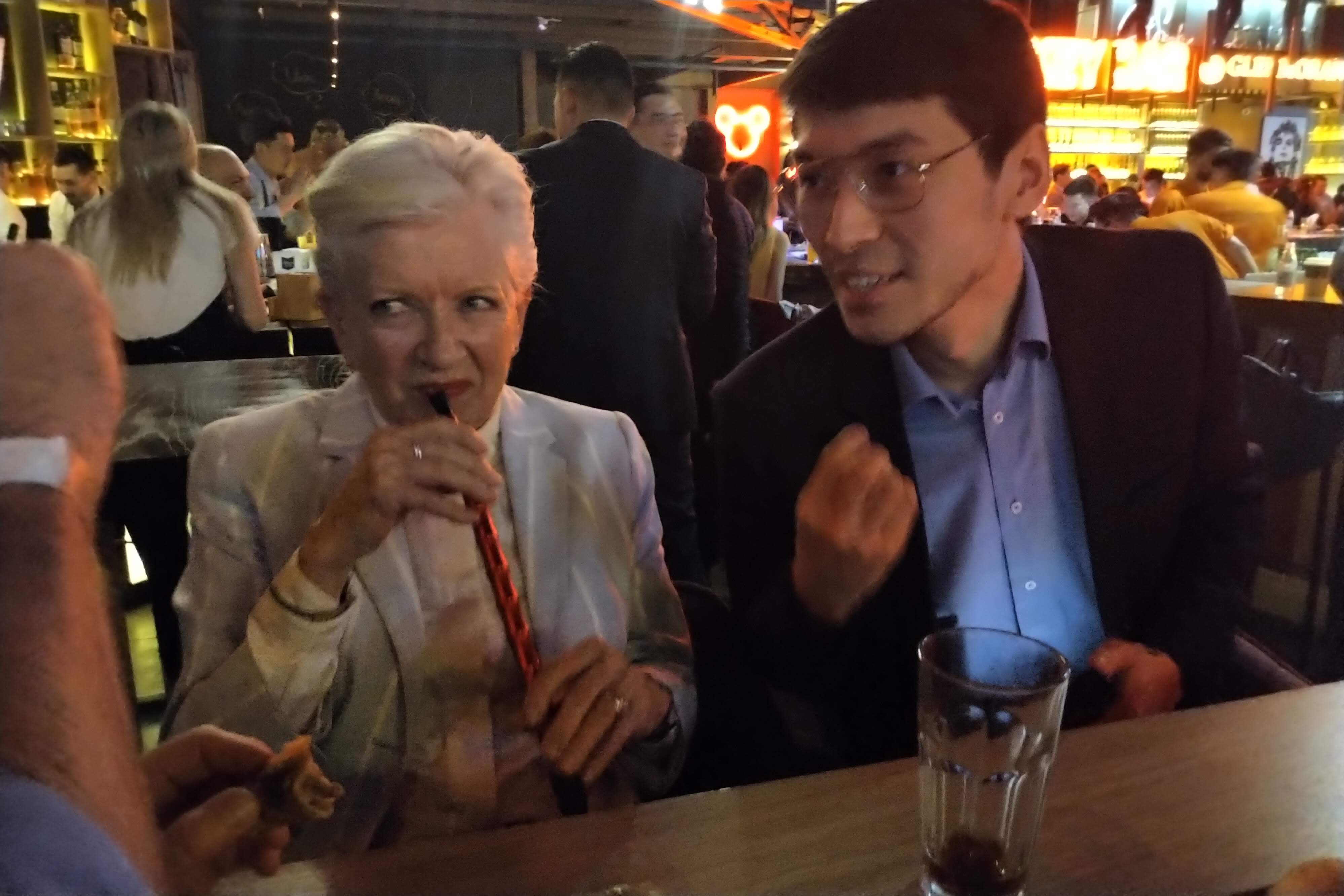
Karen tries a hookah in a Kazakhstan night club. One of our hosts, Zahssulan, gives Karen pointers. Smoking hookahs is one of the things KR liked about Kazakhstan.
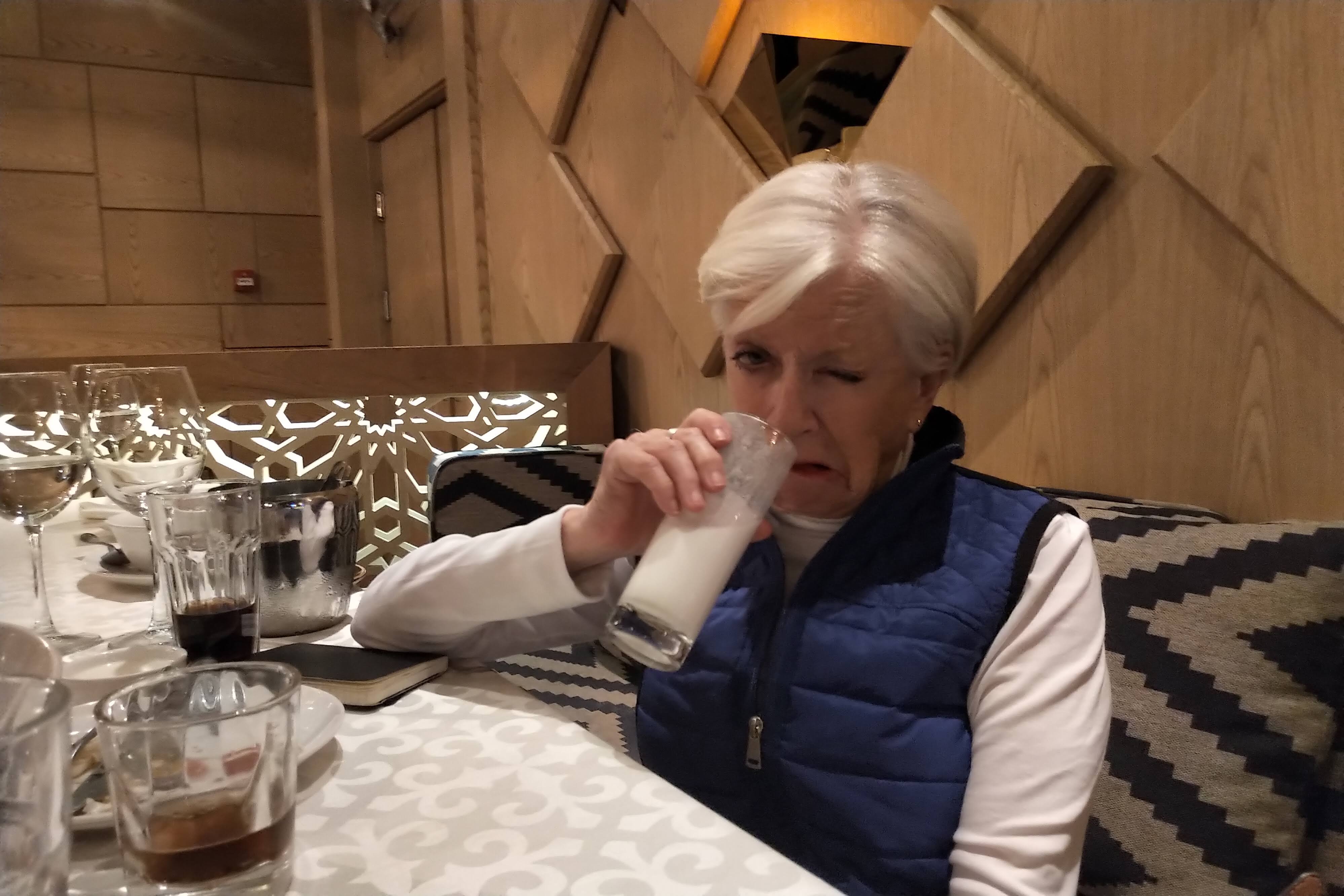
Drinking camel’s milk less so. Camel’s milk is a delicacy, but a taste that is acquired over time.
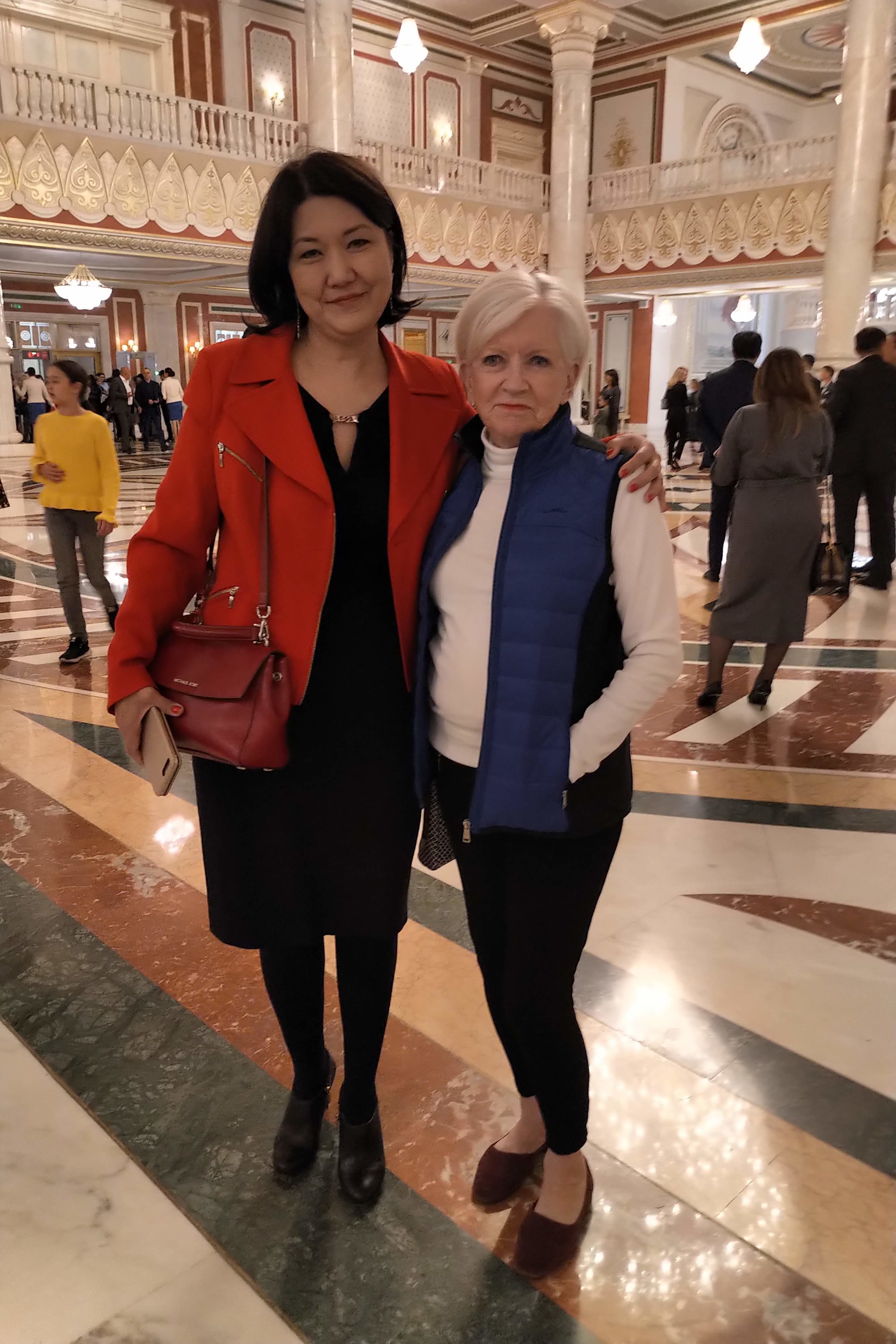
Saule, our host, and KR in the lobby of the Astana Opera House. We went to a piano concert which was very entertaining. Afterwards, we went to dinner and Karen had the above camel’s milk and I had to have more Horse Meat: )
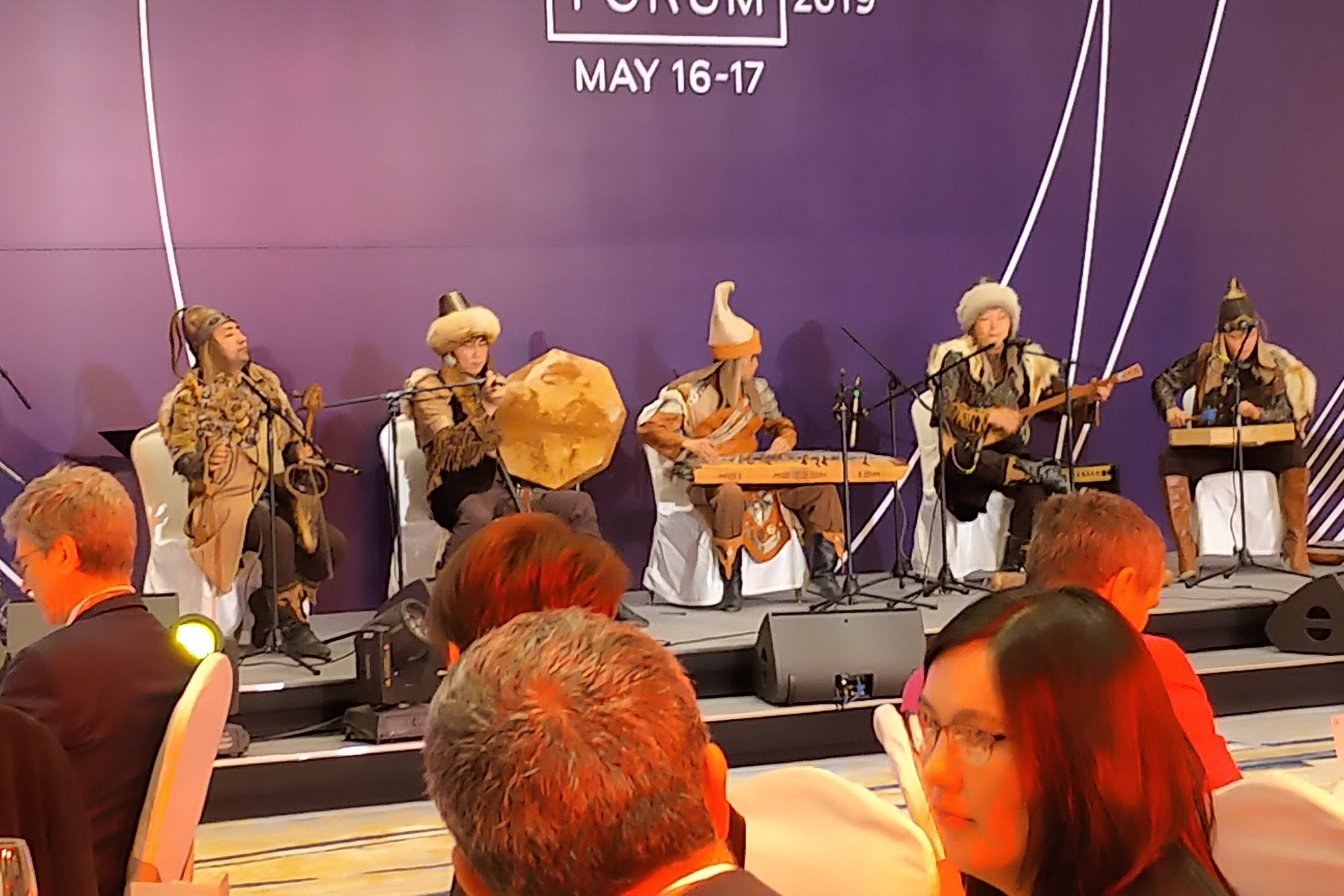
AEF Gala Dinner included local entertainment. These guys were very good.
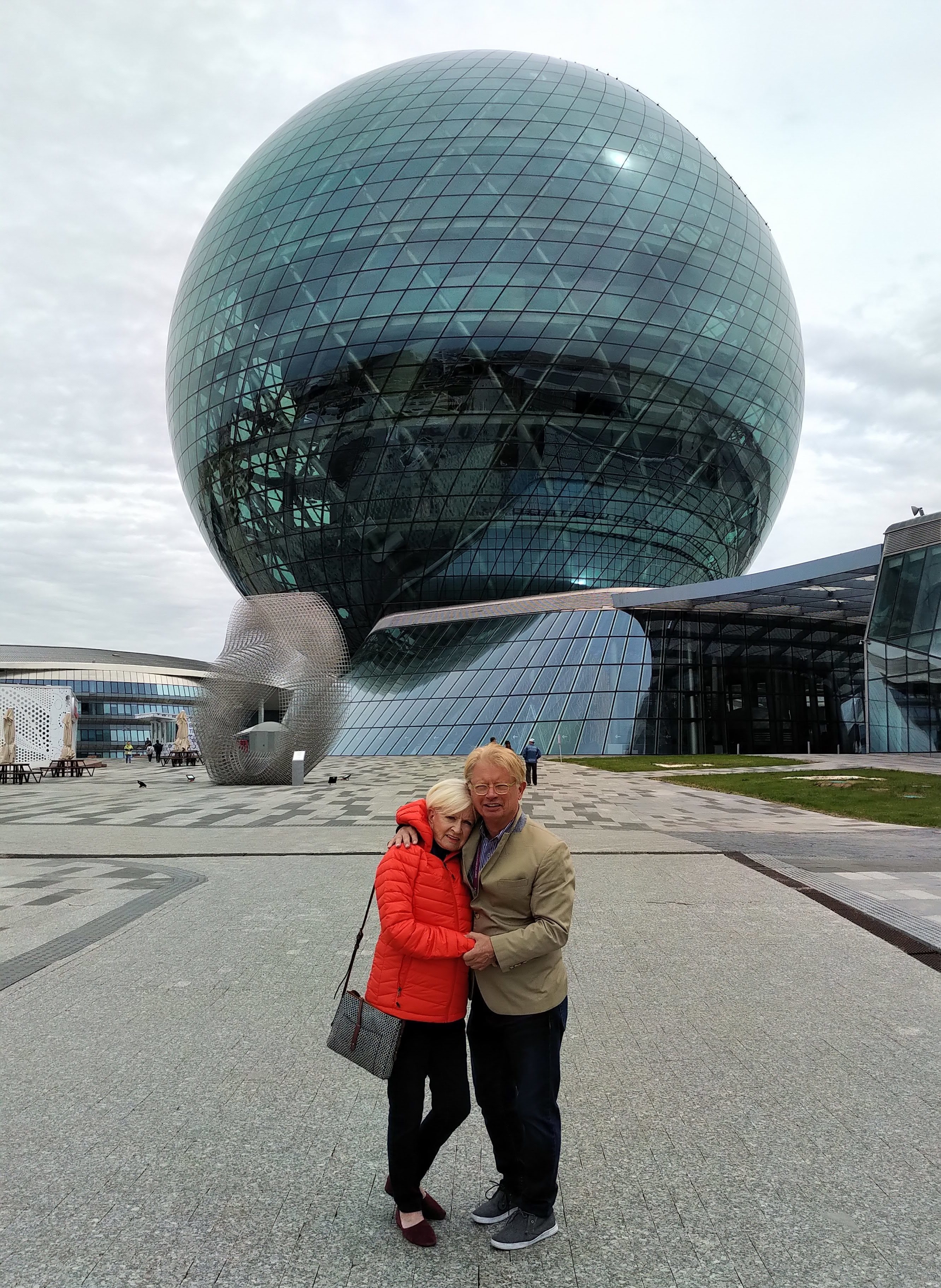
Immediately after this picture I went across the street to the mall and bought a coat. Temperature was one thing, wind is what really gets you.
Mongolia
Since we had three days between the end of Kazakhstan and the beginning of the Chinese leg, we thought we’d see what Mongolia’s like. After all, it was half way…
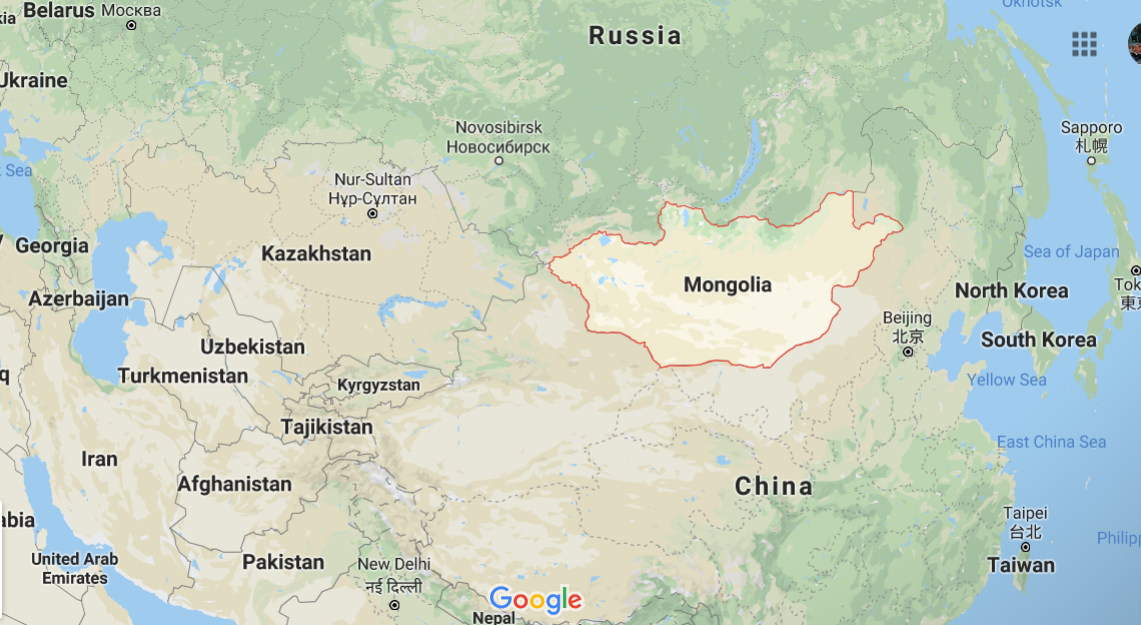
Not exactly on the way:). We needed to get from Kazakhstan to Guiyang, China (lower western part of China), so we thought Mongolia was on the way (not). We ended up flying from Kazakhstan to Beijing to Mongolia to Beijing to Guiyang and back to Beijing for the flight home.
The Cliff Notes Version: We flew into Mongolia’s capital, Ulaan Baatar in the upper eastern part of the country, hired a guide and driver, and then proceeded to spend the next two and a half days going west into the Mongolian steppes and Gobi desert. We spent two nights with two different families sleeping in Mongolian gers. We rode camels, horses, and had a cocktail sitting next to a goat. We watched a real Mongolian BBQ get cooked and huddled around a cup of coffee sitting out side in the “brisk” Mongolian morning. We learned about Genghis Khan and how Mongolia dominated the world around 1200 BC. We spent our last night in Ulaan Baatar doing what tourists do — shopping.
The Nomads and Herders of Mongolia: By far and away the most amazing thing was to experience/see how most Mongolians outside the city live. They are called nomads for a reason. The easiest way to describe them is to understand that they aren’t farmers or ranchers in our sense of the word, but rather “herders.” Most have up to five different herds of animals — goats, cows, horses, sheep, camels for example — and no fenced in land to graze. Instead, they “herd” each type of animal throughout each day, moving from one pasture to another. They do this on horseback and (the younger generation) on motorcycles with the help of a dog. It starts at sunrise and goes on past sunset.
They’re nomadic because they literally move their gers each season. They plan these moves very carefully, relocating to particular pastures for specific reasons. They usually have a winter place that has a more permanent structure for the family and animals, still primitive.
A typical family (BTW, that means the extended family of mom, dad, grandparents, brothers, grandkids) might have 2-3 gers, a small Russian truck, a motorcycle, and all the things that might go in them. They can put up a ger and fully furnish it in one hour, which seems impossible when you see how they’re constructed and what’s inside one. Each ger has a couple of hard cots, a stove in the center, a couple of wooden dressers to store stuff, plastic table and chairs to eat and sit at, and…. a flat screen TV which is powered by a couple of solar panels stuck in the ground with a couple of wires running to a car battery inside.
There is no running water, no indoor plumbing, no “trash collection,” etc. Everything is carried in, grown, harvested or carried out. Usually in the truck, motorcycle or horse.
As you would expect, mom takes care of the food and house, dad, grand dad and son take care of the animals. If they have breakfast, its very very early in the morning before starting to move the herds. Dinner takes place around 6 or 7, after which they prepare the animals for night. During the night one can hear lots of conversation and laughing. Vodka is the preferred drink.
While the herder life wouldn’t be characterized as civilized by those of us living in cities, especially cities in the West, I’m not so sure it is not civilized in the usual meaning. These folks have a close relationship with each other, the land and their animals. They eat what they grow or can find. There isn’t a lot of time for things that aren’t work related, but once again, they seem to be a happy bunch. No one punches a clock, no one take orders, no one has the stress of a deadline.
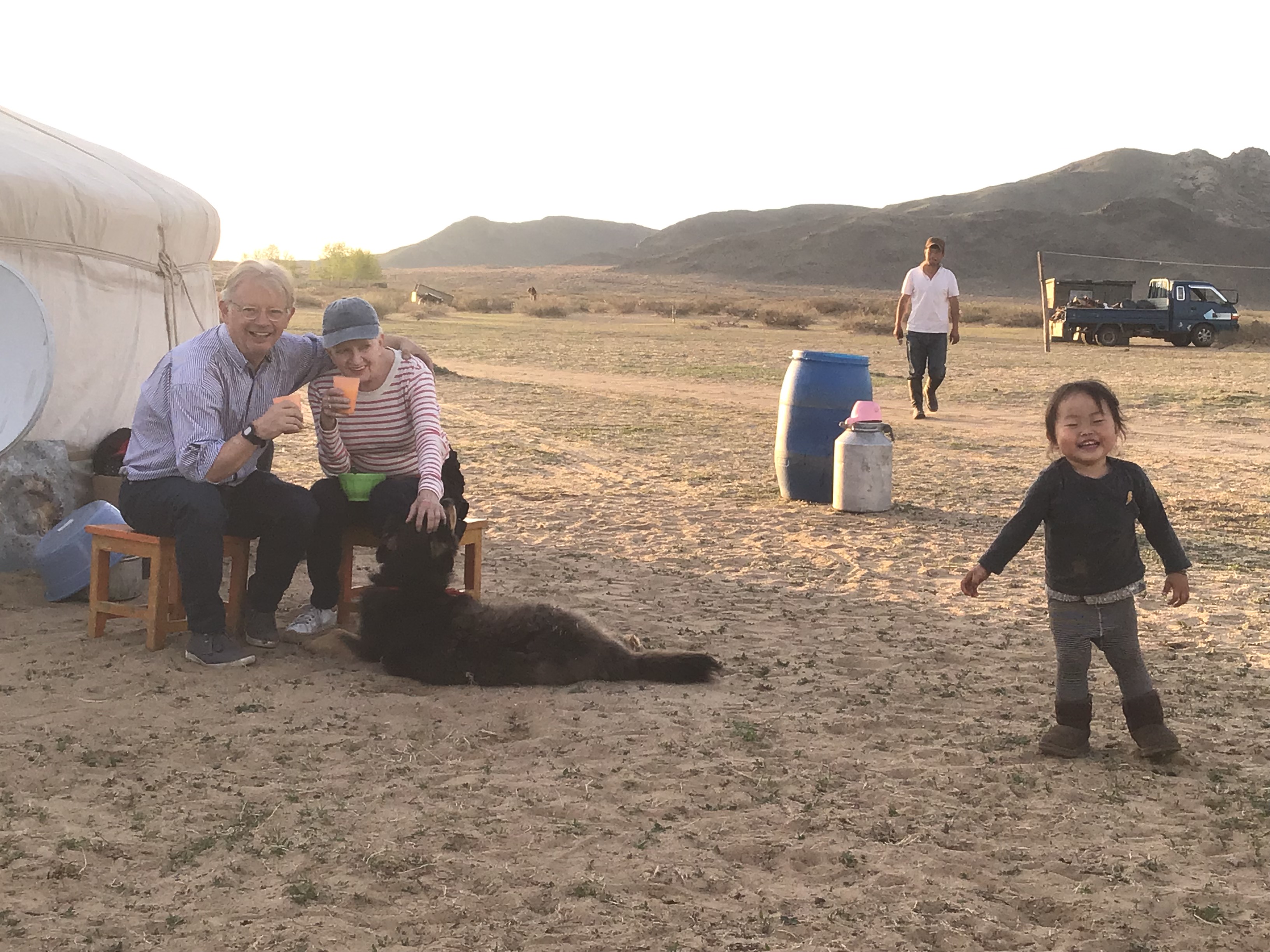
Without a doubt the highlight of the trip was staying a couple of nights with herder families in gers. This is before dinner cocktails, on a couple of stools, watching the kid play. Dog is at our feet. Her uncle is in the background.
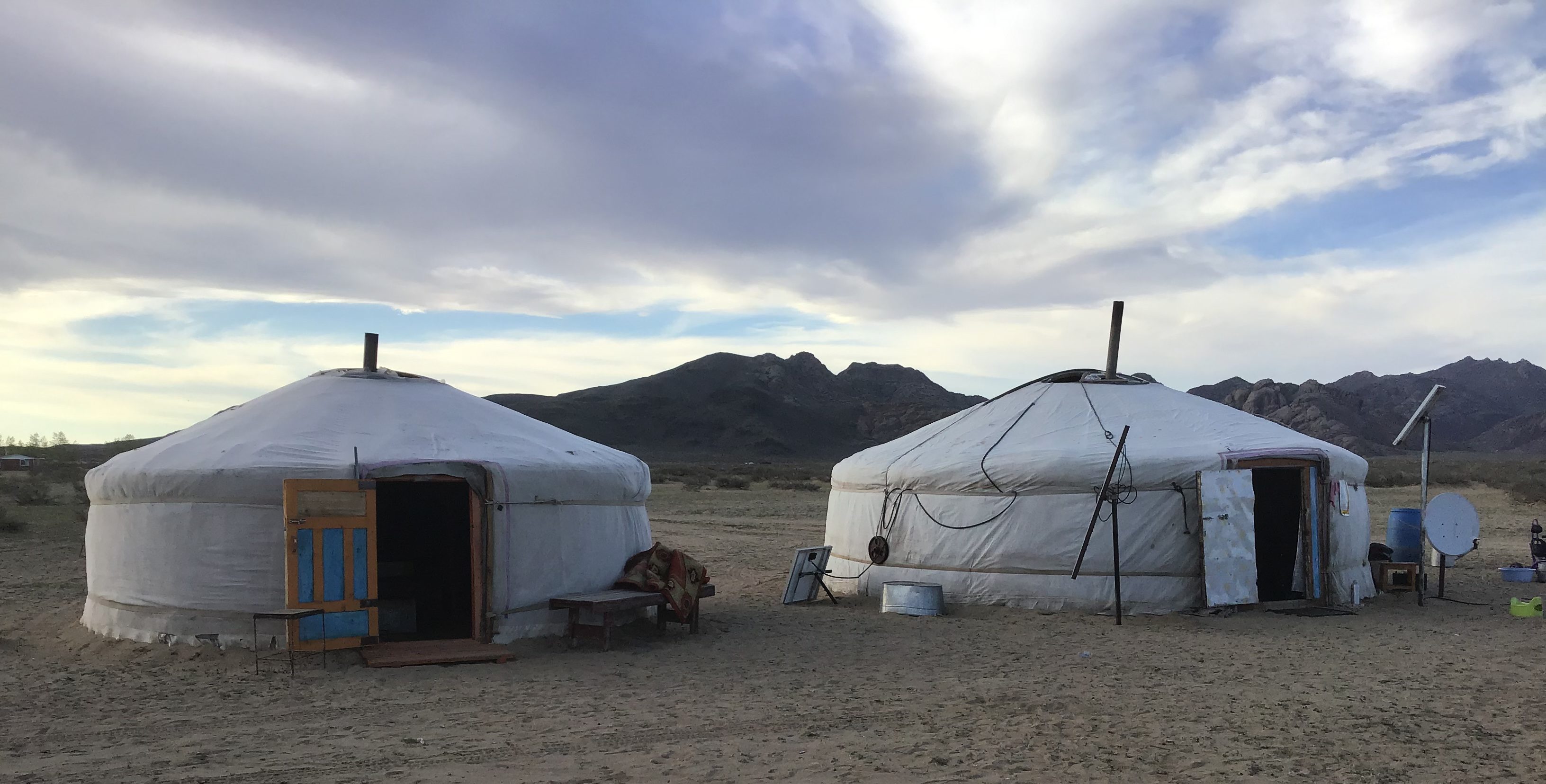
Our ger is on the left. This family moves four times a year. They had just set up their summer camp before we arrived. It took them an hour to set these up.
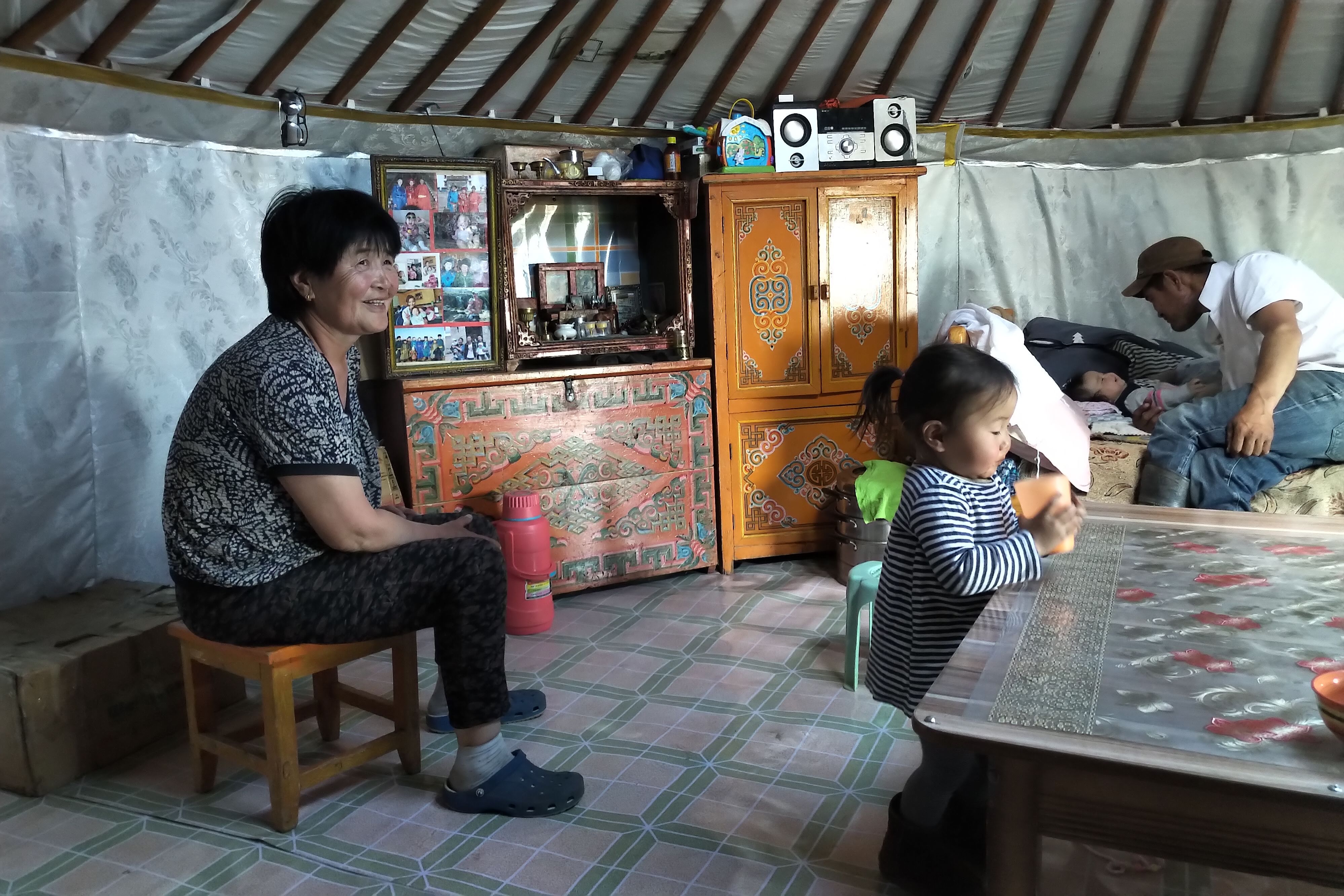
Inside. Grandma watches grandchild play at the “dining room” table. The mother’s brother plays with the youngest child in the background.
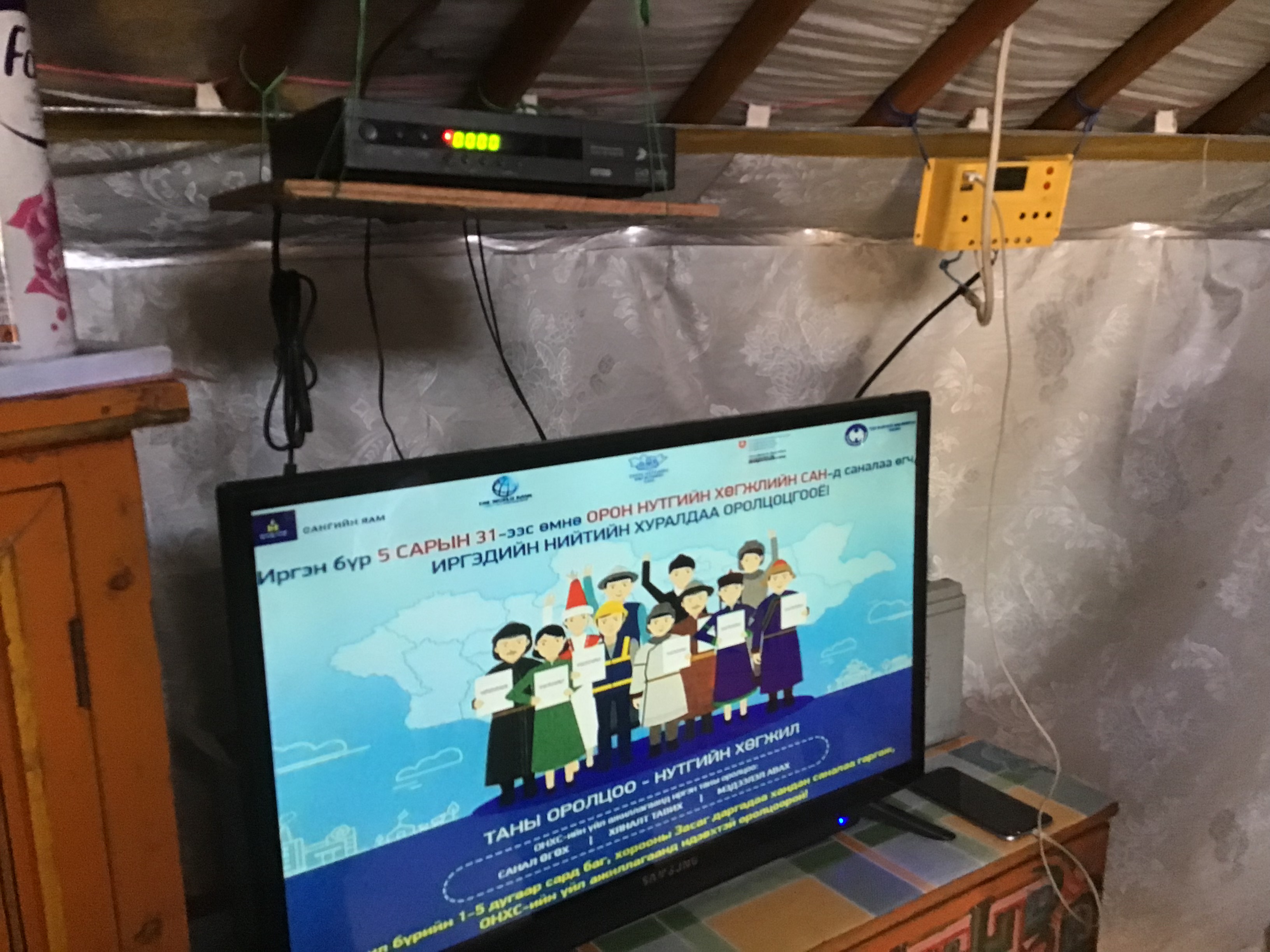
Even Mongolian Nomads need some basics: solar panels, battery, inverter, satellite dish and flat screen TV. These are apparently more important than running water and indoor plumbing.
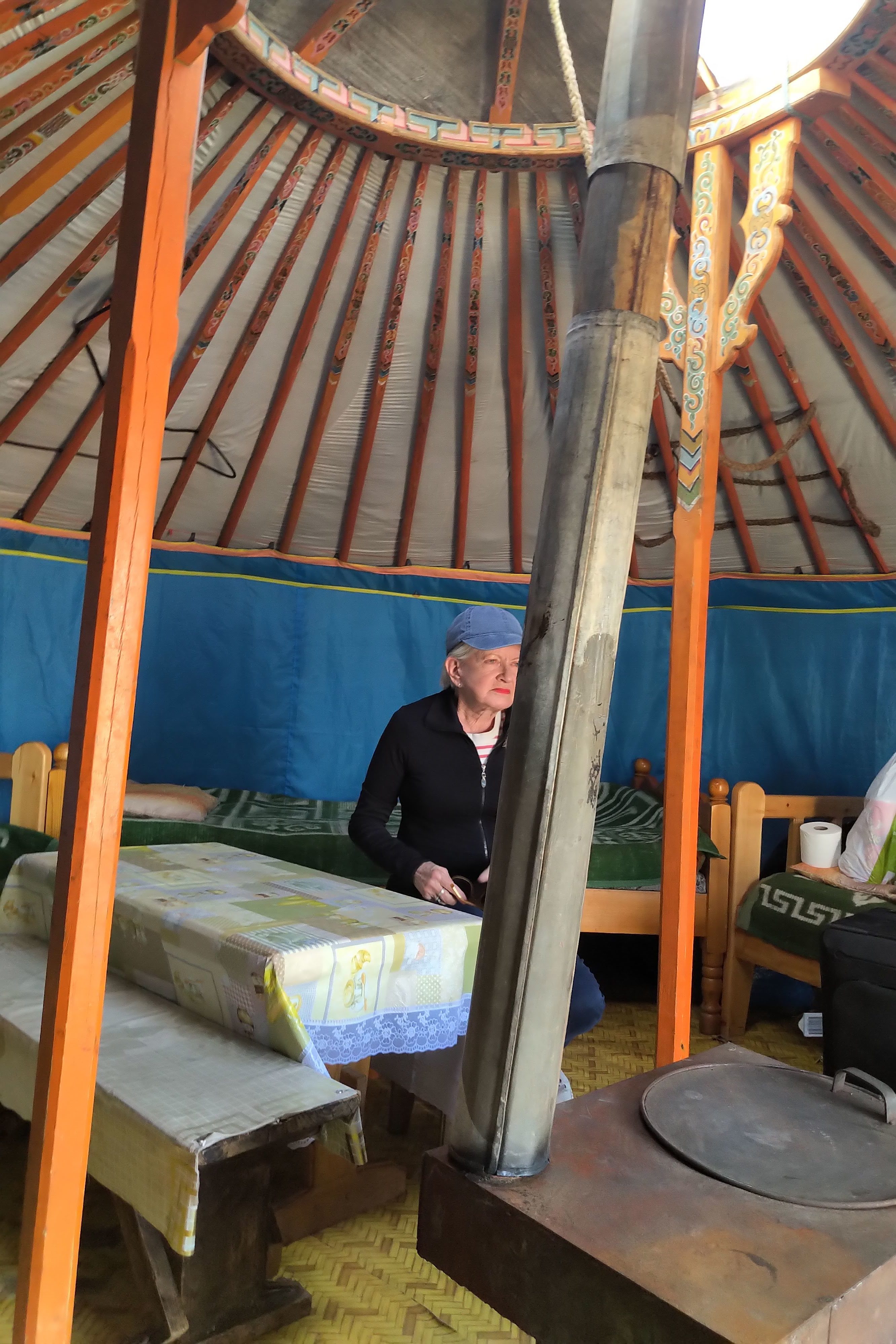
Ever since the idea of going to Mongolia came up, KR has been dreaming of staying with a family in a Mongolian yurt. Here she sits at the dining room table of our abode.
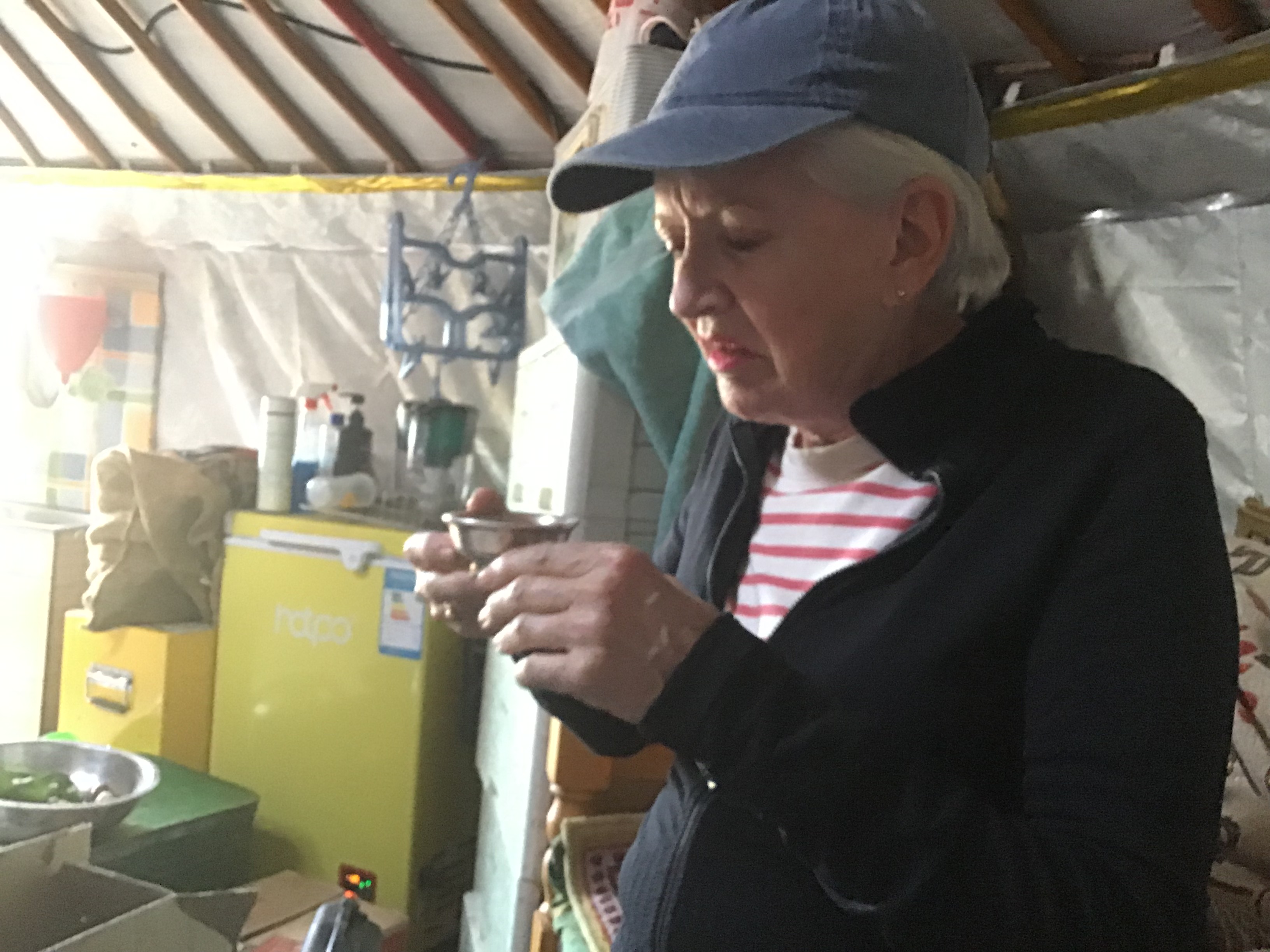
Taking a sip of Mongolian Fire Water.
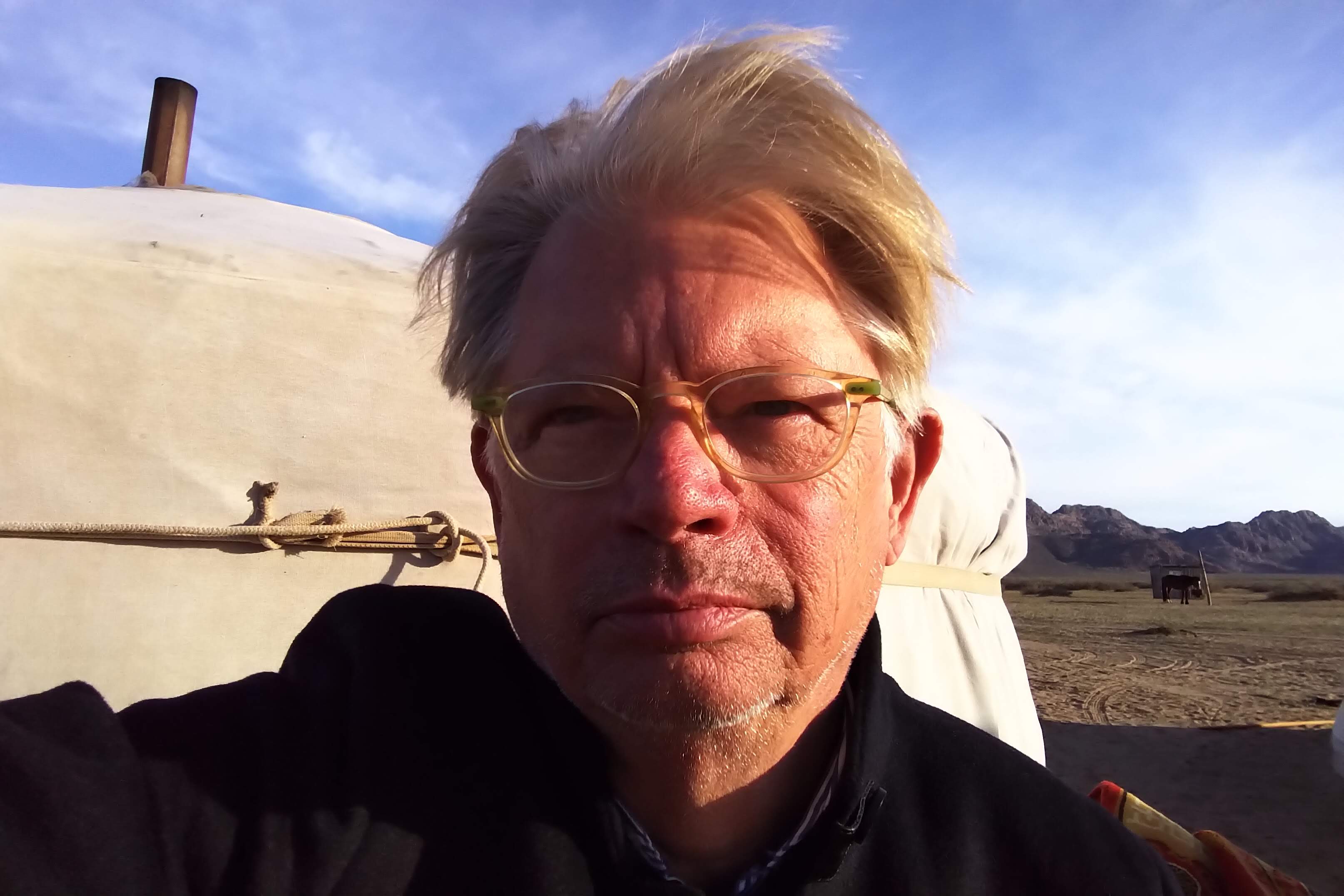
This is what a Mongolian hangover looks like. It seemed like a good idea at the time…
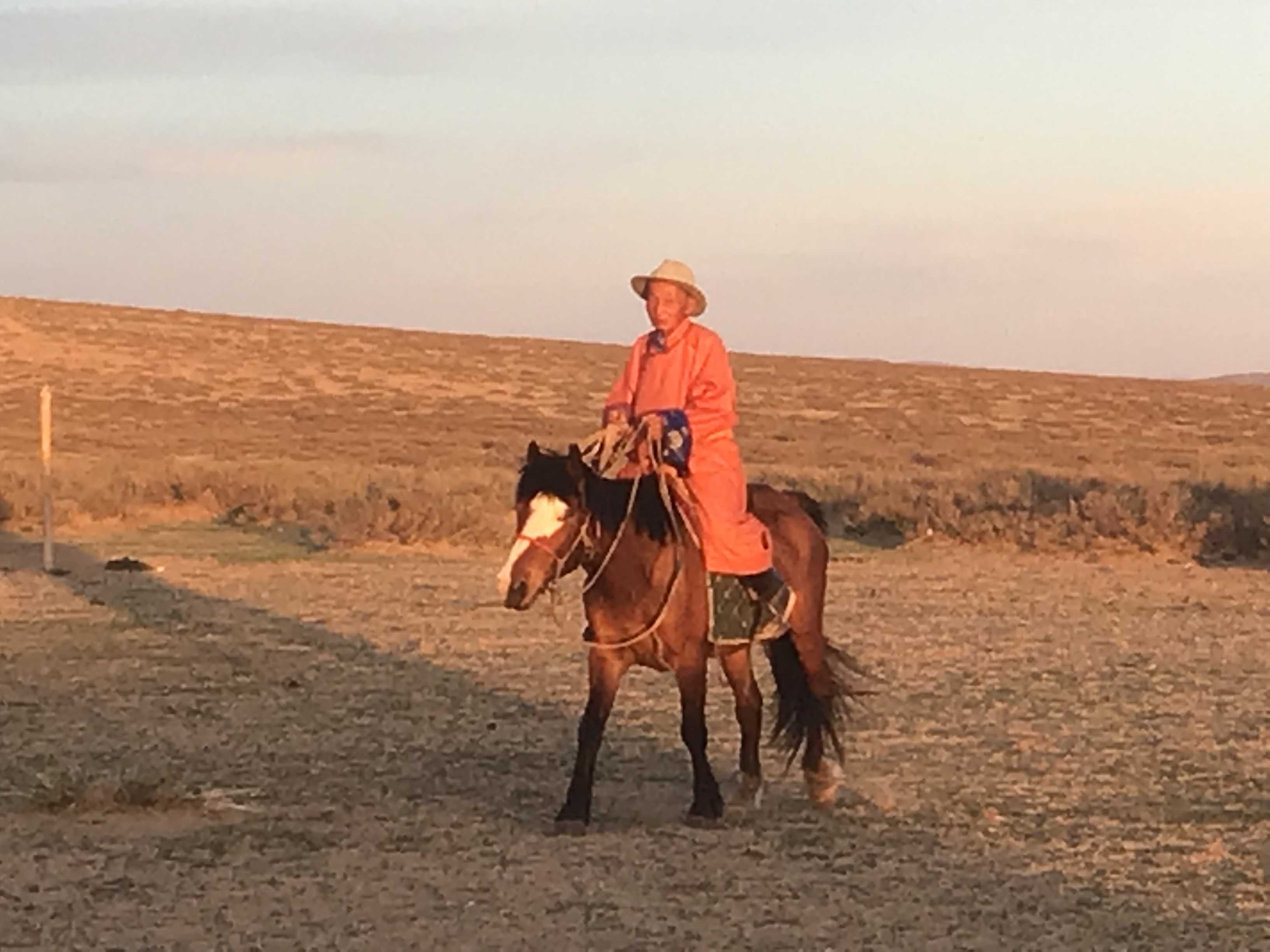
This is Grand Dad just before sunset. Hes riding out to move his herd of cows. He’ll move them again at 5:30AM
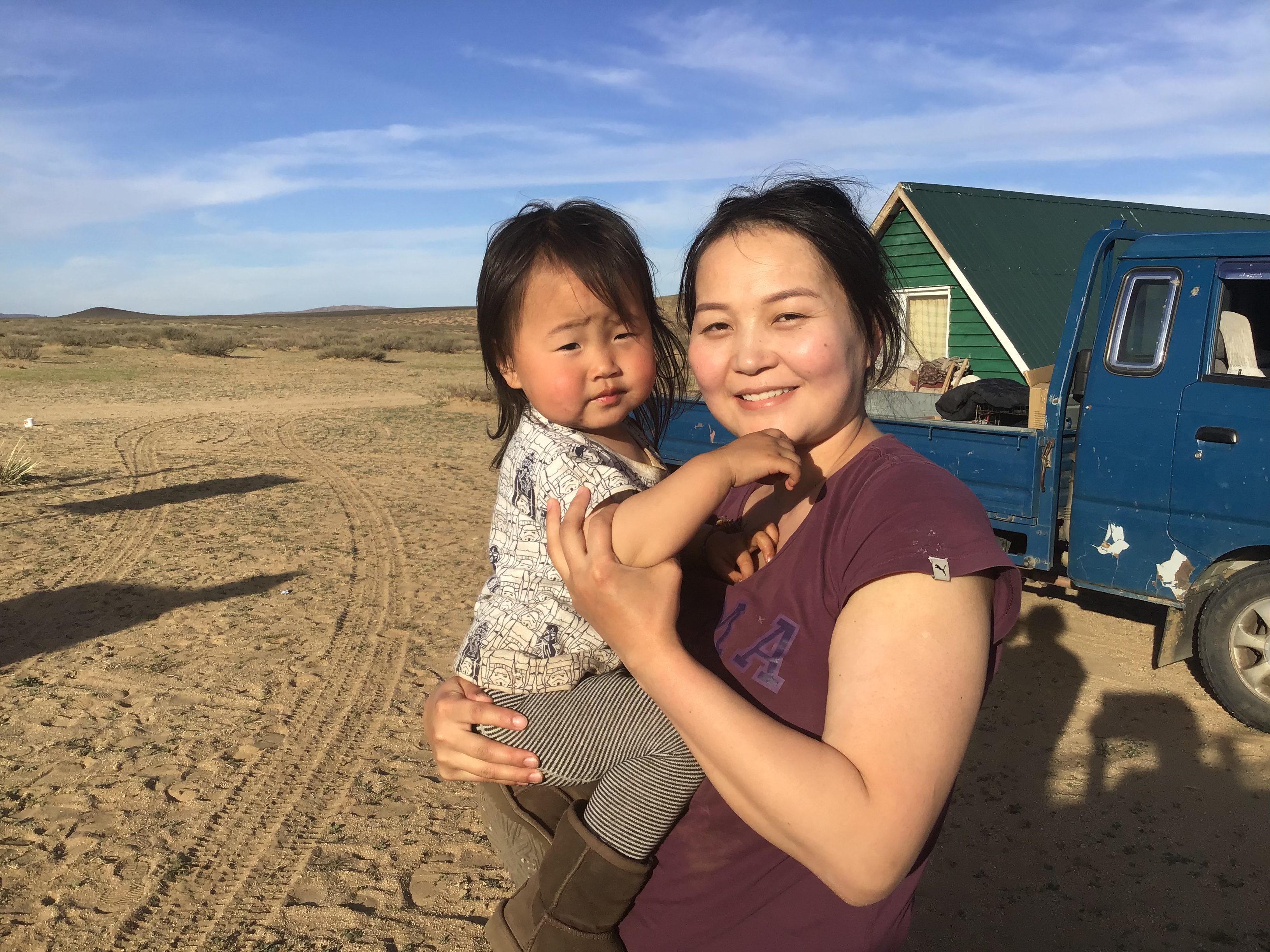
Mom and oldest child. Dad was nowhere to be found, but she has the support of her extended family. All in all, Mongolian herders seem to be a happy lot.
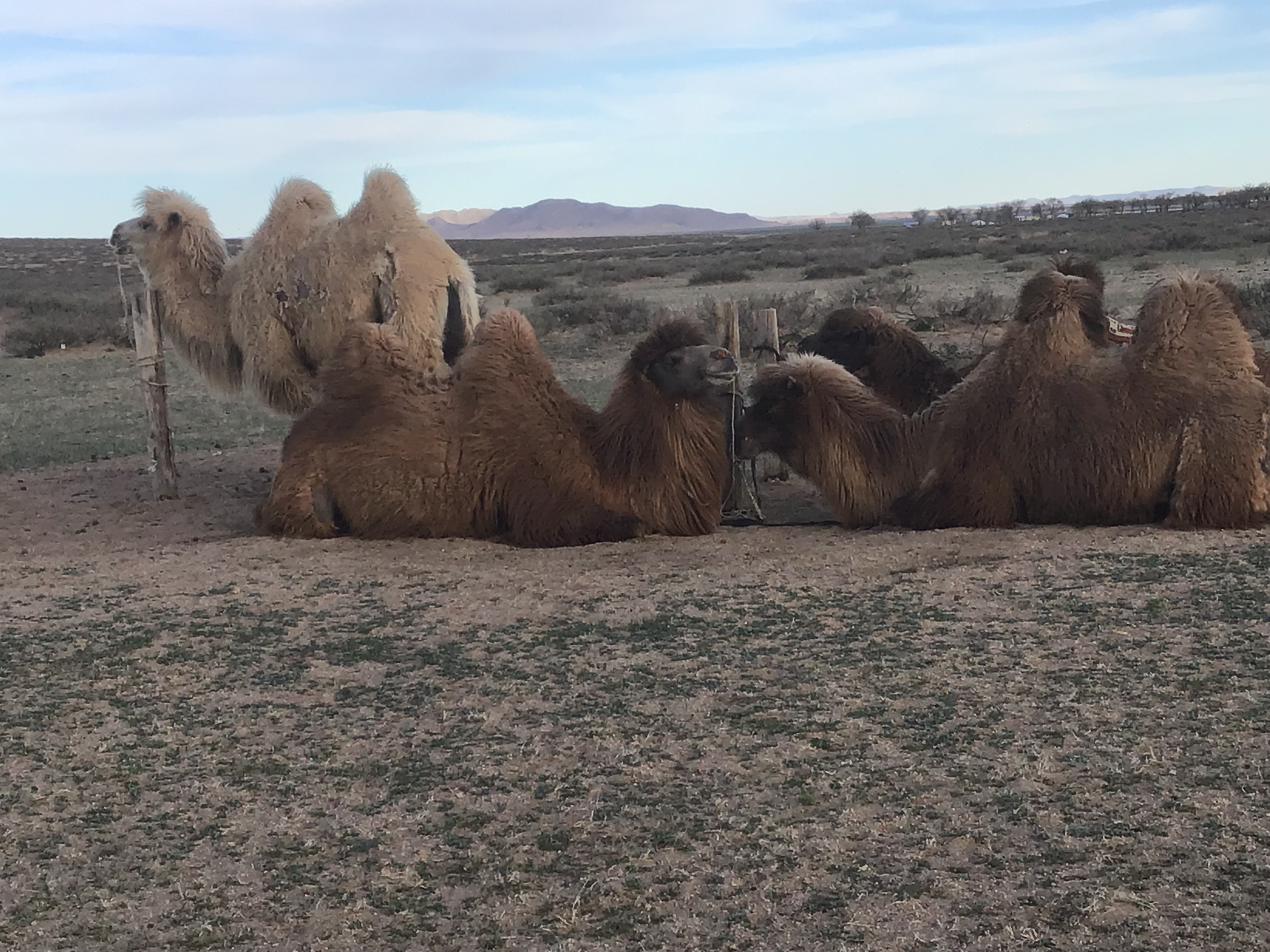
Little did I know they were waiting for me: ). Mongolian camels are shorter than Egyptian camels with much longer hair.
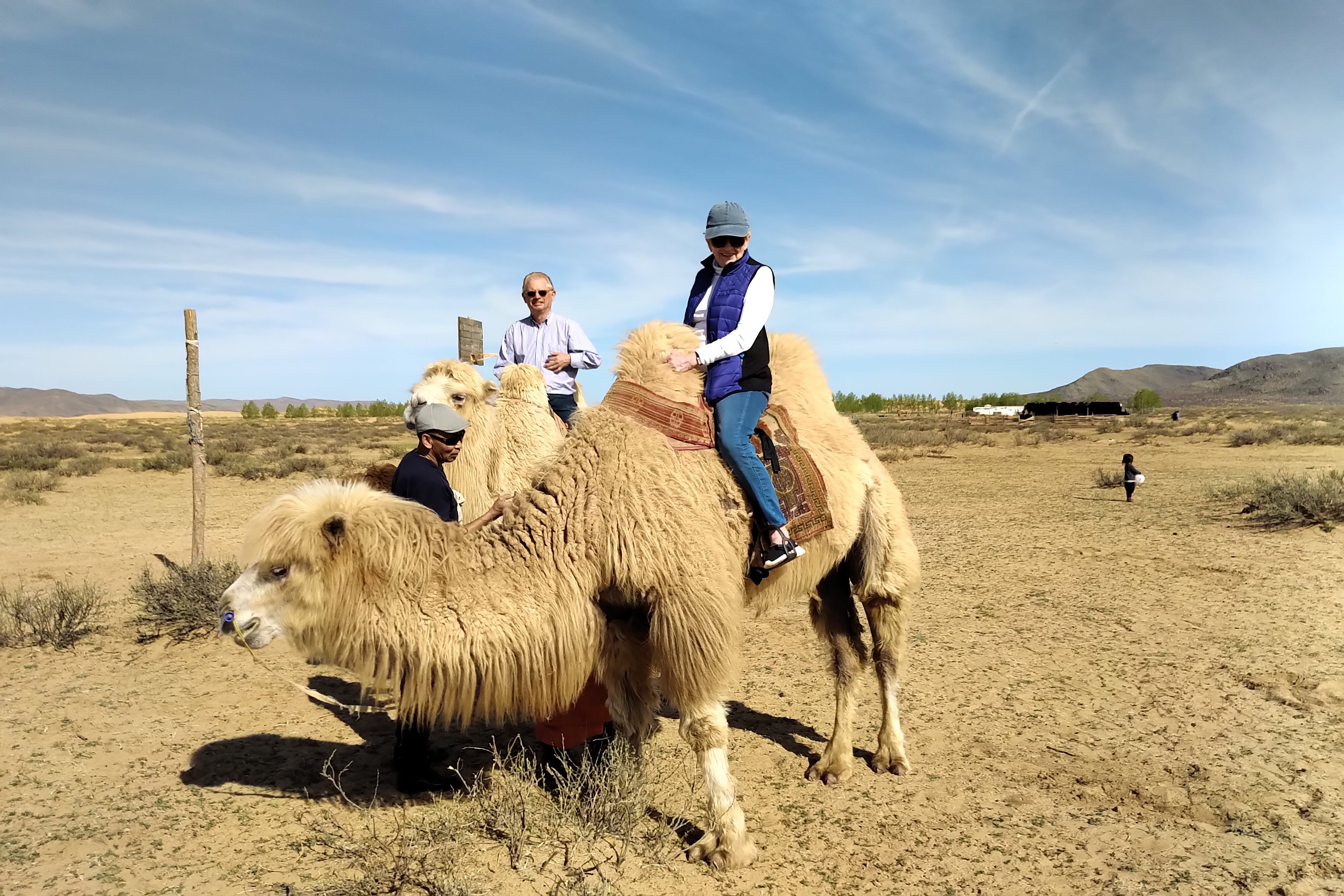
And into the Gobi desert we go!
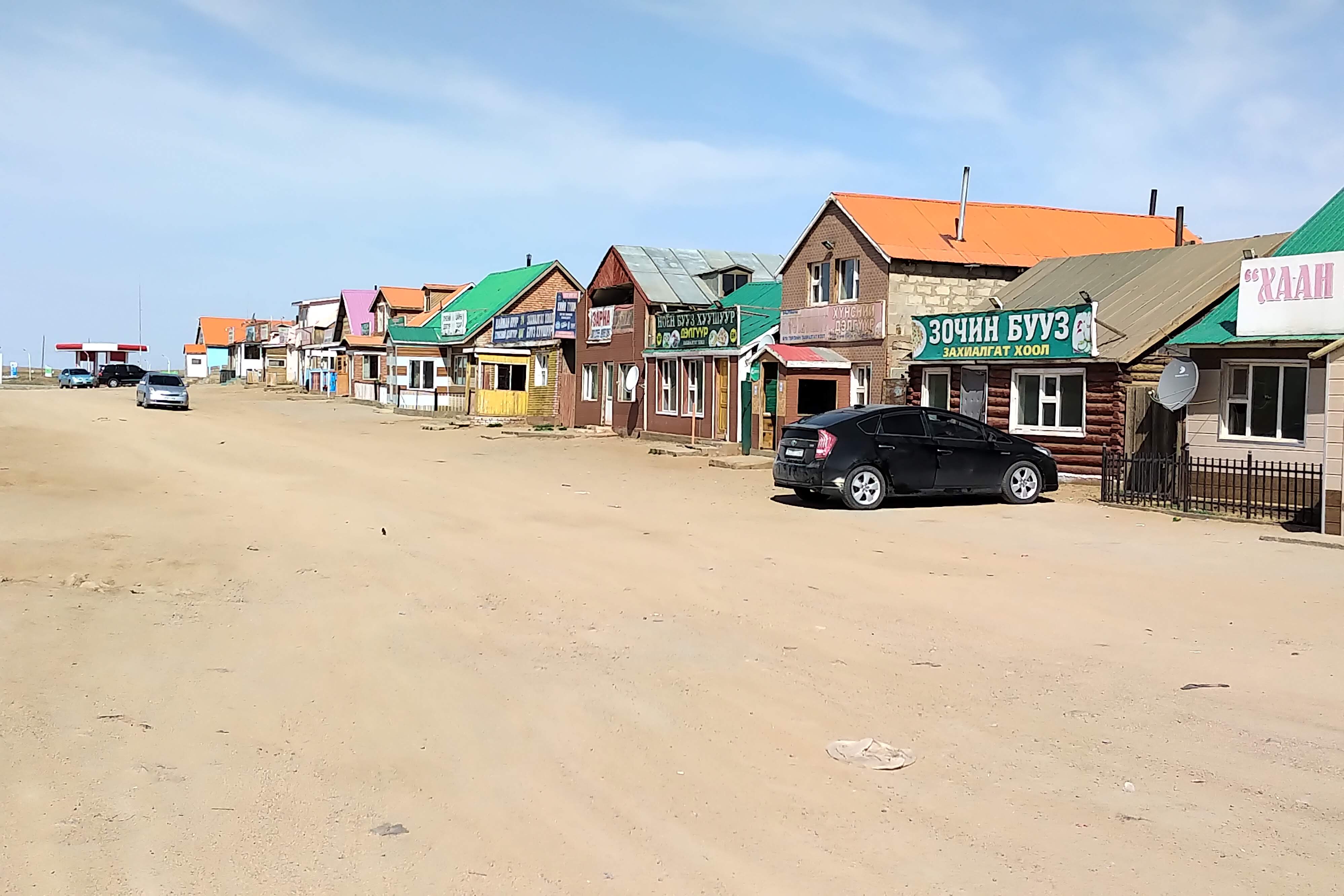
We drove EIGHT HOURS west into the Mongolian steppes from the capital. This is an example of the very occasional tiny town we came upon.
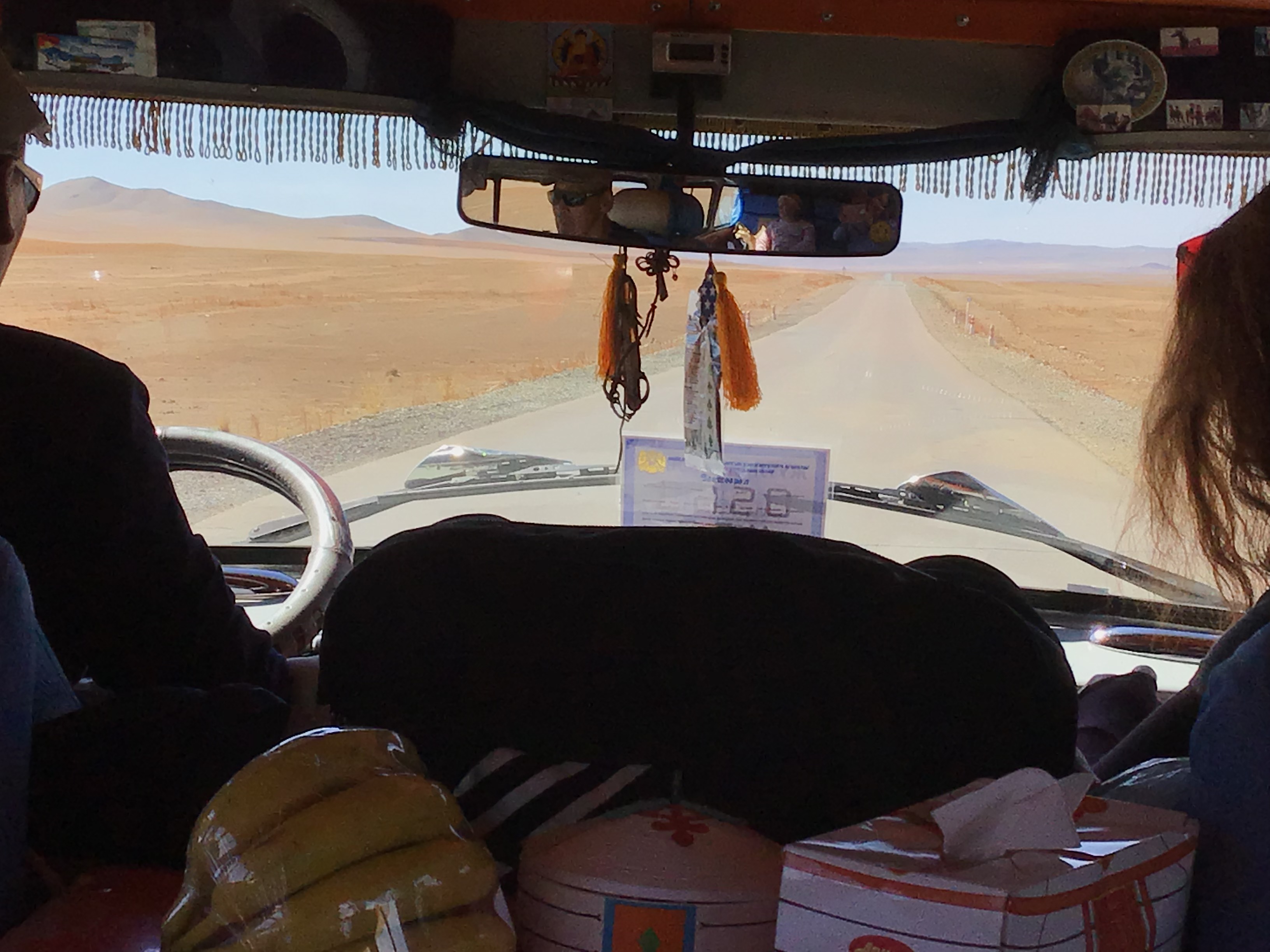
Basically, its 8 hours of this
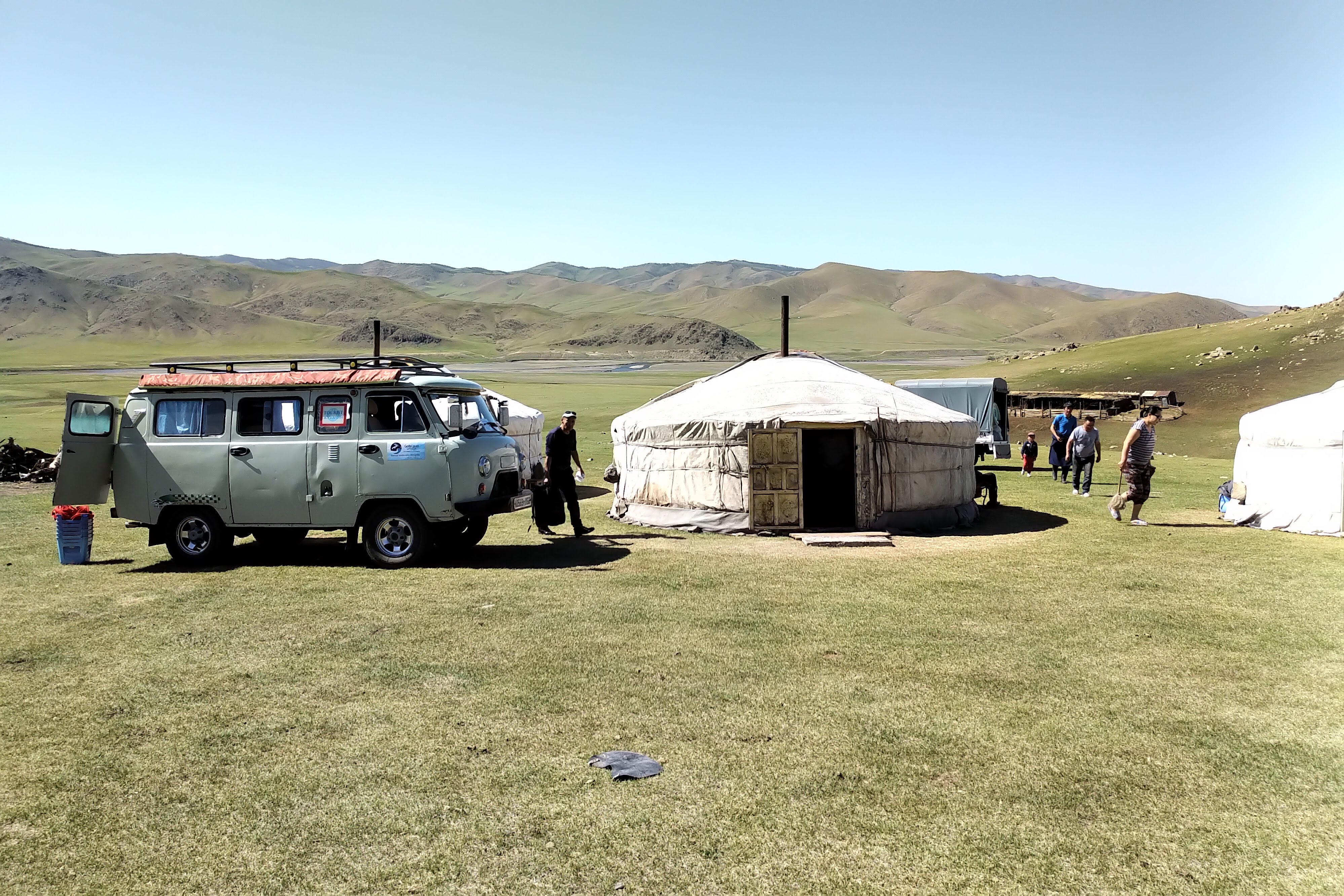
We arrive at the second family’s “house,” On the left is our 4WD Russian knock-off of a VW van. Not very fast. Not very comfortable. But it took us everywhere.
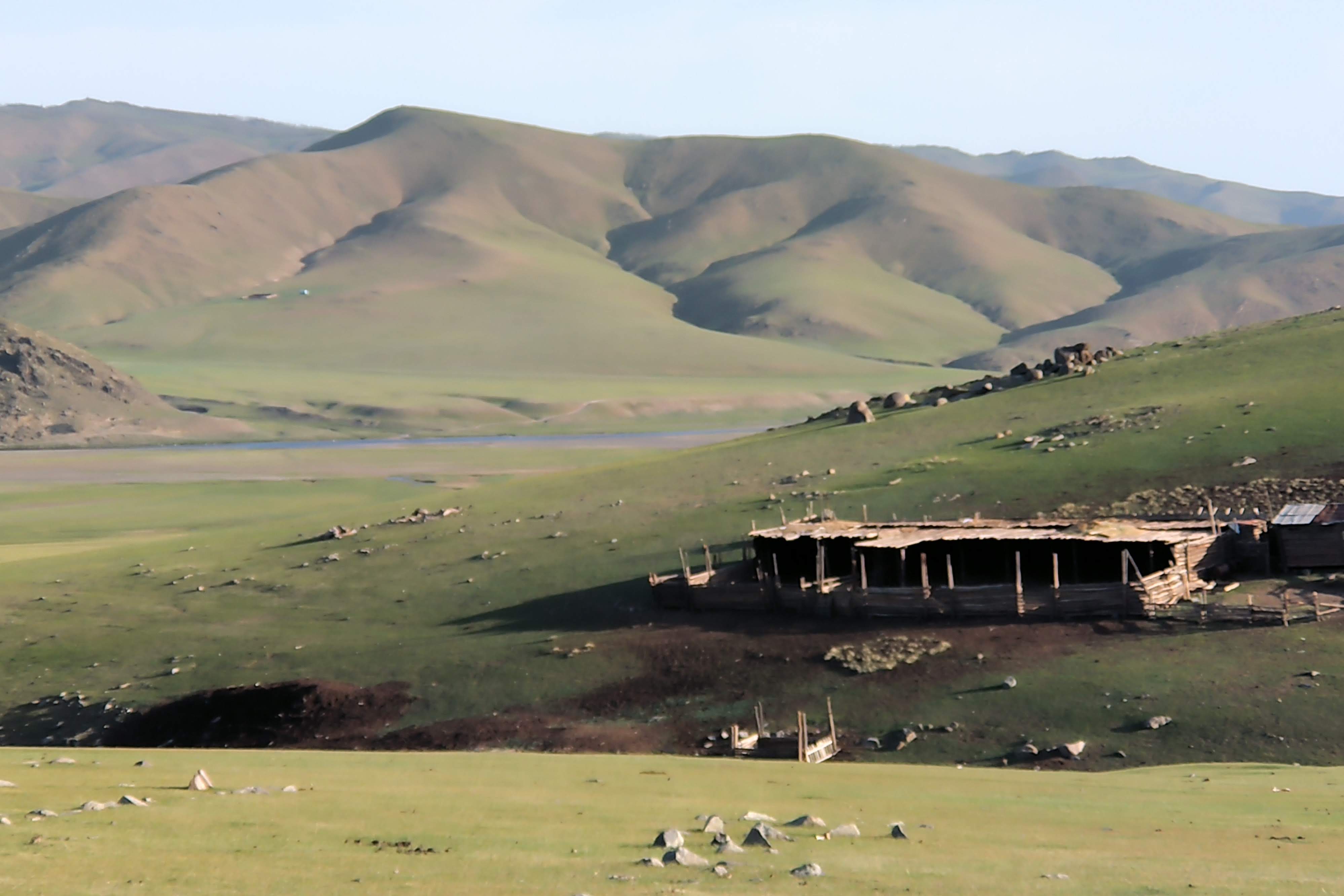
This family’s summer camp is overlooking a valley in the steppes. Structure on the right is a permanent shelter for animals when it gets cold. Look hard enough and you’ll see a river than runs through the valley.
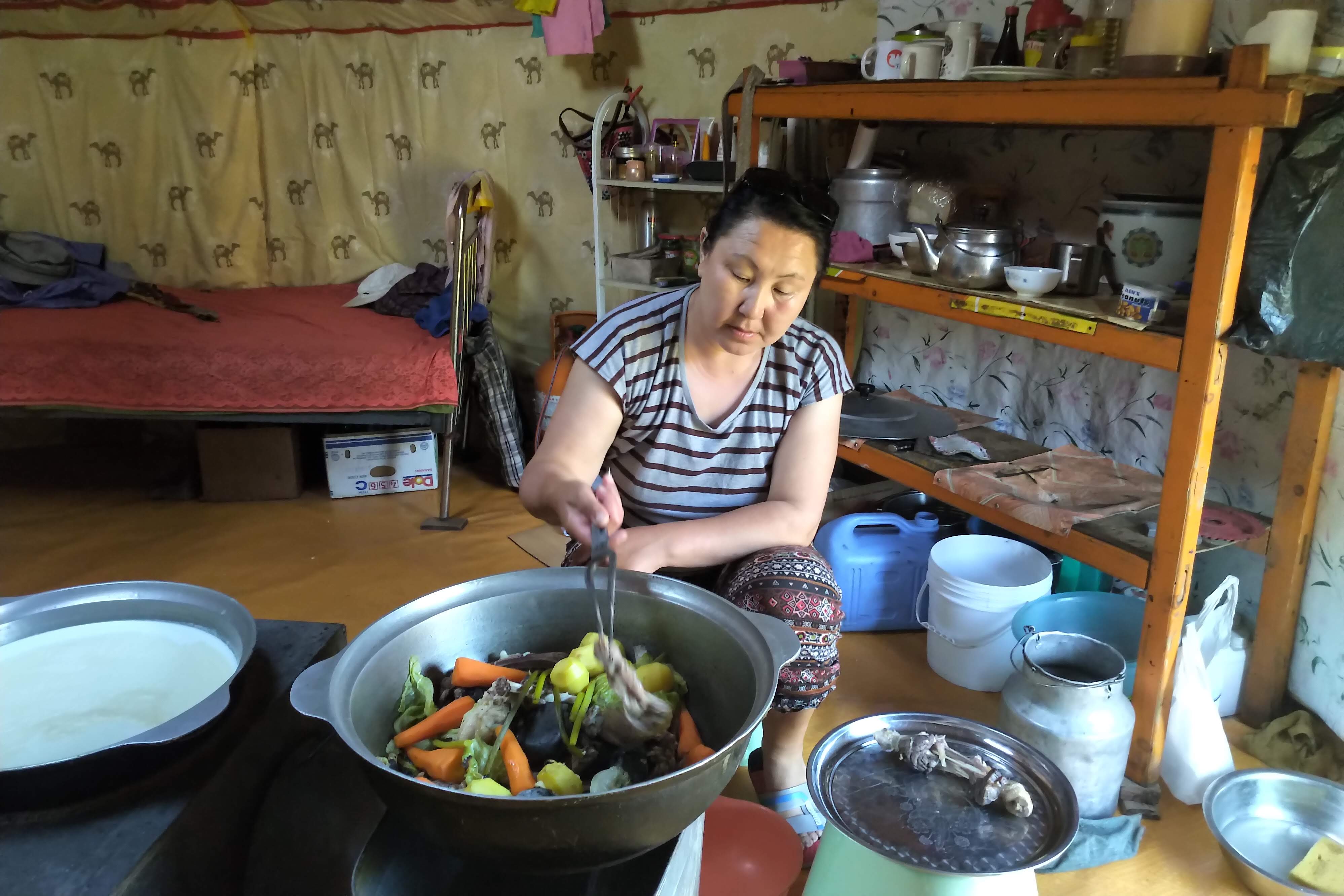
Mongolian BBQ before our eyes. This was about a two hour process not counting killing, skinning and chopping up the lamb. She’s putting hot coals directly on the meat before letting it simmer for a while.
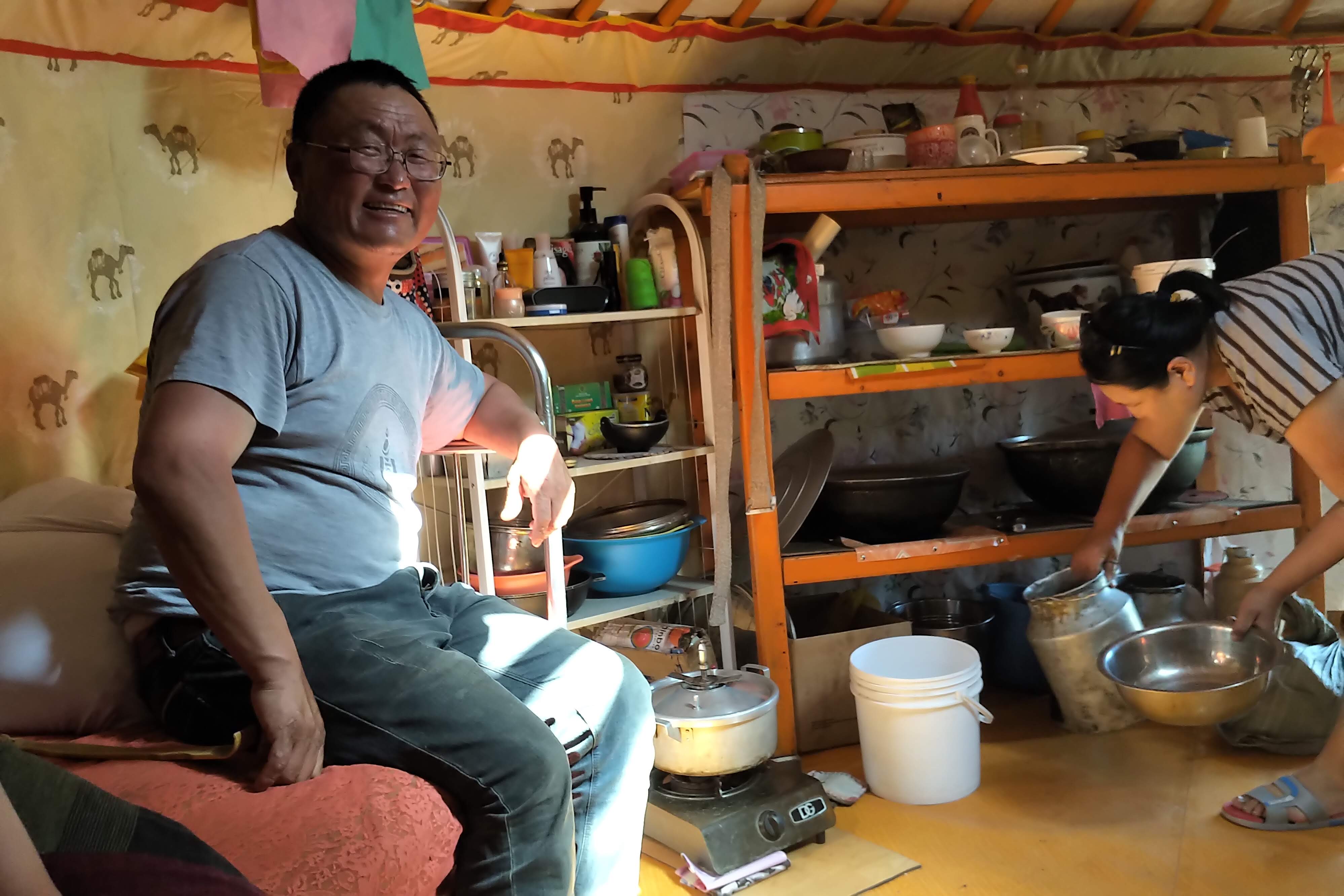
This is dad waiting for dinner. This is about 6PM. After dinner, the son gets on a small m/c and rides over the hills and brings the sheep/goat herd home. Then everyone herds the sheep/goats into the corral to separate the mothers from the children. That way, the mothers will produce milk for the farmers. Only after all of this is done do they settle in for the night. Repeat the next day at 5:30.
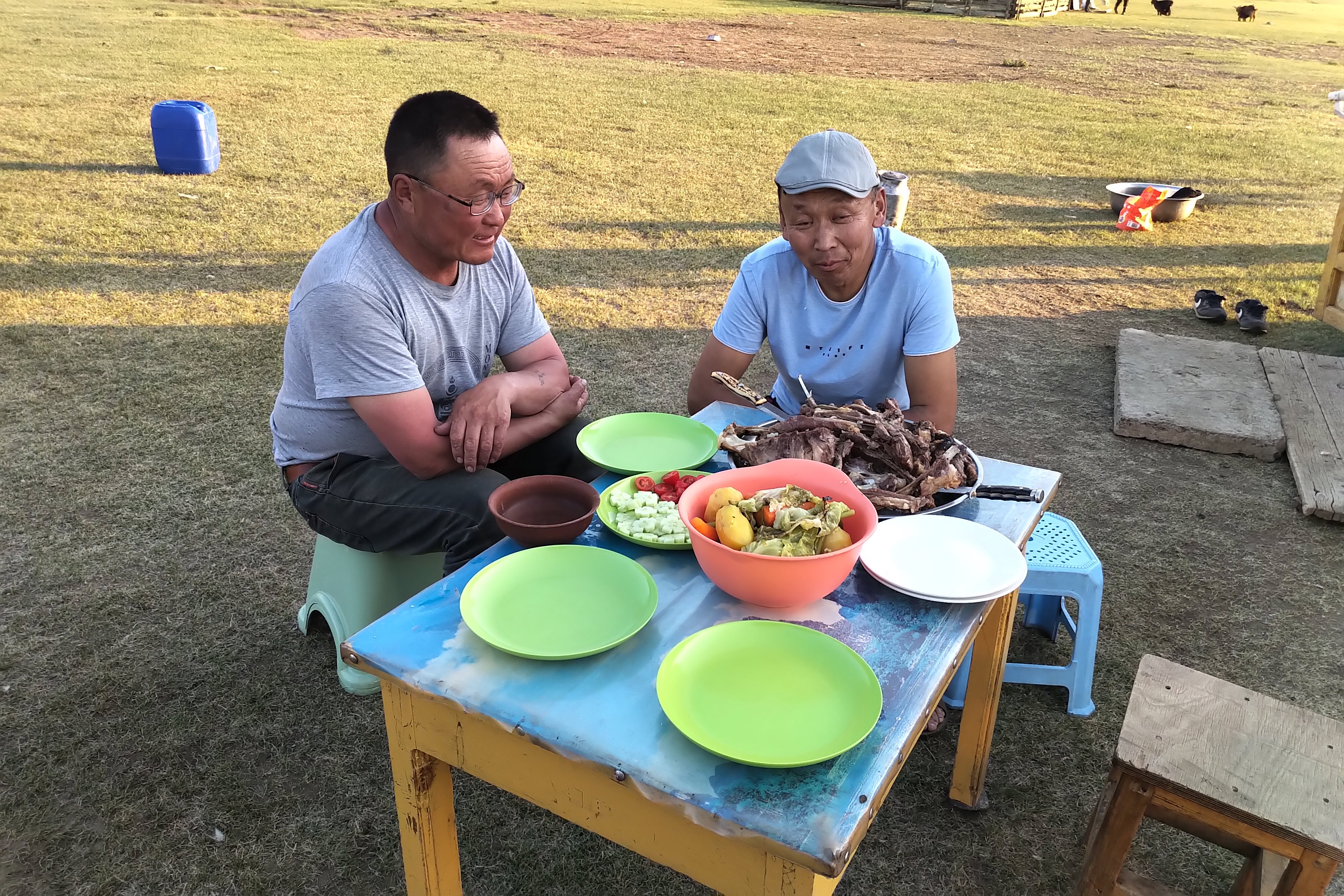
Dinner is served. Only utensil used are knives.
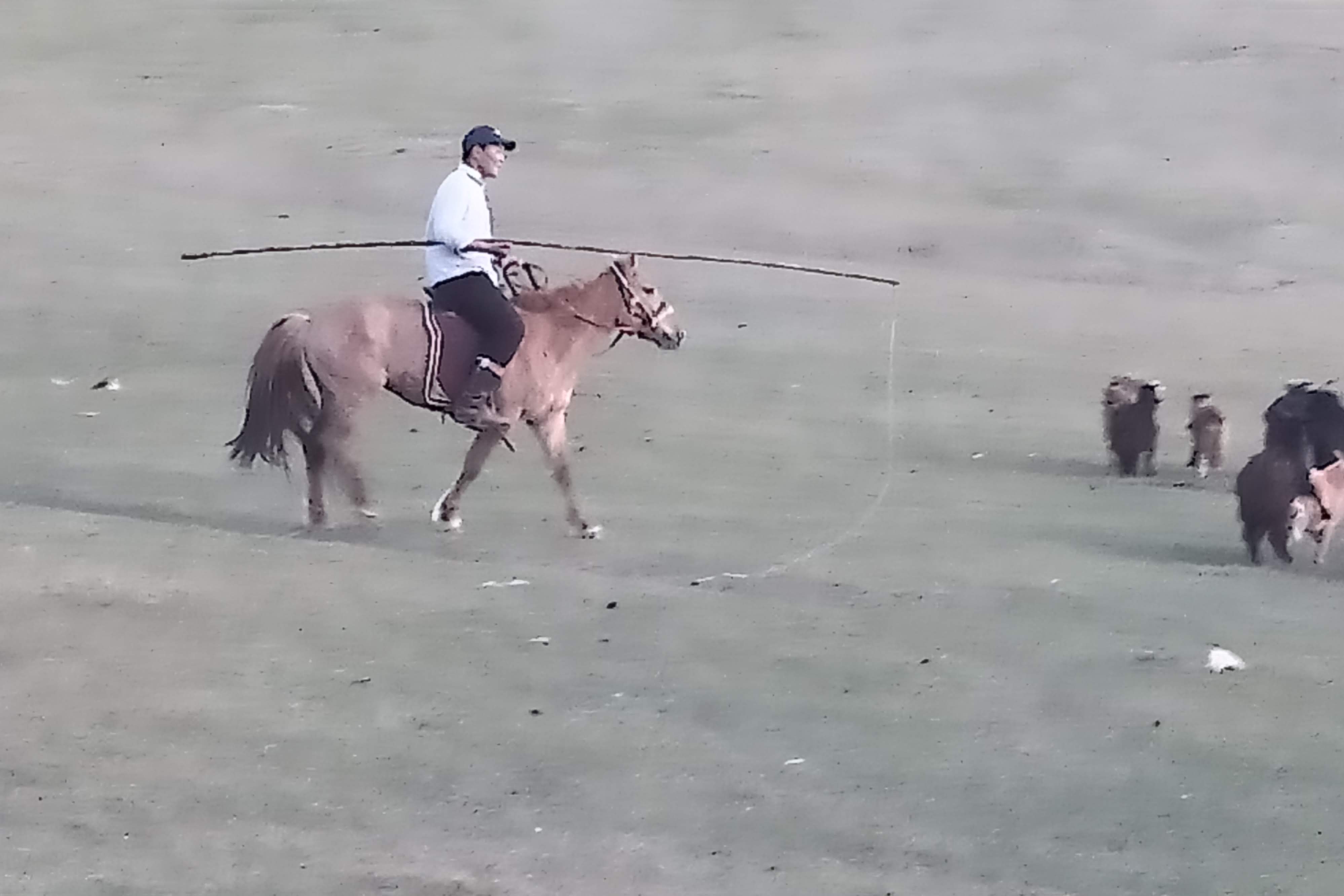
After dinner round up.
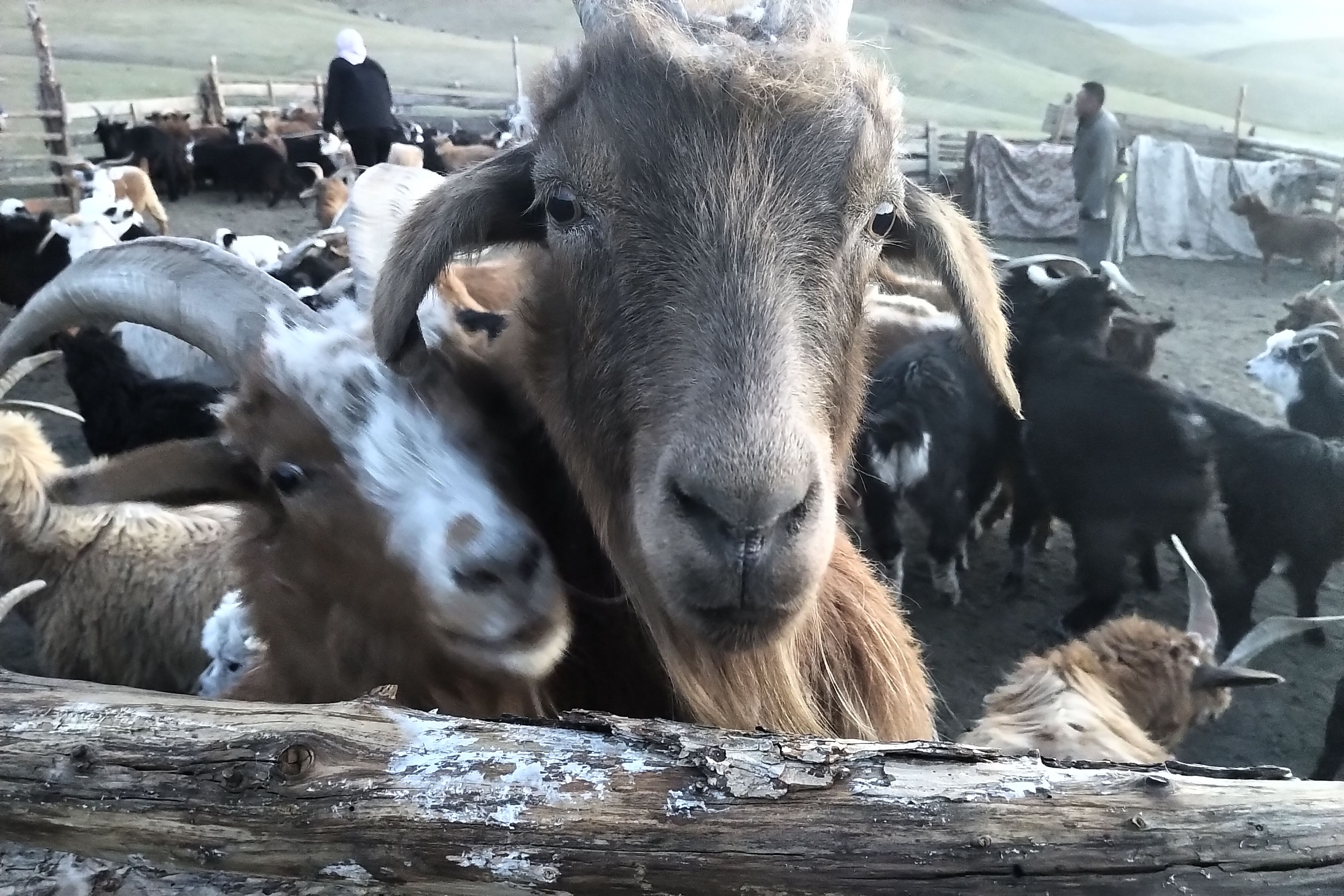
All the animals were pretty friendly. This goat reminds me of Bogart, our Westie.

Trying to remain warm, awaiting dinner. I bought the jacket in Nur-Sultan, but would have frozen you know what off if I didn’t have it in Mongolia.
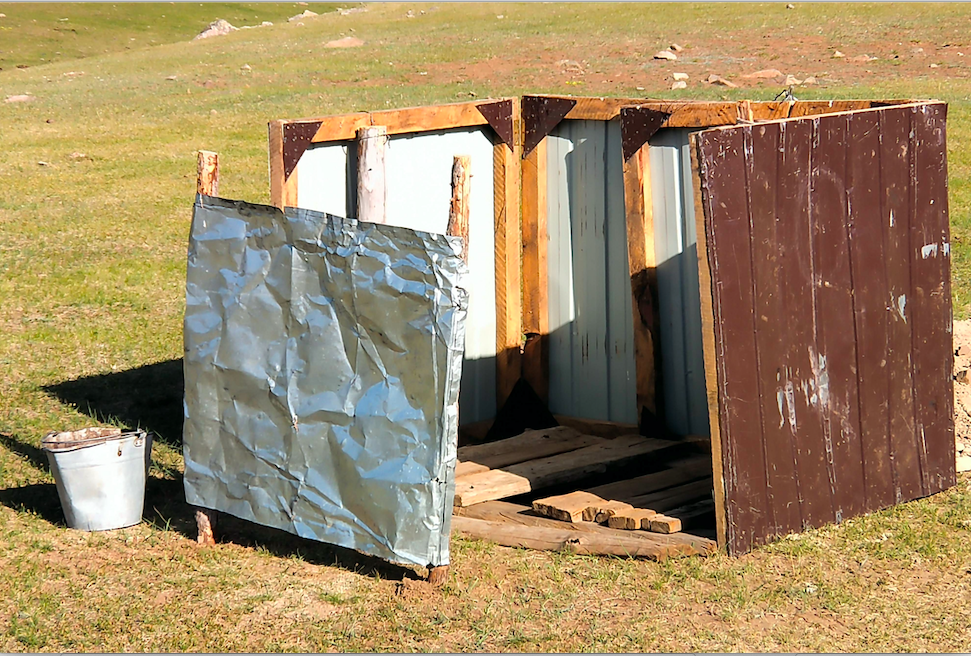
This is a Mongolian outhouse. This particular model comes up to one’s chest. Notice the missing plank in the floor? There will be no reading a magazine while doing #2 here. I count my blessings that I didn’t fall in, drop anything, or miss the target. The idea of using a Mongolian outhouse several times a day is daunting, perhaps even frightening. In summer, it’s a doable but carefully planned endeavor. I can’t imagine using one in the winter: ))
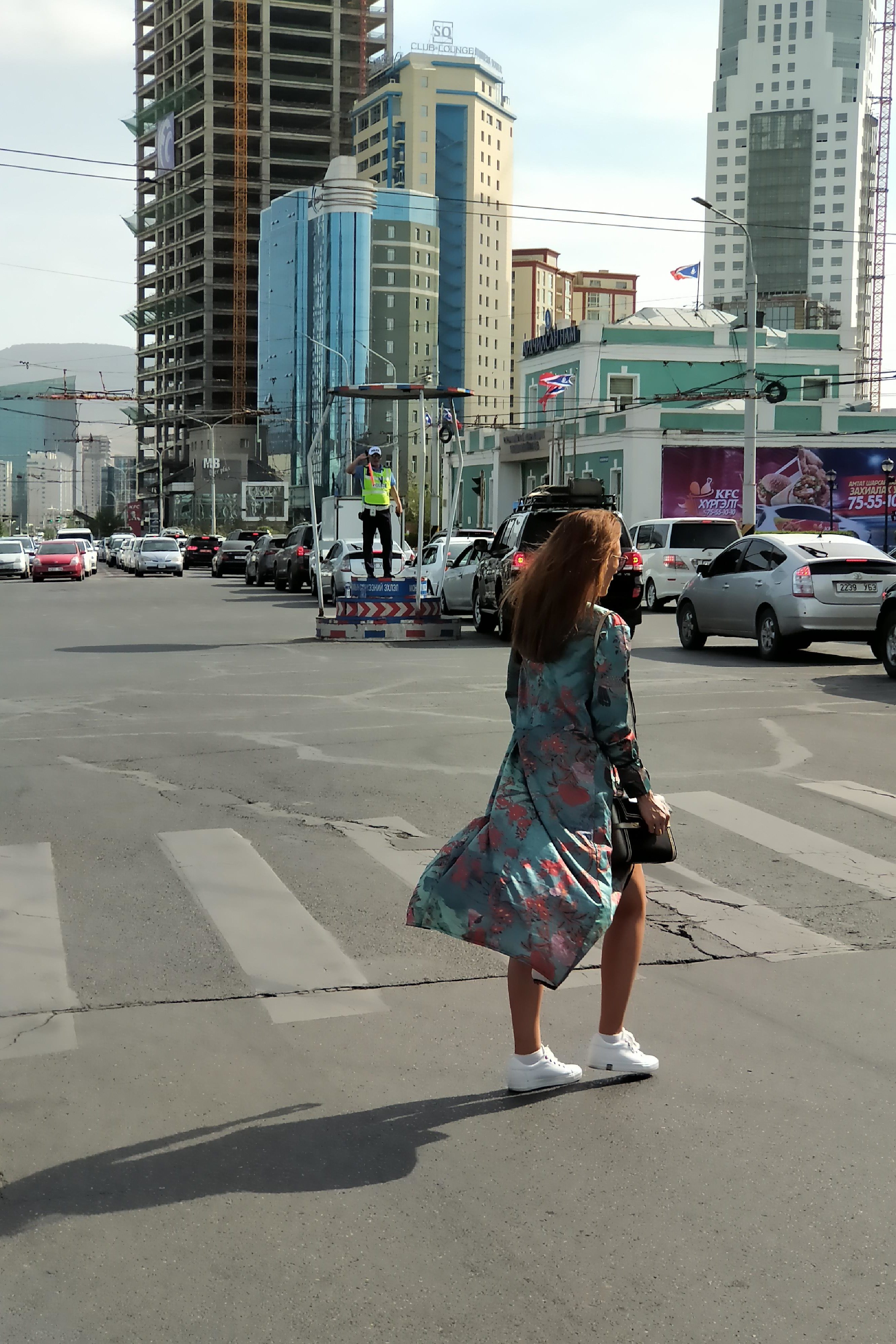
We spent one night in Ulaan Baatar, Mongolia’s capital city of 1.5M people (there’s only 2.5M in all of Mongolia). It strikes me that even in the furthest city I can think of, everyone is much the same. Here a young lady crosses the street and you wouldn’t know where she lives without this caption.
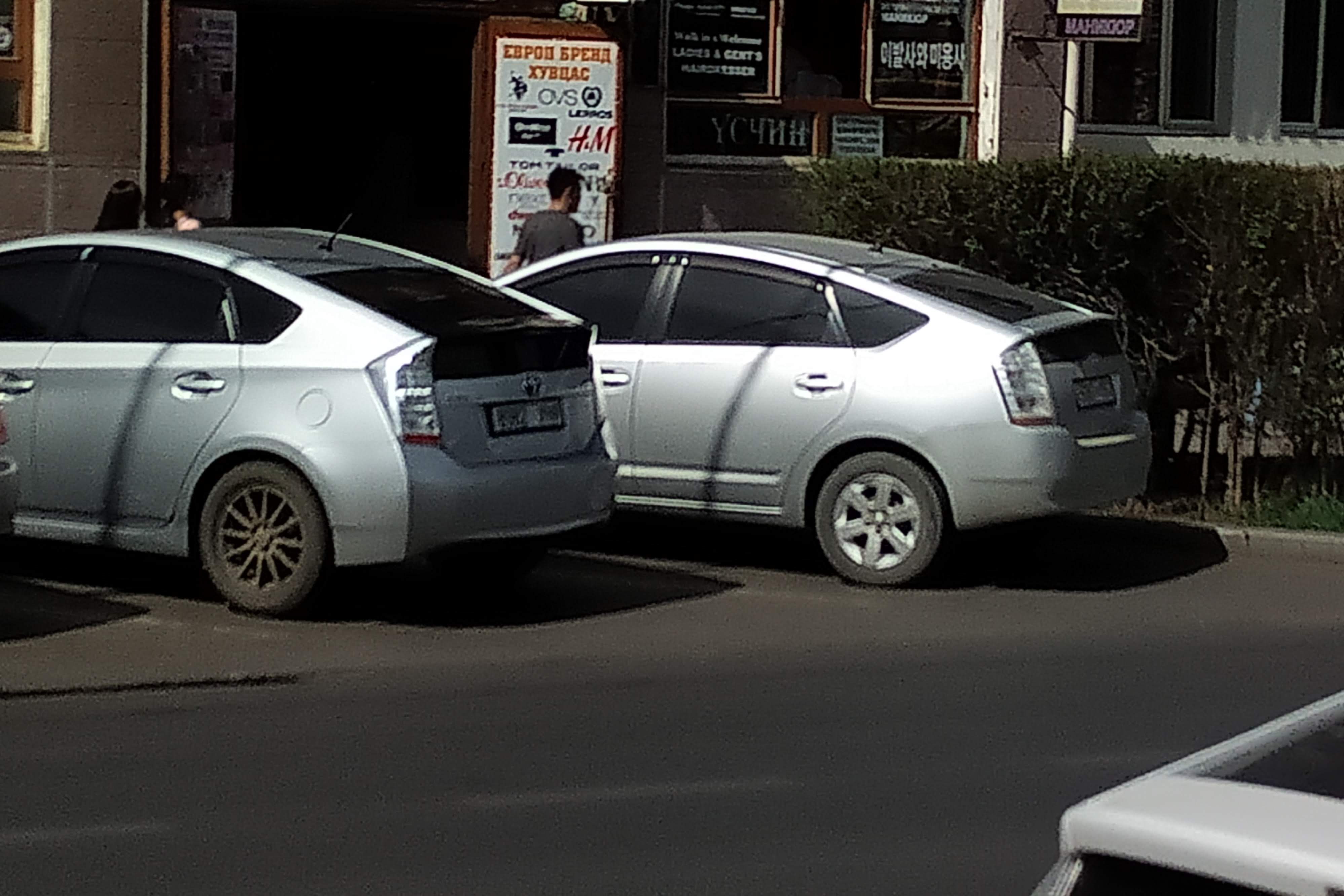
The Prius Capital of the World. I’ve never seen so many Prius’ in one place. It seemed that 1/2 of all cars were Prius’! This is a good thing as Ulaan Baatar is one of the most polluted cities in the world. During the winter, they burn anything/everything to keep warm.
China
The Cliff Notes Version. I was asked to speak on a panel at China’s largest Big Data conference on the future of work and cities, all of which I know little or nothing about. Who was it that said, “Often wrong, but never in doubt”? That’s my motto in these situations: ) Anyway, I was a part of the “Silicon Valley in Dialog with Data Valley” delegation to this conference in Guiyang, China, which is a rather small (5M) 3rd or 4th Tier City in Southwest China. It was a hit and run kind of event since we literally flew in at 2AM on Saturday and flew out at 7AM on Monday.
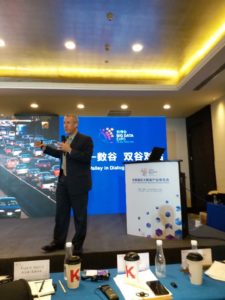
Boaz making a presentation on the future impact of technology on city governments.
The group included entrepreneurs, futurists and forward-thinking folks from government and business. It turned out to be a really good group, we did a couple of really interesting panel discussions and had a fun time exploring Guiyang on the last night. Even though they were from Germany, SF and LA, we all kind of clicked.
Guiyang and China:. I have very conflicted feelings about China and the Chinese folks I’ve met. I’ve been to China 2-3 times previously, but only to the Tier 1 cities of Beijing, Shanghai and Hong Kong. While Hong Kong is pretty and interesting, I’m not too enamored with Beijing and Shanghai, mostly because of the depressing pollution and the always-present oversight of the Chinese government. Everything about China’s government is pretty antithetical to us Americans. But, that’s probably MY problem as most of the Chinese people I see and interact with seem pretty happy. This is a much longer discussion for a different time, so let’s just say that much of China’s way of governing isn’t for me.
So it was pretty surprising when I fell in love with the city of Guiyang! It’s mountainous, green, has at least one river running through it, and is pretty interesting architecture wise. Its the first night out that I’ve had in China that I wasn’t totally aware that we were in China. It seemed like just another city in some part of the world where the language and visual sightings were different, but the rest felt comfortable. I tried more “real” Chinese food this trip than in all my previous trips combined and liked most of it. I even saw KR try a piece or two:)
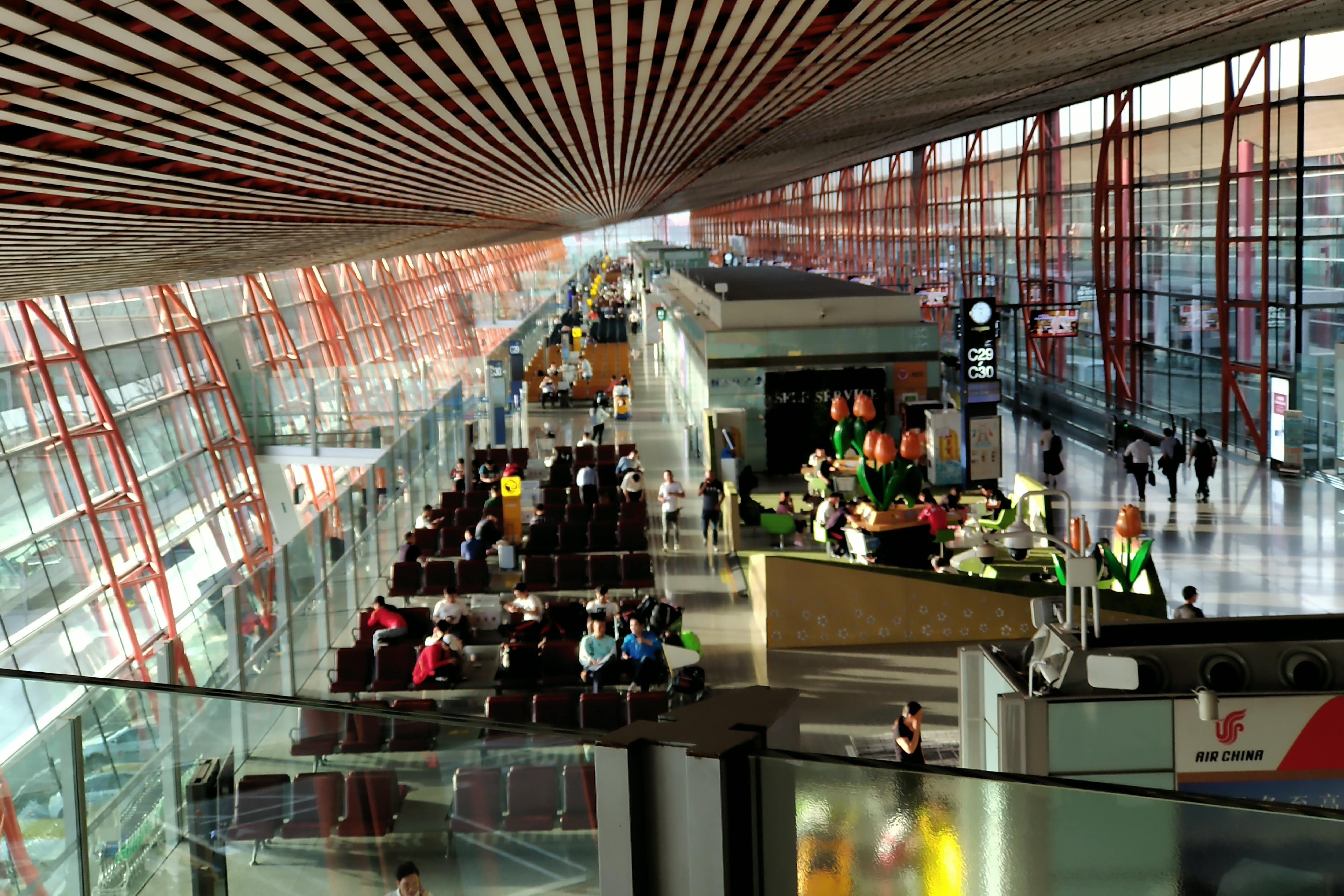
This report wouldn’t be complete without at least one picture of the 10 airports we visited. This is Beijing’s airport, which we visited four times.
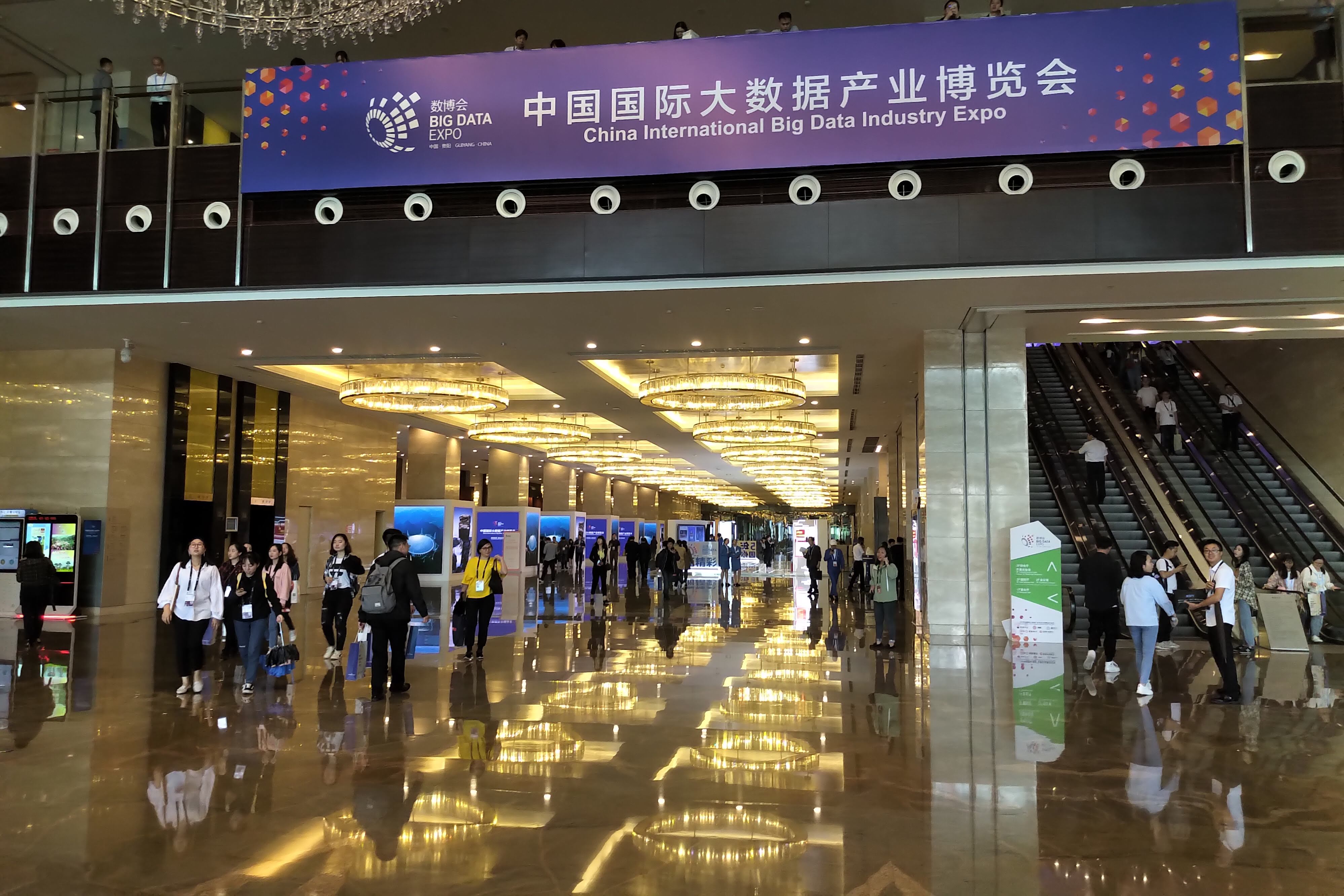
Big Data conference was….big.
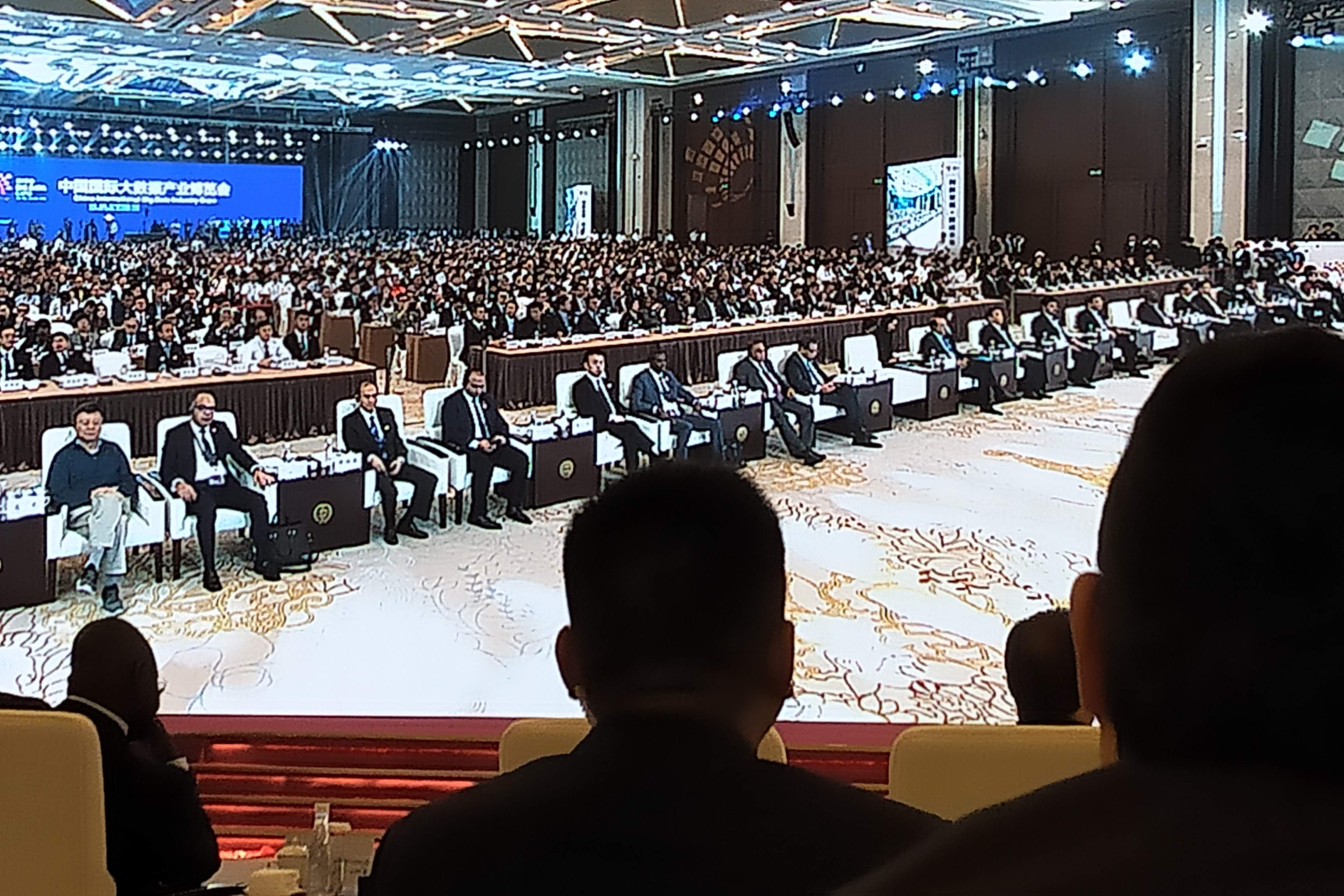
Just like an airplane, you want to be in the leather. The closer to the front, the more VIP you are. We were relative VIPs, sitting a couple of rows back with our own name plates, etc.
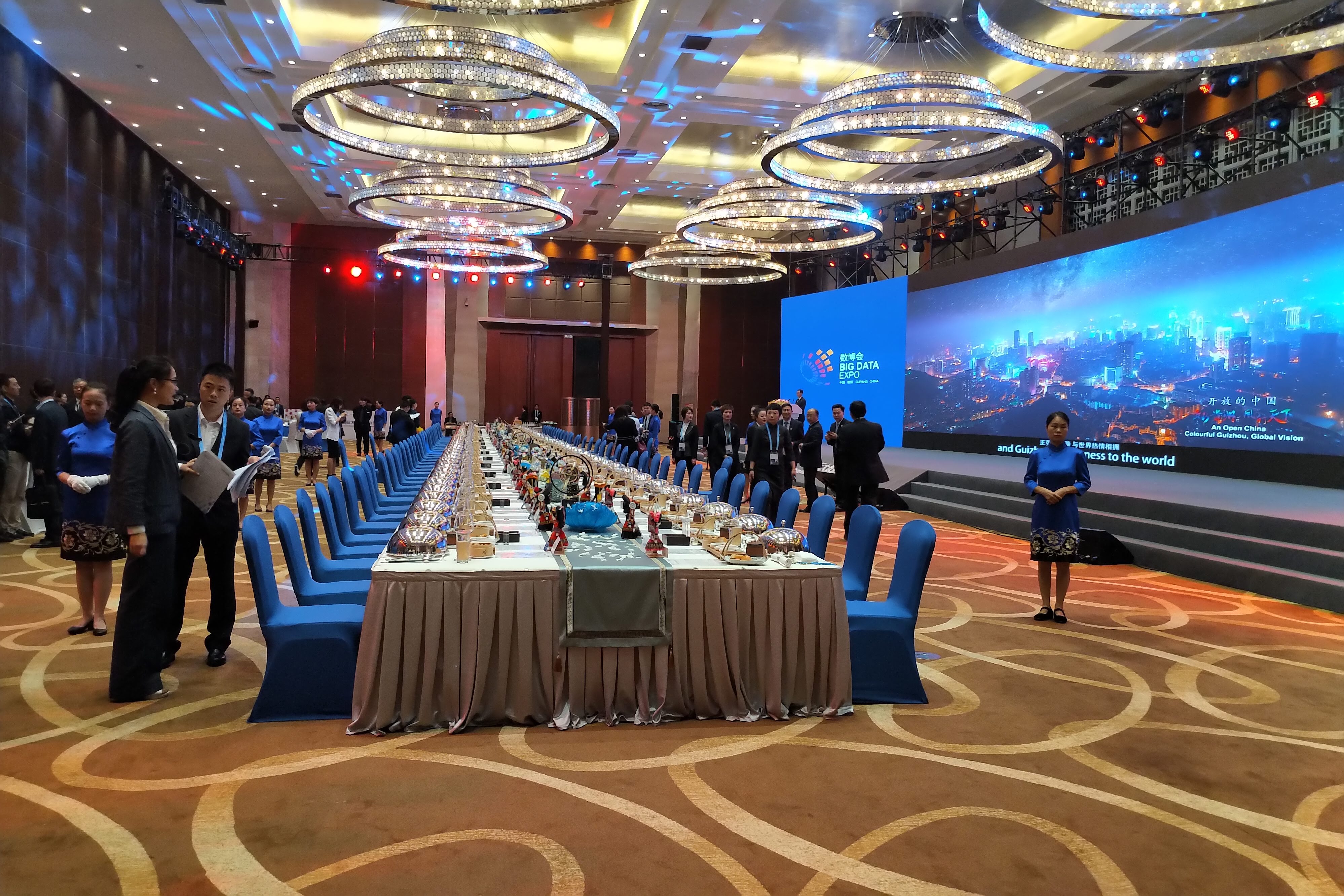
Remember the dining room table in Mongolia? This was the table setting for the Big Data Gala Dinner a couple of nights later: ). Once again, we didn’t make the main table as we sat off to the side in the kiddies table. But it was interesting to see.
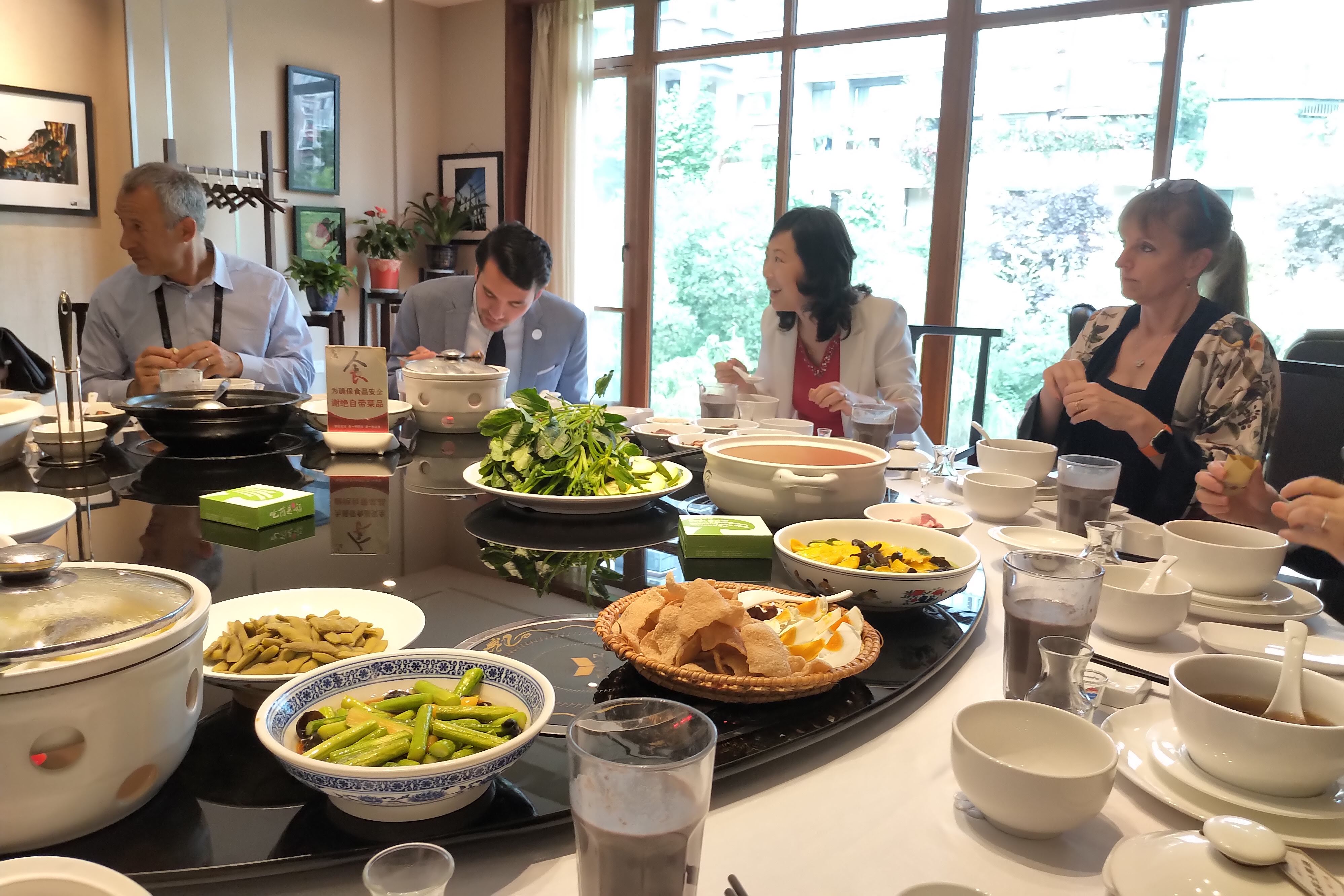
More typical setting: “Lazy Susan.” The good news is that you can wait for the dishes you like to come around again. The bad news is that just keep coming around. Great food the entire visit.
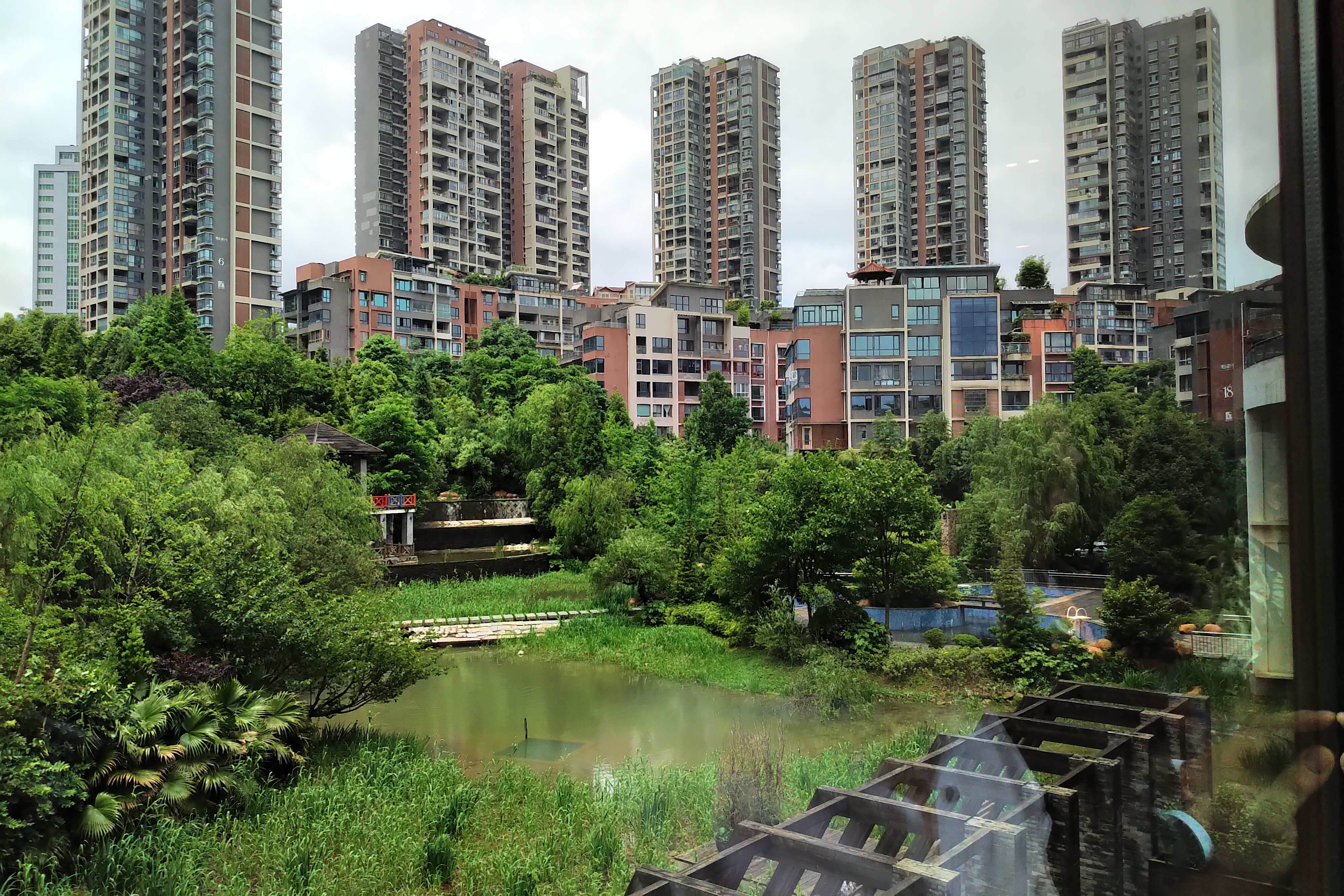
Quick shot out the back of a building into the yards of nearby apartments. This shot does not do Guiyang justice, but I’ve never seen a shot like this is Beijing or Shanghai with so much green.
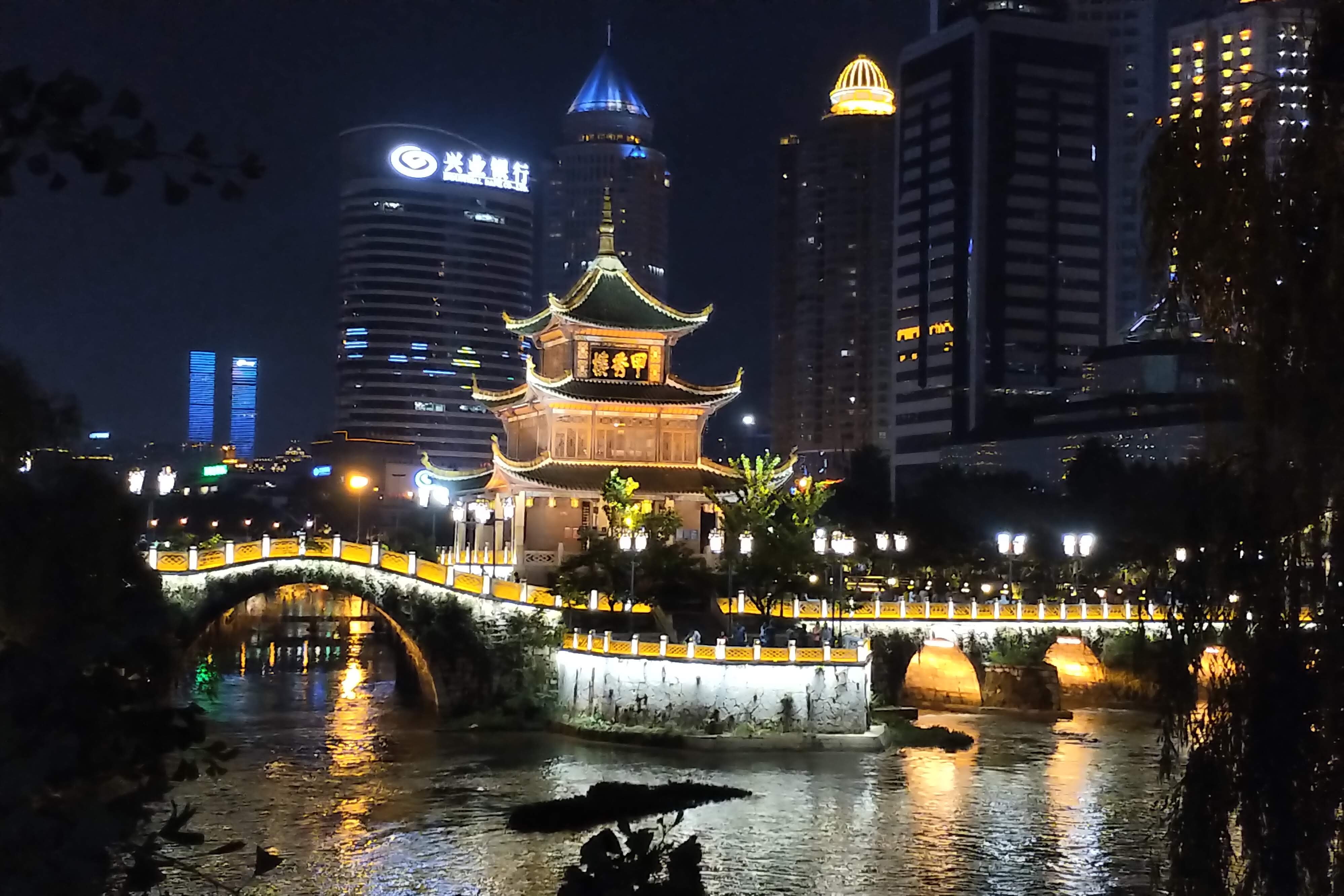
This isn’t typical either, but real none the less. Our last night was spent exploring the night life of Guiyang.
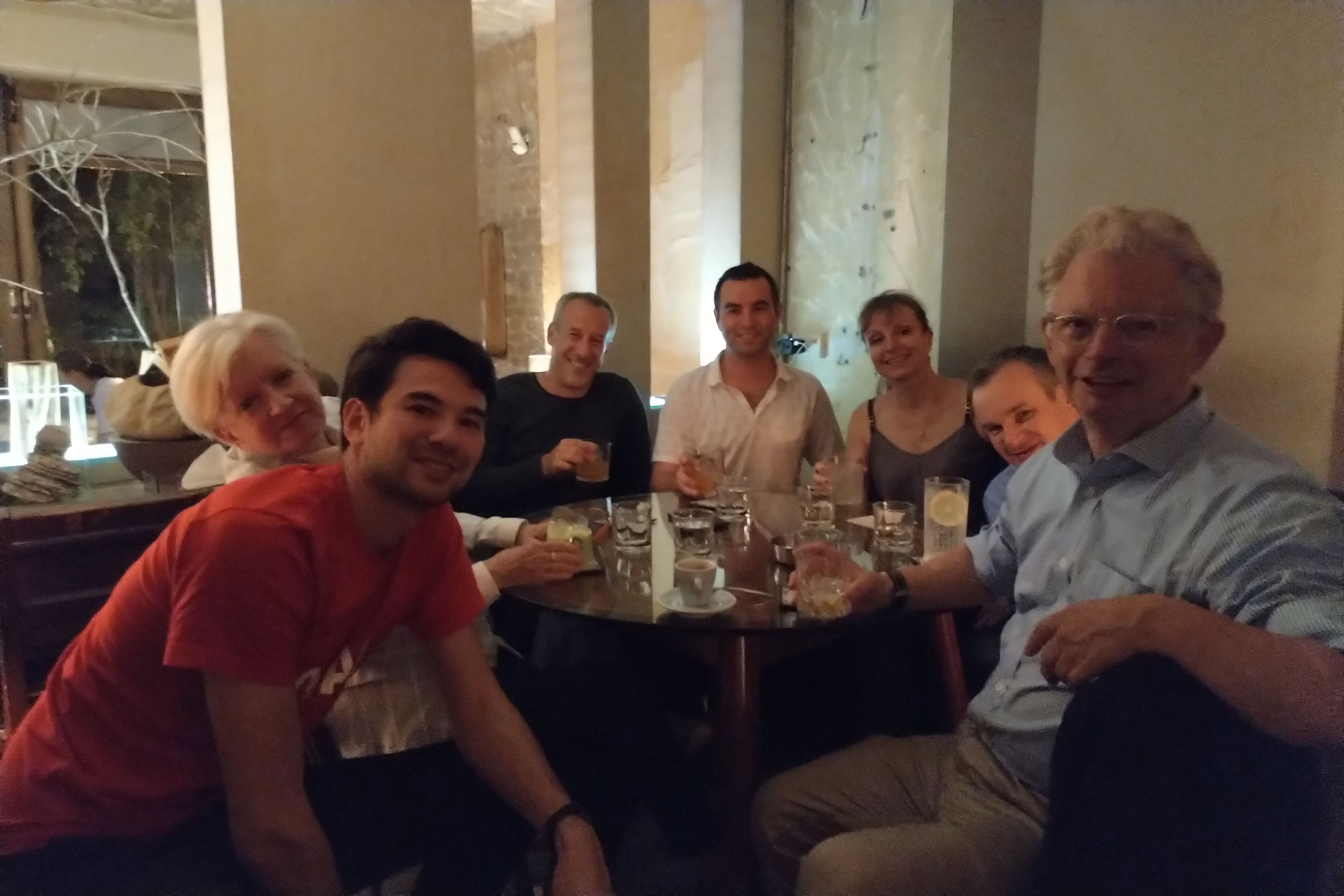
The Big Data crew. Karen, Chris, Boaz, Zak, Catherine, Dave and yours truly. This is a bar off a back alley that we happened on while looking for a taxi.
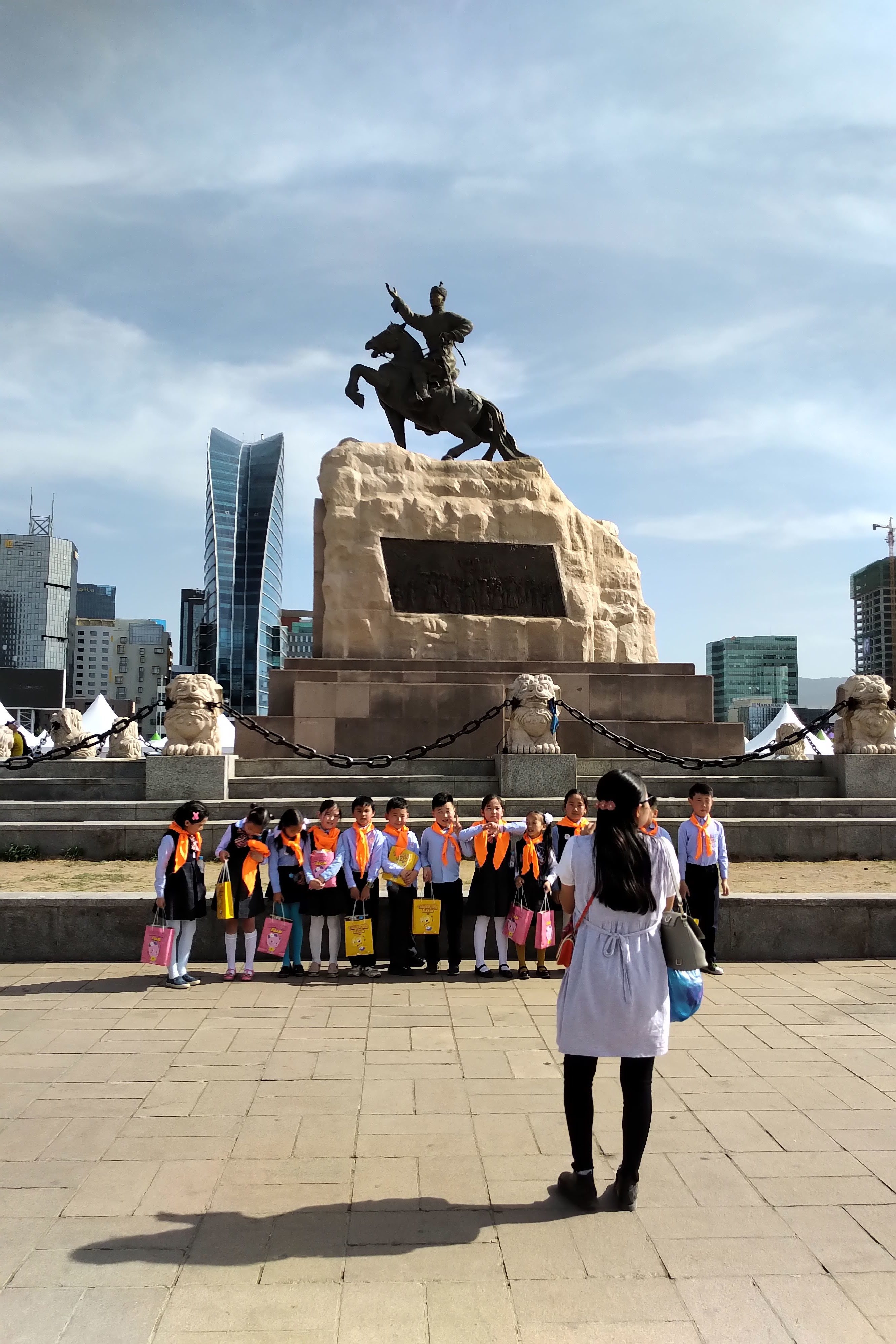
I will leave you with this picture of some children in front of a statue of Mongolia’s #1 Dude: Genghis Khan. Around 1200 BC, Genghis ruled much of the known world. Now, Mongolia is just a blip on the geographical map. Same for the Roman Empire. It strikes me that we’re all very temporary. The US has been dominant for the past 100 or so years. Maybe China will be in the next hundred or so? Nations have always been fighting and conquering each other. Yet, the more we travel far and wide, the more I’m convinced that we’re more alike than we are different. Most of us live with governments that rarely touch our day-to-day lives, work day to night to eat and prosper, and raise our families. City dwellers in Ulaan Baatar have more in common with city folk in Brisbane than those living on the steppes of Mongolia. As a famous Los Angeleno once said, “Can’t we all just get along?” I hope so.
Congratulations if you’ve made it this far! You’re probably as tired as we were.
Until the next time.
fred
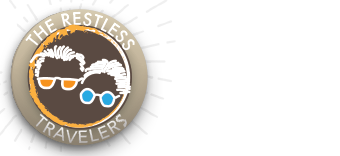

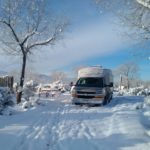

It was a pleasure spending time with you in Guiyang, Fred and Karen. Nights in a yurt are fun! We had a few near SayRam lake in the province of XinJiang. https://maorfamilychina.shutterfly.com/8093
It was a pleasure spending time with you in Guiyang, Fred and Karen. Nights in a yurt are fun! We had a few near SayRam lake in the province of XinJiang. https://maorfamilychina.shutterfly.com/8093